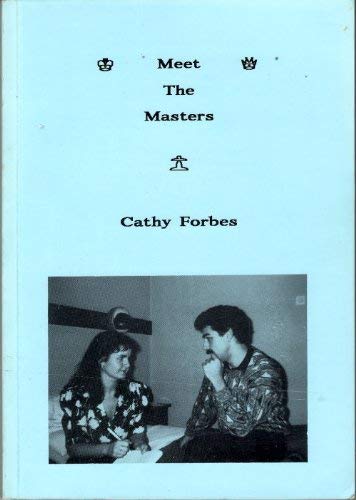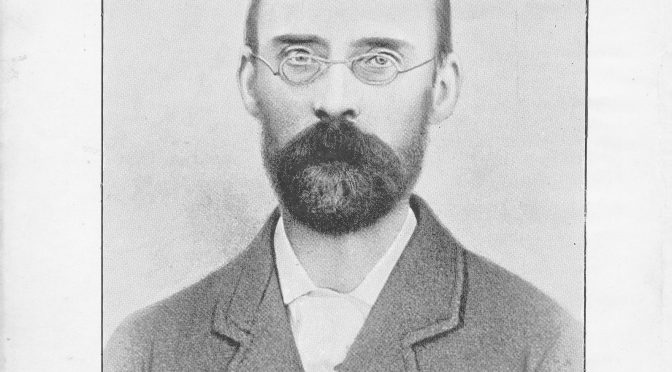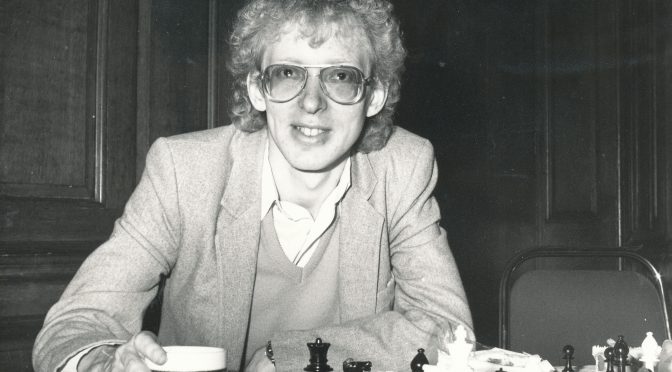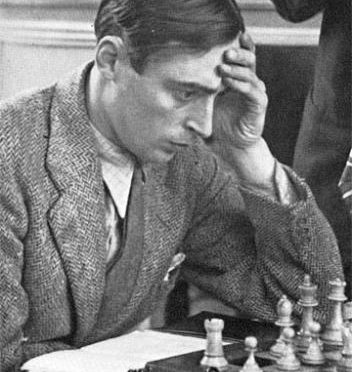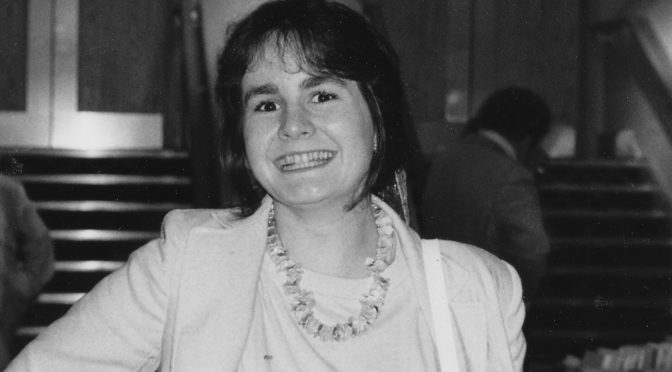BCN remembers Richard Griffith who passed away on December 11th, 1955.
Category Archives: Journalism
Remembering Amos Burn (31-xii-1848 25-xi-1925)
We remember Amos Burn who passed away on November 25th, 1925.
Amos Burn was born in Kingston-Upon-Hull on Sunday, December 31st 1848 to Amos and Mary Burn (née Webster). His father is recorded as a merchant. Amos and Mary were residents of Bourne Street at the time of the birth.
On February 15th 1849 Amos was baptized in All Saints Anglican Church, Sculcoates, Kingston-Upon-Hull
Amos married Martha Ann Jäger in Birkenhead on Dec 27th 1879. They had two daughters Elsie Martha, born 24th Oct 1880 and Hilda Marian, born 26th Oct 1881.
For further detail of ABs family please consult the excellent Amos Burn : A Chess Biography by Richard Forster
From British Chess Magazine, Volume XLV (45, 1925), page 491 we have this brief obituary notice (presumably written by RC Griffiths:
“Chessplayers all over the world will regret to hear that the well-known chess editor of The Field died in his flat at Luexembourg Gardens, Hammersmith, on November 25th, after a stroke the previous day, at the age of seventy-seven.
From British Chess Magazine, Volume XLV (45, 1925), page 491 we have this brief obituary notice (presumably written by RC Griffith:
We regret that as our December magazine is already paged we must leave an obituary notice and an appreciation of all he has done for Chess till next month.”
From British Chess Magazine, Volume XLVI (46, 1926), page 9 we have this detailed obituary (written by JH Blake:
“We had only just time last month to announce the decease of this famous player and chess editor. On the afternoon of 24th November he was at the City of London Chess Club in to all appearances normal health; he took a fellow-member home with him, and after completing the annotation of a game for his paper, was chatting with his guest when the fatal seizure overtook him; he never fully recovered consciousness, and died the following afternoon. He was buried at Hammersmith Cemetery on the 27th November.
Amos Burn was born at Hull on the 31st December, 184B. By way of coincidence, no less than three of the band of English chess masters were sons of the Yorkshire port, the other two being Boden (over twenty-two years senior) and Wisker (very little older than Burn).
In his early teens he was apprenticed to a firm of Liverpool cotton brokers. Most of the year l870 was spent in London. At least once, and probably three times in his life, he made prolonged business visits to America; the occasion as to which there is most certainty was about 1893-5, when he was a year or two at Chicago; Liverpool information puts another visit about 1902-3 (which would account for his non-participation in the Monte Carlo tournaments); and hints dropped by himself point to such a visit in 1882-3 ; this would account for his not competing in either event at the London congress of 1833, and for the non-inclusion of his portrait in the large group picture painted by A. Rosenbaum about 1882, and now hanging in the City of London Chess Clubroom. Upon returning to England he always settled down again in business at Liverpool, where he
was occupied, for some time at any rate, in sea insurance. From which it will be seen that at no time of his life was he dependent upon chess-playing as a means of livelihood; although it is difficult to resist the impression that at some periods, particularly 1886, 1B89 and 189B, the claims of business sat very lightly upon him.
His initiation into chess was made at about sixteen years of age, and is to be credited to John Saul, of the Liverpool Chess Club, who took great pains with his pupil, and is believed to have had much influence in the early formation of a sound style. So apt was the pupil, so thorough the teacher, that when in 1867 he joined the Liverpool Chess Club, he was placed at once in the Pawn and move class, and one of his earliest club exploits was to win the club handicap tournament; a rise not much less phenomenal than that of Blackburne at Manchester a few years earlier.
During his stay in London in 1870 he joined the City of London Chess Club, playing for it in a match with the Westminster Chess Club, and joining in the winter handicap, where however, he was knocked out in an early round. He seized every opportunity of obtaining practice with the best players of the day, and no doubt it was during this period that he came under the influence of Steinitz, whose tuition he later in life gratefully acknowledged to have been invaluable to him, and whom he unhesitatingly ranked as the world’s greatest player. During this year (and not 1887 as most notices of his career have stated) the first British Chess Association (Lowenthal’s) held a challenge cup tournament; Burn was a competitor, and tied for first prize with his townsman, Wisker, but was defeated in the tie-game. His next public appearances were at the annual tournaments of the Counties Chess Association, a provincial body formed for the express purpose of holding annual tournaments for about three classes of players, at some provincial town, and lasting one week; its principal tournament was, in the middle of the seventies, for a cup, to be held a year by the winner.
In 1873 Burn tied with Skipworth for first place (no tie-game was played), in 1874 he was first, in 1875 second (8. W. Fisher, late of the Battersea Club first), and first in 1876, this last victory making the cup his own. He did not appear in public play again until 1BB3, when (perhaps out of practice after a business stay in America) he was much less successful, only taking fourth prize at the Counties Association meeting at Birmingham.
The year 1886 marked his (rather late) entry upon the international tournament arena. The resuscitated British Chess Association held a masters’ tournament in London, in which Burn tied with Blackburne for first place, but lost the tie-game. From 1886 to 1912 inclusive he competed in twenty-two international tournaments;
we append a tabular statement giving all necessary particulars.
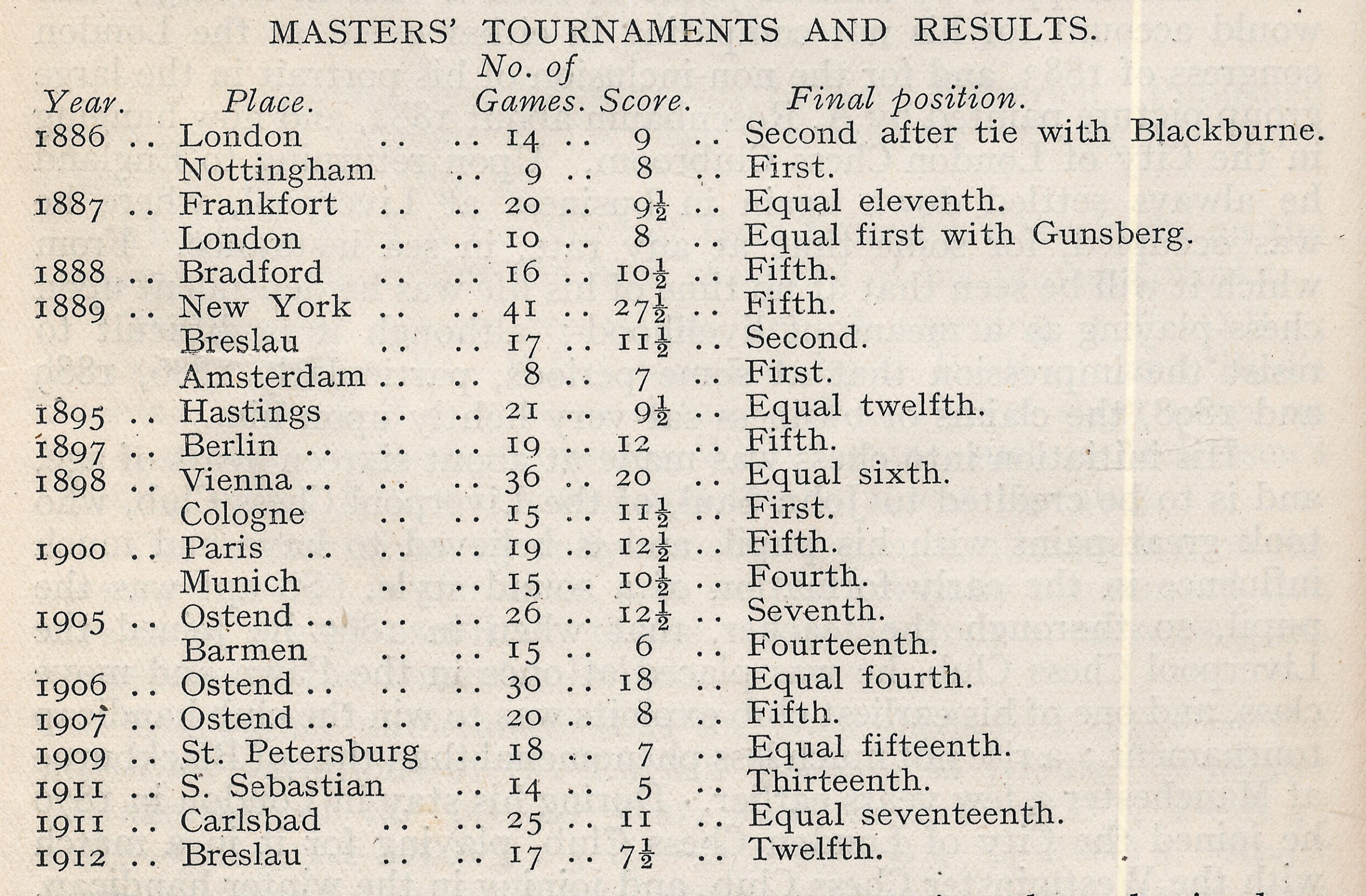
The greatest success was beyond all question that obtained at Cologne in 1898, where he was first to such renowned rivals as Charousek (second), Tchigorin (fourth), Steinitz (fifth) and Schlechter (equal sixth). But no mean place in the order of merit must be assigned to the second prize at Breslau in 18B9, where Dr. Tarrasch achieved the first of his great Series of successes, and such players as Bardeleben, Blackburne, Gunsberg, Mason and Schallopp were amongst the less successful competitors. The book of that tournament, in recognition of so striking a success, following upon the New York tournament with the Amsterdam victory treading closely upon its heels described Burn as the “tournament hero of the year”
In 1898 the Cologne tournament followed hard upon the long struggle at Vienna; these events of these two years go to prove his remarkable power of endurance : he fared best in the most prolonged. efforts.
During this period of international activity Burn did not altogether eschew competitors of a national or sectional character. Early in 1889 he won first prize in an Irish Chess Association tournament at Dublin, Pollock and Mason taking the next two places. In 1897-8-9 and 1901 he competed at Llandudno for the Craigside challenge cup, which he won three times in the four tournaments. He also won a Midland counties tournament at Birmingham in 1899, with Atkins second.
Of individual match play there is not much to record. A match with Bird in 1886 (two more opposed styles of play could hardly be imagined) was begun as one of five up, with the score at four all was extended to ten up, and was finally drawn by agreement with the score at at nine all. In the same year a match of five up with Captain Mackenzie was drawn with as score of four all; the curiosity of this
match is that Mackenzie won the first four games and Burn the last four. A match is known to have been played in 1875 with the Rev. John Owen, the leading player of the Liverpool club until Burn’s rise ; this Burn won by 11 to 6. Mr. Owen, however, told the present writer (about 1895) that he had contested several matches with Burn, who had not always been the winner; no record remains of these encounters; but as neither player had any love for the practice of recording the moves of a game during its progress its absence is not surprising. Similarly, a short match was begun with the Rev. A. B. Skipworth at his Lincolnshire rectory, somewhere in the late eighties, but whether finished is doubtful; probably the record of this is buried in the files of a Horncastle or Louth newspaper in which Mr. Skipworth conducted a chess column at the time.
Burn took part in the matches by cable with America on four occasions. In 1896 and 1898 he lost to Showalter; in 1907 he drew with Marshall; and in 1911 he defeated Marshall (who was then in London) over the board.
His connection with the Liverpool Chess Club lasted from 1867 until his death. He served the offices of librarian in 1877, vice-president in 1880, president in 1881, 1888, 1890, 1891, 1892, 1908, 1909, 1910 and 1911. In 1887 he was elected an honorary member retaining that qualification until then end. In 1888 he was presented by the club with a handsome chessboard and set of chessmen, the box bearing an inscribed silver plate, in recognition of the tournament successes he had already achieved, and as a token of the high esteem in which he was held by his fellow members.
As a chess journalist Burn commenced in 1871 when he edited
a column in the Liverpool Weekly Albion, how long this continued we do not know. In 1911 he became chess editor of the Liverpool Courier. His annotation of games for this column attracted wjde-spread notice and was much quoted both at home and abroad. When therefore, on the death in 1913 of Leopold Hoffer, Burn was appointed to The Field, it was to the general satisfaction of British chessplayers everywhere. His treatment of the games published in that paper was of the most sound and reliable character, and no pains were ever spared to arrive at the inner secret of the most intricate position. The high standard set by Steinitz when editing the same column thirty to forty years before, was worthily maintained by his quondam pupil on becoming his successor.
Burn’s style of play was solid and prudent rather than aggressive; he has more than once mentioned with pardonable pride that amongst his peers of master rank he was chiefly famed for “stubborn defence.” A favourite aphorism was, “The player who combinates is lost !” Nevertheless it is to be at least suspected that this was
the result of his early chess education and a strong power of self-control rather than of his predilections. An oft-repeated saying, perhaps the one which will be in London longest remembered, was “toujours attaque” ; his preference for being first player was stronger than that of most players, strong as that often is; and when shown
a game or position he had very little hesitation in taking sides, almost always with the attack; only with the defence when his initial judgment told him that unsoundness was afoot. But “counterattack is the soul of defence,” and in that he could be terrible. A collection of, say, twenty of his best games would probably yield a large pre-
ponderance of Black as his side. Once interested in a game (or position) his concentration upon it was of the most intense kind, and could only with difficulty be diverted. Even in skittle play, a cup of coffee, ordered at the start, would stand at his elbow unnoticed; was the opponent at some point long in moving he would suddenly become aware of its presence, and lift the cup; but let the opponent at the same instant raise his hand to move, back went the cup to the table untasted, and the beverage would be eventually consumed quite cold. His pipe fared little better; badly loaded, it took innumerable matches to light, was laid down after a few puffs, went out, and was
re-lit with the same difficulty. Did a friendly onlooker hint that a difference in the loading of the pipe would save much trouble, he would, if he succeeded in gaining attention, be quietly and painlessly extinguished with “How long have you been a smoker ?” The same intensity of concentration was carried into his work for the Field, and it is known that he often sat through the small hours of the morning to complete an analysis rather than interrupt the current of his ideas. Had he but spared himself in this respect —!
Of short figure, slight frame, and abstemious in habit, he was remarkably ” wiry ” ; at 77 his head of hair was quite untouched by the hand of time, and but for the grizzling of the beard he would have passed for no more than sixty. Perhaps a little difficult of approach by strangers, when his attention and interest were once gained he was the soul of courtesy, and would take unstinted trouble to oblige his interlocutor, or to help a colleague.
At the chessboard his courtesy to his opponent was perfect; he “played the game” in the best sense of the words; and his tribute to Blackburne’s chivalry as an opponent was worth the more because it accorded with his practise. With him passes the last of the line of English great masters!
In 2006 an article by WD Rubinstein was published in the Oxford Dictionary of National Biography
From The Oxford Companion to Chess (OUP, 1984), Hooper & Whyld :
“One of the world’s top ten players at the end of the 19th century. Born in Hull : he learned chess when 16, came to London at the age of 21, and rapidly established himself as a leading English player, A pupil of Steinitz, he developed a similar style; both he and his master were among the world’s best six defensive players, according to Nimzowitsch. Not wishing to become yet another impecunious professional. Burn decided to put his work (first a cotton broker then a sugar broker) before his chess, and he remained an amateur. He made several long visits to America, and was often out of practice when he played serious chess.
Until his thirty-eighth year he played infrequently and only in national events, always taking first or second prize. From 1886 to 1889 he played more often. In 1886 he drew matches with Bird (+9-9) and Mackenzie (+4=2-4); at London 1887 he achieved his best tournament result up to this time, first prize (+8—1) equal with Gunsberg (a play-off was drawn +1=3—1); and at Breslau 1889 he took second place after Tarrasch ahead of Gunsberg, After an isolated appearance at Hastings 1895 he entered another spell of chess activity, 1897-1901, The best achievement of his career was at Cologne 1898, first prize ( + 9=5-1) ahead of Charousek, Chigorin, Steinitz, Schlechter, and Janowski. At Munich 1900 he came fourth (+9=3—3). His Last seven international tournaments began with Ostend 1905 and ended with Breslau 1912. A comparative success, in view of his age. was his fourth prize shared with Bernstein and Teichmann after Schlechter, Maroczy, and Rubinstein at Ostend 1906; 36 players competed in this five-stage event, 30 games in all for those who completed the course.
Retired from both business and play he made his home in London and edited the chess column of The Field from 1913 until his death. A shy and retiring man, a loyal companion to those who came to know him, he freely gave advice to young and aspiring players.”
The front cover of the November 1975 issue of the British Chess Magazine featured Amos Burn :
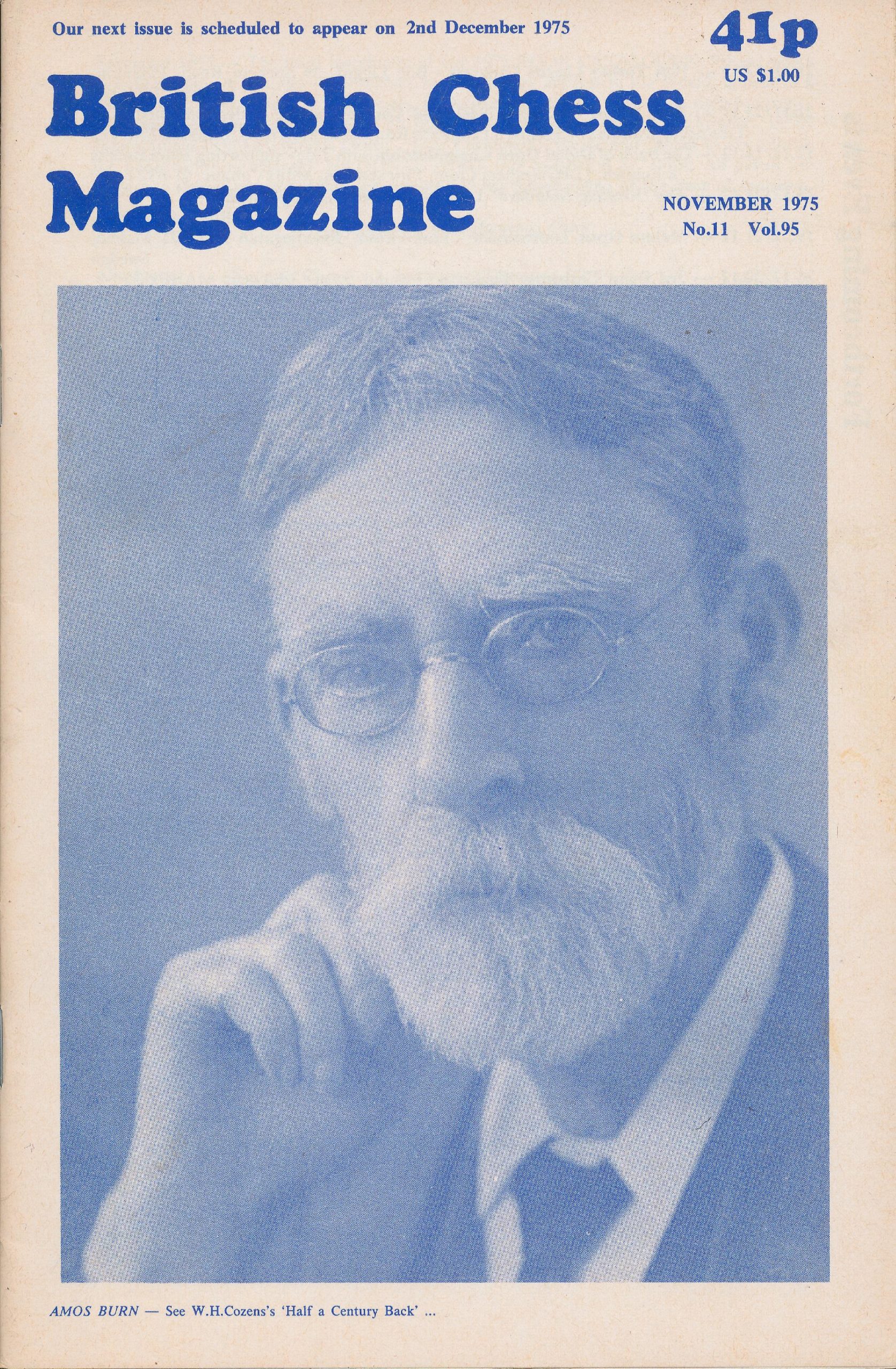
From British Chess Magazine, 1975, November, pp. 481-483 :
Half a Century Back
Chess in 1925
by W.H. Cozens
Amos Burn was a very different figure and his career is poorly documented. He is overdue, not for a reappraisal but simply an appraisal, He was born (in Hull) in 1848 – an incredible 127 years ago. All the years that could have been his prime as a chessplayer he devoted to business. (Marine insurance was his speciality.) He was based in Liverpool but travelled considerably, including several crossings of the Atlantic – quite an undertaking in those days. He played some casual chess, soon overshadowing the Rev. John Owen to become Liverpool’s answer to Manchester’s Blackburne. He also played for the City of London Chess Club; but it was not until he was nearly 40, presumably with his financial position secured, that he entered the international chess arena. Between the ages of 38 and 64 he played in 22 international tournaments. At Breslau (1889) he was second to Tarrasch, above Louis Paulsen, Blackburne, Schallop … In Amsterdam the same year he was first, ahead of Emanuel Lasker. His finest achievement was first place at Cologne 1898, in front of Charousek, Chigorin, Steinitz, Schlechter et al., (16 in all) with a win against Steinitz. The lack of a book on Cologne 1898 is – since the publication of Mannheim 1914′: the biggest gap in tournament literature.
At Karlsbad 1911 he defeated not only the winner, as mentioned above, but also Alekhine, whom he steered into a knight versus bad bishop ending. His style was unashamedly modelled on that of Steinitz, and marked by extreme tenacity. To him is attributed the epigram ‘He who combinates is lost’. He could play a combination when in the mood but he much preferred to let the opponent break his own back by attacking too impetuously. Nimzowitsch wrote: ‘The number of really great defensive players is very small’, adding that he knew of only six: Steinitz, Emanuel Lasker, Burn, Bernstein, Duras and Louis Paulsen.
In the 1911 Cable Match between G.B. and the U.S.A. Marshall came from San Sebastian straight to London and asked permission for his top board game to be played over the board. When he found that his opponent was to be the 64-year-old Amos Burn he must have smiled, for he had twice defeated him resoundingly – at Paris 1900 (also having some fun at Burn’s expense in his annotations to the game) and again at Ostend 1905. This time he was in for a shock. Within twenty moves the old man had won his queen for two pieces. Marshall played on, probably with a red face, until move 37, rather than have his loss cabled home too early. Against Burn he might have spared himself the trouble.
Burn was a superb annotator. His work, notably in ‘The Field‘ from 1913 on, sets a standard to which one looks back nostalgically in these days of hieroglyphics. The day before he died, at the age of 77,he had been at work on analysis and annotation. Tournaments were now plentiful enough for it to be possible to pick out the band of regular professionals, and to assess their prowess. Tartakower was placed 2, 5, l, 5; Reti 5, 5’ 5,-11; Grunfeld 4,8,8,9; Nimzowitsch was erratic with 1,2,9; so was Rubinstein with 1, 2, 3, 12. Marshall was consistent with 3, 4, 5. Lasker, Capablanca and Alekhine appeared once each – with distinction, of course.”
The Burn Variation is a line in the french defence dating from the 1870s, played regularly by Burn at the tournaments of Hastings
1895, Cologne 1898, and Vienna 1898. More recently it has been favoured by Petrosyan.
From The Encyclopedia of Chess (Robert Hale, 1970 & 1976), Anne Sunnucks :
“A leading British player of his day, Amos Burn was born in Hull on 31st December 1848. He learned the game when he was 16 and an apprentice with a firm of Liverpool cotton-brokers, but it was not until 1886 that he achieved his first major tournament success by coming 2nd in the London tournament and 1st at Nottingham. These results gained him an invitation to Frankfurt 1887, which marked the beginning of his career as an international player.
Burn’s greatest successes were 1st at Amsterdam 1889, ahead of Lasker, 2nd at Breslau 1889, behind Tarrasch but ahead of Mieses, Von Bardeleben, Bauer, Gunsberg and Paulsen; and 1st at Cologne 1898, ahead of Charousek, Steiniitz, Tchigorin and Schlecter.
After the St. Petersburg 1909 tournament, Burn’s results began to deteriorate and he finally retired from tournament chess after the Breslau 1912 tournament.
From 1913 until his death, Burn was chess editor of The Field. He died on 25th November 1925.”
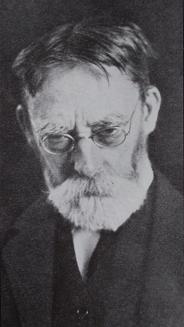
From The Encyclopedia of Chess (Batsford, 1977), Harry Golombek OBE :
“British Grandmaster and second only to Blackburne in late nineteenth-century British chess. He was born in Hull and learned to play chess at sixteen, but devoted little time to the game at first, preferring to establish himself in a commercial career.
He returned to chess in his middle thirties, his first major national success being first prize at Nottingham 1886 and second prize at London 1886. Within three years he had gained an international reputation by winning at Amsterdam 1889, ahead of Lasker, and finishing 2nd to Tarrasch at Breslau 1889. Burn continued to appear in international tournaments until the age of sixty-four, his most notable triumph being first prize at Cologne 1898 in front of Charousek, Steinitz, Chigorin and Schlechter. He was chess editor of The Field from 1913 until his death in 1925.”
Edward Winter wrote a feature article on the game McDonald-Burn, Liverpool, 1910
and from that game we have the move that made that game memorable :
Black to move : did you find it? (if not see the foot of this article)
William Winter wrote the following in the February issue of CHESS for 1963, (Volume 28, Number 426, pp.128-134):
“For my win over Niemtsovich I am partly indebted to Amos Burn. Before the tournament I happened to mention to him that Niemtsovich was playing a system, beginning with 1.P-QN3, the idea of which was to control the square at his K5 from the flank, and eventually occupy it with a knight. The old master told me that in his younger days he had played many games with the Rev. John Owen who regularly adopted this opening, and that he could make little headway against it, until he hit on the idea of at once occupying the key square with a pawn and defending it with everything he could pile on. This plan I adopted with complete success. After my third move I saw Niemtsovich shake his head, and in fact he was never comfortable.”
According to Edward Winter in Chess Notes Burn lived at 19 Luxemburg Gardens, London W6, England (Amos Burn, The Quiet Chessmaster by R.N. Coles, page 7).
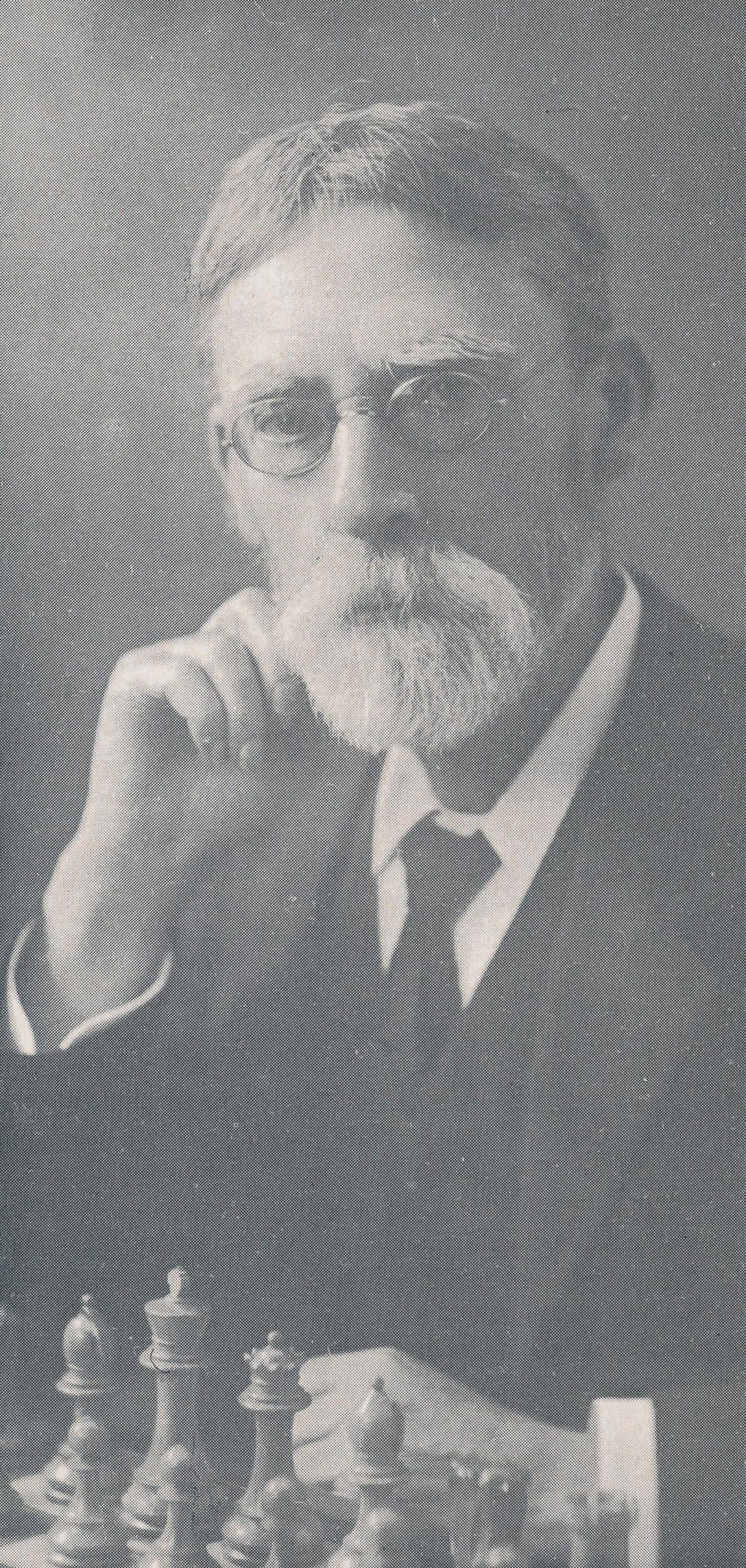
and an excellent article from the Liverpool Museum is here



and in case you did not spot the move : Burn played 33…Qg4!!
Happy Birthday Leonard Barden (20-viii-1929)
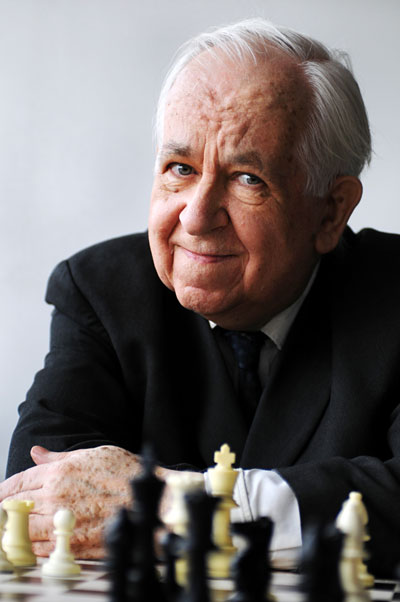
Ninety-four today is Leonard William Barden, born Tuesday, August 20th, 1929.
His mother’s maiden was Bartholomew and she became Elise EM Barden when she married Leonard’s father who was William C Barden (a dustman) and in 1939 they lived at 89, Tennison Road, Croydon.

From The Encyclopedia of Chess (Batsford, 1977) by Harry Golombek OBE:
“British Master and joint British Champion 1954. Barden was born in Croydon and learned to play at his school, Whitgift, which became a frequent producer of fine players.
In 1946 he tied for first place in the London Boys Championship and in the following year he tied with Jonathan Penrose for first place in the British Boys Championship, but lost the play-off.
In 1952 he came first at Paignton ahead of the Canadian Grandmaster Yanofsky and he reached his peak in 1954 when , after tieing for first place with the Belgian Grandmaster O’Kelly de Galway at Bognor, he tied for for first place in the British Championship at Nottingham with A. Phillips. The play-off was drawn and so the players became joint champions.
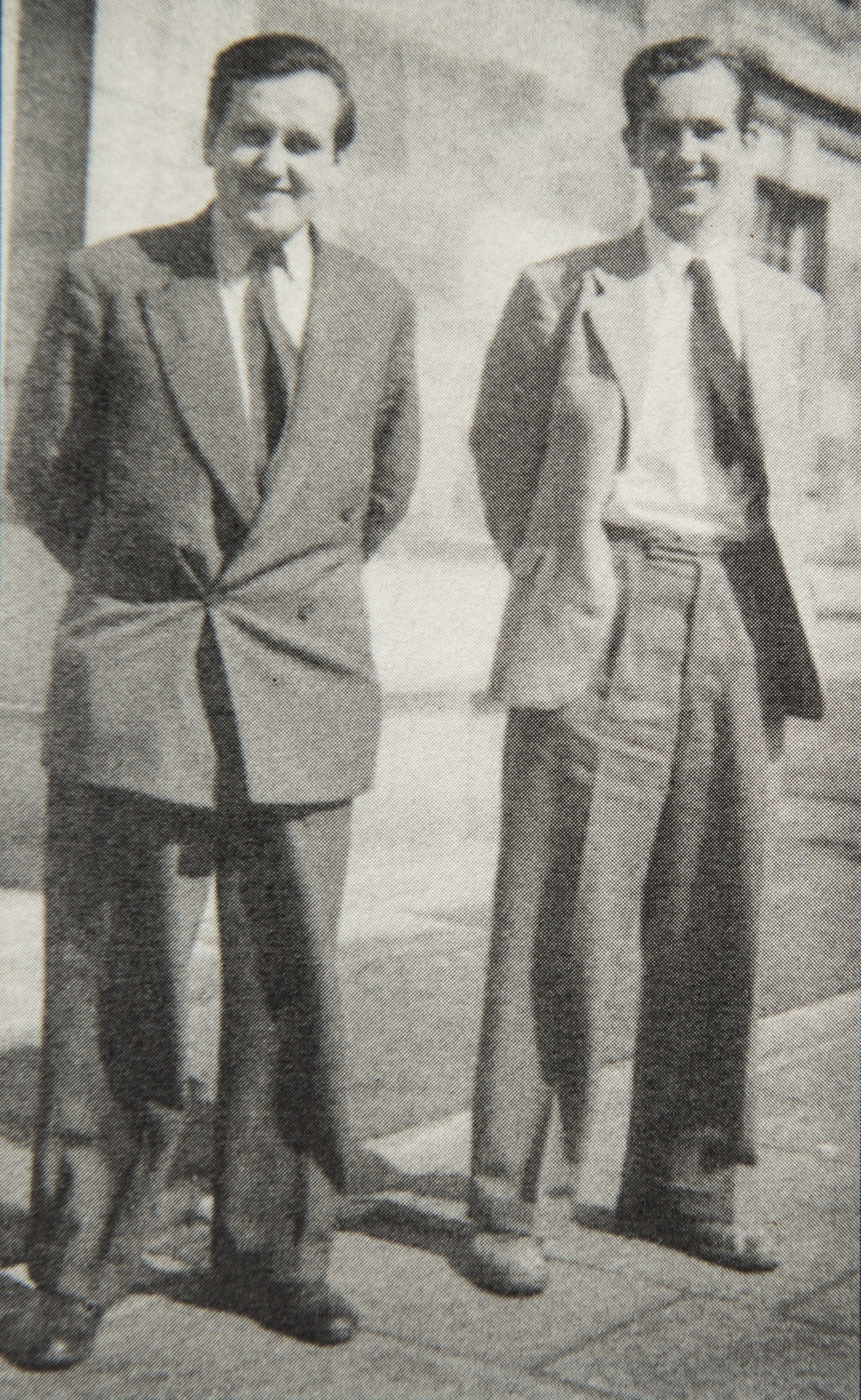
He played for the BCF in four Olympiads from 1952 to 1962 and then abandoned competitive chess, applying all his energies to writing (he is chess correspondent of the Guardian, the Financial Times, the Evening Standard and the Field, and has written many books on the game.
He has also developed two special interests, in junior chess and in grading, working with utmost persistence and energy in both of these fields.
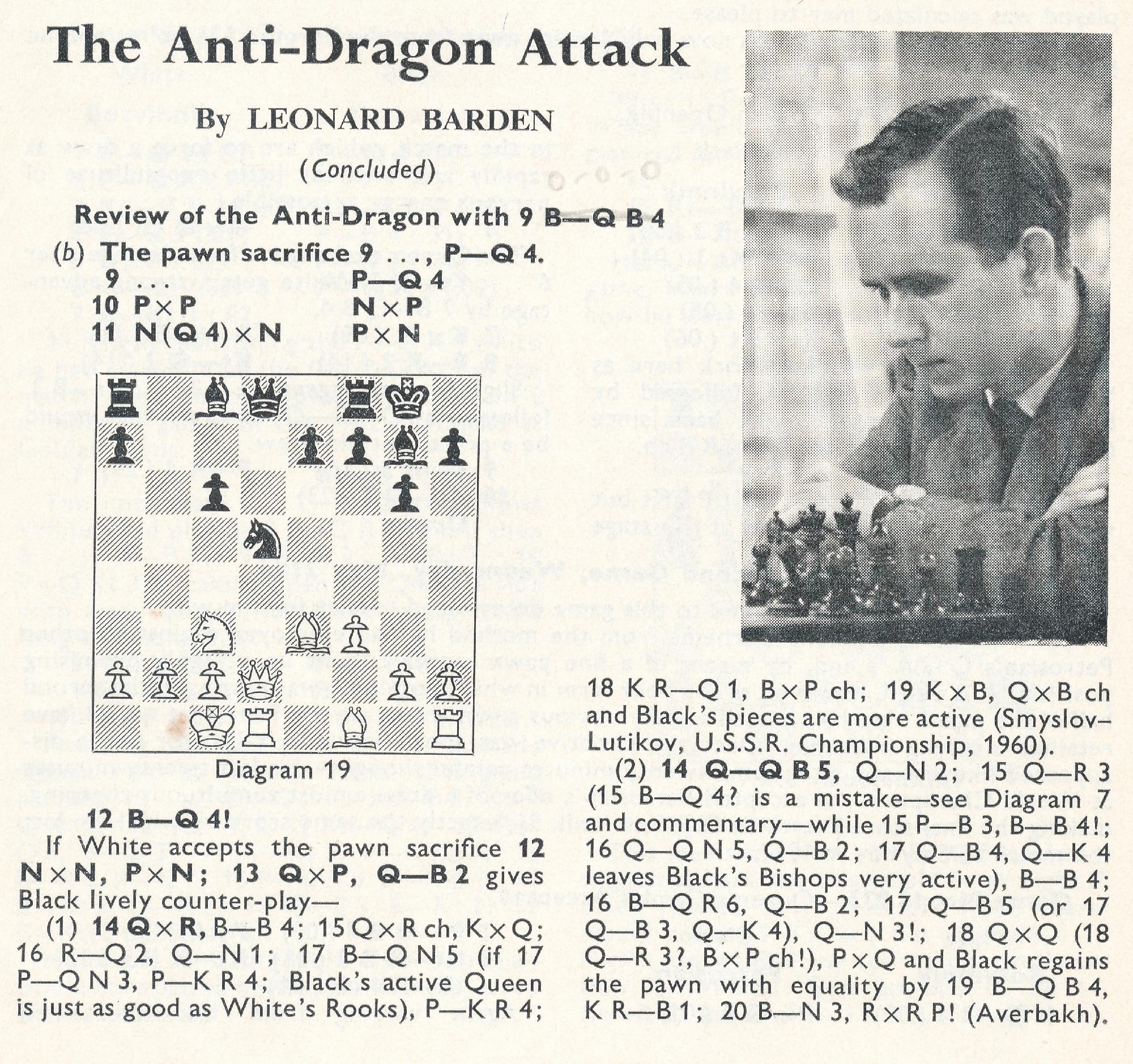
Amongst his best works are : a A Guide to Chess Openings, London, 1957; The Ruy Lopez, Oxford, 1963; The King’s Indian Defence, London, 1968.”
Disappointingly Sunnucks Encyclopedia does not mention Barden at all and and surprisingly Hooper and Whyld’s usually excellent Oxford Companion only from a connection with Jim Slater.
Leonard Bardens’ Evening Standard column ends after 63 Years

Here is an in-depth article from Edward Winter
Leonard Barden’s Blunder Theory from Kingpin Magazine
54-Year-Old Chess Record established in 2009
From Wikipedia :
“Leonard William Barden (born 20 August 1929, in Croydon, London) is an English chess master, writer, broadcaster, organizer and promoter. The son of a dustman, he was educated at Whitgift School, South Croydon, and Balliol College, Oxford, where he read Modern History.

2nd January 1951: British chess champions Jonathan Penrose and Leonard Barden prepare their openings over breakfast in the Yelton Hotel before the 9.30 am round start at Hastings 1950-51. (Photo by Walter Bellamy/Express/Getty Images)
He learned to play chess at age 13 while in a school shelter during a World War II German air raid. Within a few years he became one of the country’s leading juniors.[1] He represented England in four Chess Olympiads. Barden played a major role in the rise of English chess from the 1970s. As a chess columnist for various newspapers, his column in London’s Evening Standard is the world’s longest-standing chess column.
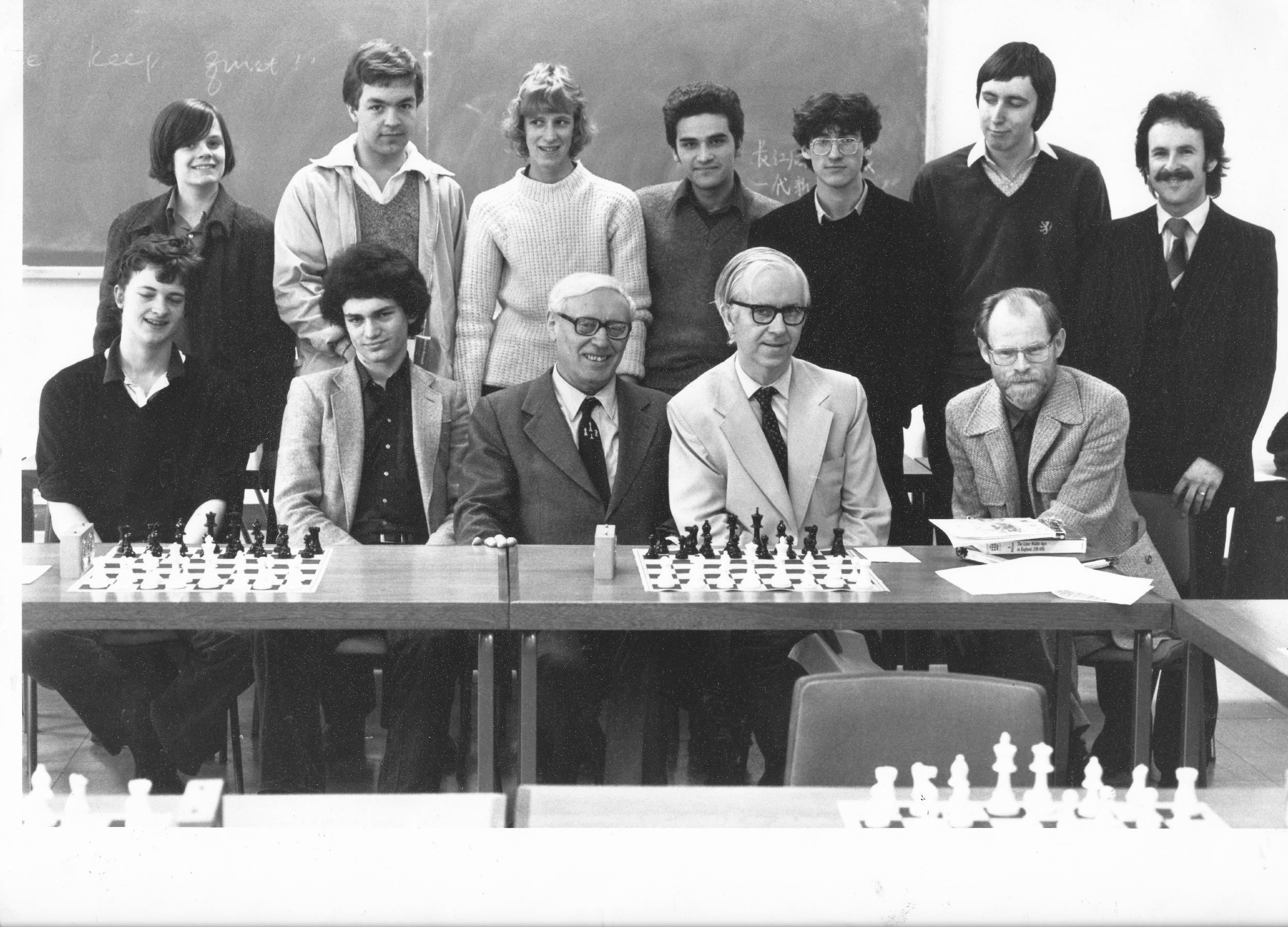
Standing: Stuart Conquest, Neil Dickenson. Gary Lane, Alan Byron,
Daniel King, John Hawksworth, Pergamon editor.
Seated: Julian Hodgson, Byron Jacobs, Mikhail Botvinnik, Leonard Barden, Bernard Cafferty.
In 1946, Barden won the British Junior Correspondence Chess Championship, and tied for first place in the London Boys’ Championship. The following year he tied for first with Jonathan Penrose in the British Boys’ Championship, but lost the playoff.
Barden finished fourth at Hastings in 1951–52. In 1952, he won the Paignton tournament ahead of the Canadian future grandmaster Daniel Yanofsky. He captained the Oxfordshire team which won the English Counties championship in 1951 and 1952.
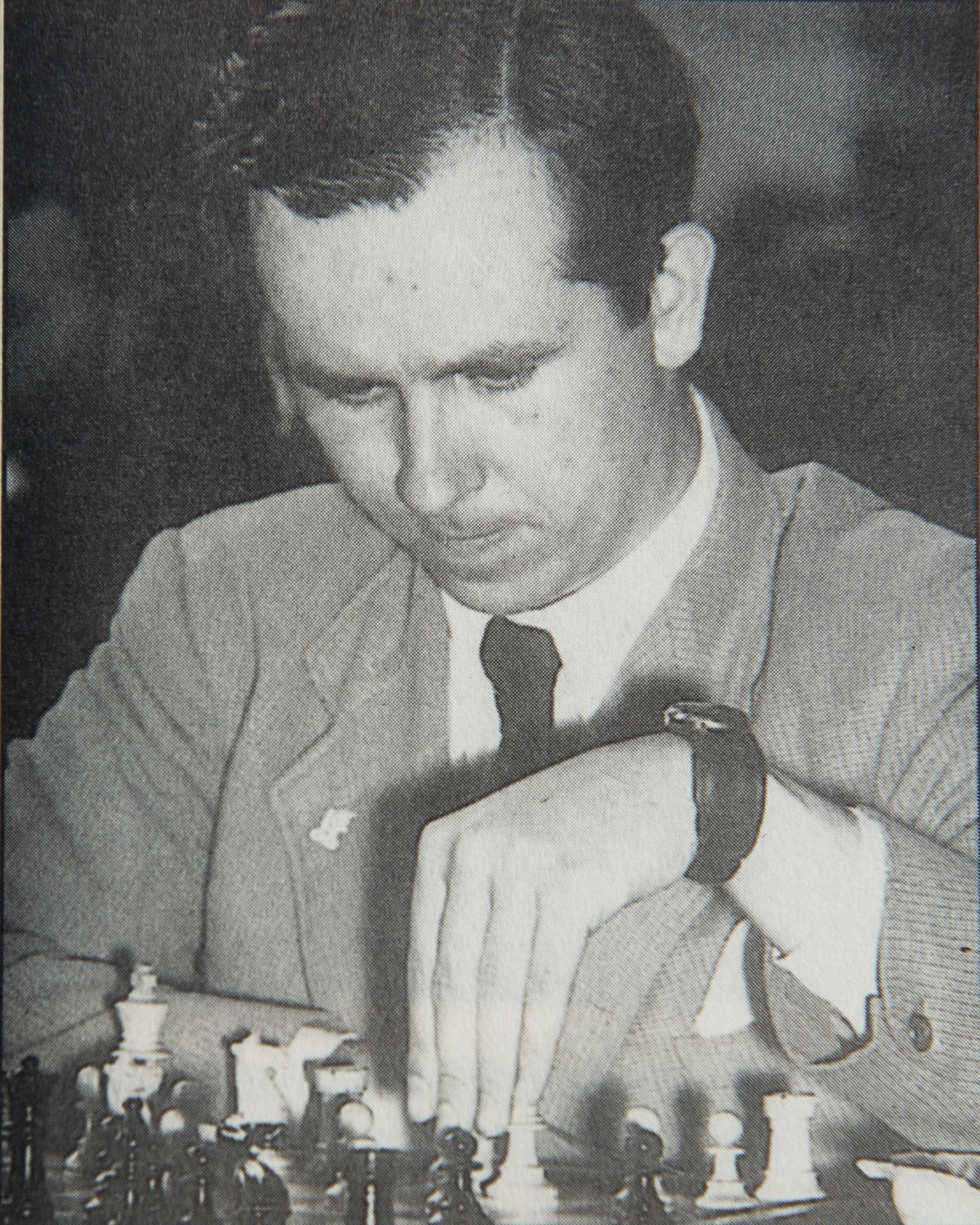
In the latter year he captained the University of Oxford team which won the National Club Championship, and he represented the university in the annual team match against the University of Cambridge during his years there. In 1953, he won the individual British Lightning Championship (ten seconds a move).

(ed: the above event was “won” by Dr. PM List with 15.5/18 but he was not allowed the title. Leonard together with AY Green and KR Smith scored 13/18 and won the play-off).
The following year, he tied for first with the Belgian grandmaster Albéric O’Kelly de Galway at Bognor Regis, was joint British champion, with Alan Phillips, and won the Southern Counties Championship.

He finished fourth at Hastings 1957–58, ranked by chessmetrics as his best statistical performance. In the 1958 British Chess Championship, Barden again tied for first, but lost the playoff match to Penrose 1½–3½.

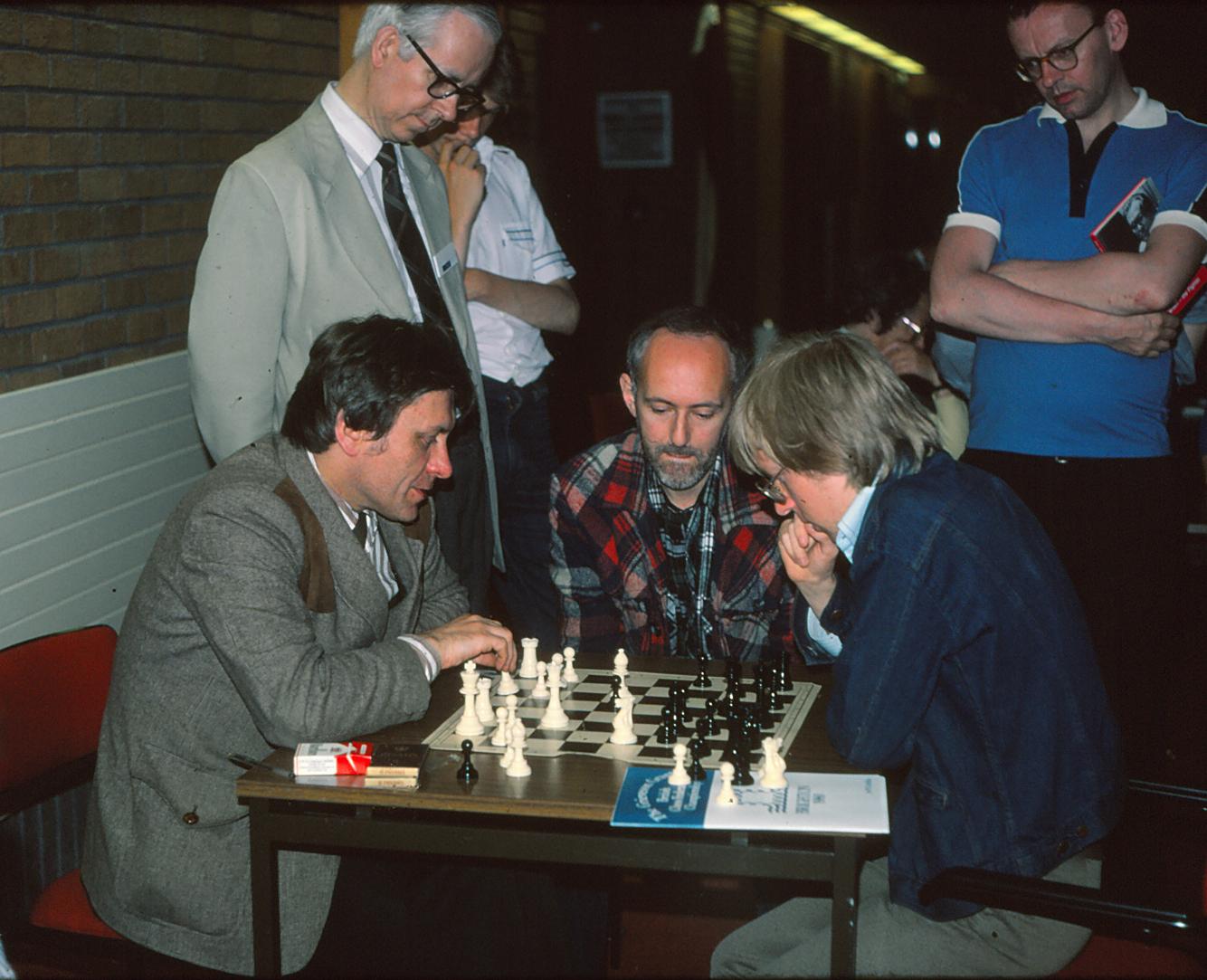
He represented England in the Chess Olympiads at Helsinki 1952 (playing fourth board, scoring 2 wins, 5 draws, and 4 losses), Amsterdam 1954 (playing first reserve, scoring 1 win, 2 draws, and 4 losses), Leipzig 1960 (first reserve; 4 wins, 4 draws, 2 losses) and Varna 1962 (first reserve; 7 wins, 2 draws, 3 losses). The latter was his best performance by far.

Barden has a Morphy number of 3, having drawn with Jacques Mieses in the Premier Reserves at Hastings 1948–49. Mieses drew with Henry Bird in the last round of Hastings 1895, and Bird played a number of games with Paul Morphy in 1858 and 1859.

Front row: Peter Morrish (organiser), Jimmy Hockaday, Darren Lee, Neil Fox, Neil Carr. Second row: James Howell, Stuart Conquest, Teresa Needham. Far right: LB.
In 1964, Barden gave up most competitive chess to devote his time to chess organisation, broadcasting, and writing about the game. He has made invaluable contributions to English chess as a populariser, writer, organiser, fundraiser, and broadcaster.

He was controller of the British Chess Federation Grand Prix for many years, having found its first sponsor, Cutty Sark. He was a regular contributor to the BBC’s Network Three weekly radio chess programme from 1958 to 1963. His best-known contribution was a consultation game, recorded in 1960 and broadcast in 1961, where he partnered Bobby Fischer against the English masters Jonathan Penrose and Peter Clarke. This was the only recorded consultation game of Fischer’s career. The game, unfinished after eight hours of play, was adjudicated a draw by former world champion Max Euwe. Barden gave BBC television commentaries on all the games in the 1972 world championship. From 1973 to 1978 he was co-presenter of BBC2’s annual Master Game televised programme.

As of 2021, his weekly columns have been published in The Guardian for 65 years and in The Financial Times for 46 years. A typical Barden column not only contains a readable tournament report, but is geared toward promoting the game. His London Evening Standard column, begun in summer 1956, is now the world’s longest running daily chess column by the same author, breaking the previous record set by George Koltanowski in the San Francisco Chronicle. Koltanowski’s column ran for 51 years, 9 months, and 18 days, including posthumous articles.”

Leonard wrote this on the English Chess Forum in 2021 :
“I retired after Ilford 1964 when I finished a poor last in the England Olympiad team qualifier, returned at Hammersmith 1969 (equal 2nd behind Keene) and then played around 6-8 weekenders a year until 1972. My overall performance level between early 60s and early 70s dropped from around 225 to 215 BCF, so I wasn’t encouraged to pursue the comeback further.”
Leonard was Southern Counties (SCCU) champion in the 1953-54 season.
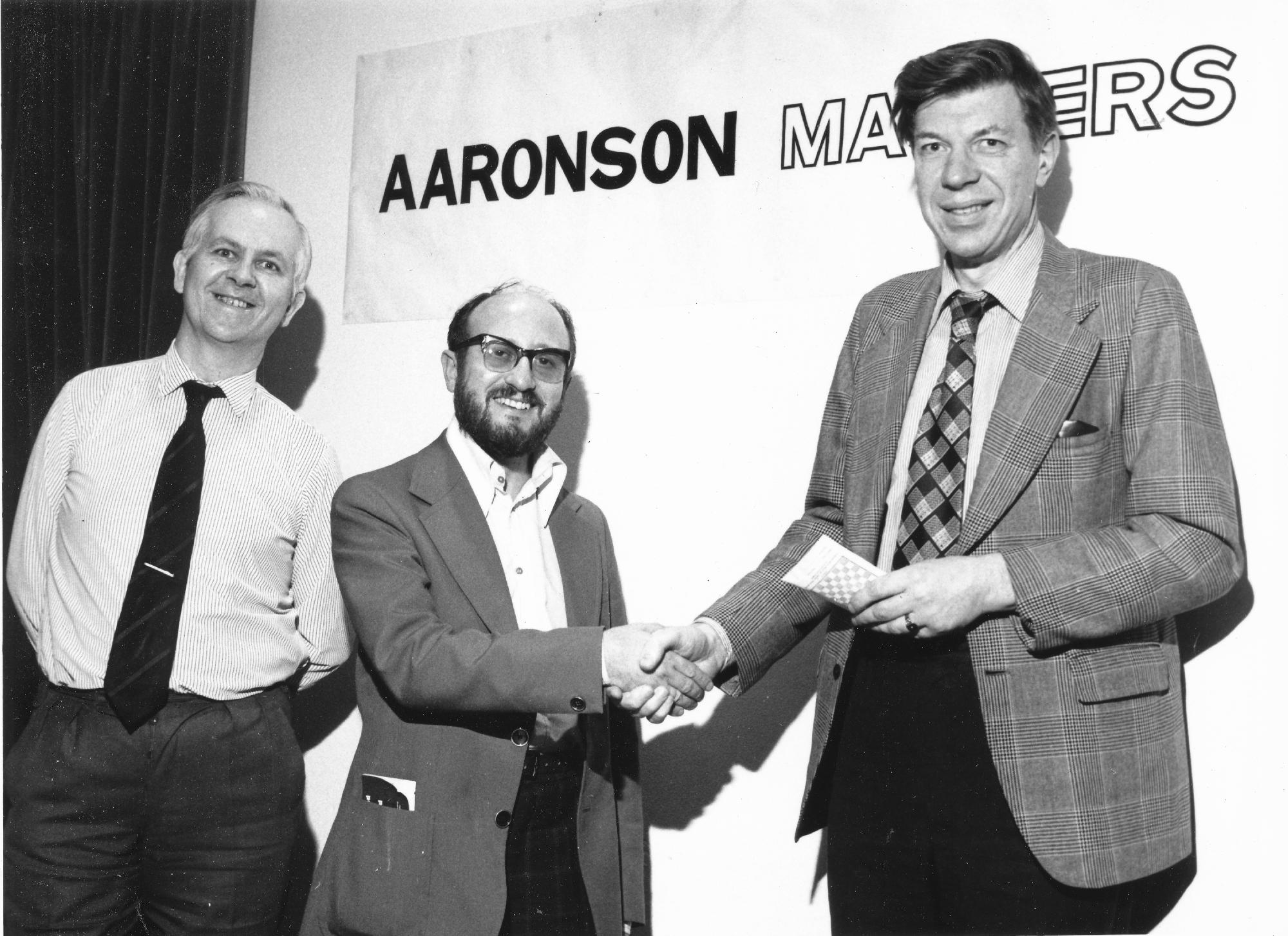
Leonard reveals this as his best game :
Leonard has authored or co-authored a number of highly regarded books, most of which are highly instructional to this day:
A Guide to Chess Openings (1957),
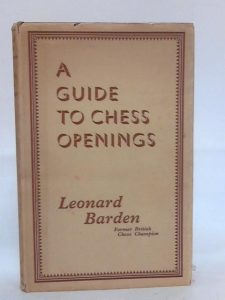
How Good Is Your Chess? (1957),
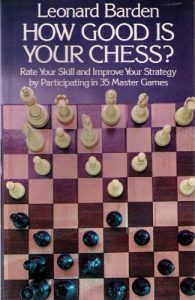
Chess (1959),
Introduction to Chess Moves and Tactics Simply Explained (1959),
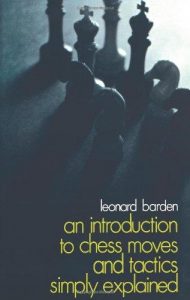
Modern Chess Miniatures (with Wolfgang Heidenfeld, 1960),
Erevan 1962 (1963),
The Ruy Lopez (1963),
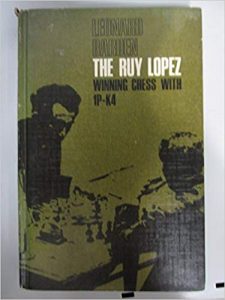
The Guardian Chess Book (1967),
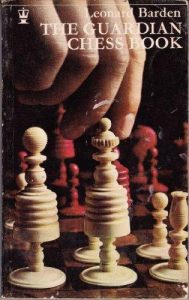
An Introduction to Chess (1967),

The King’s Indian Defence (1969),
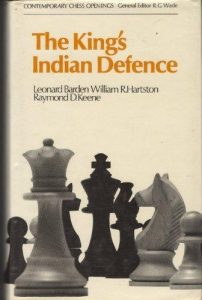
Chess: Master the Moves (1977),
Guide to the Chess Openings (with Tim Harding, 1977),
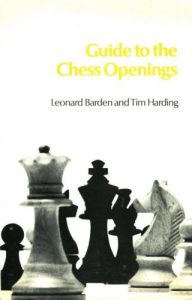
Leonard Barden’s Chess Puzzle Book (1977) (a collection of his Evening Standard columns),

The Master Game (with Jeremy James, 1979),
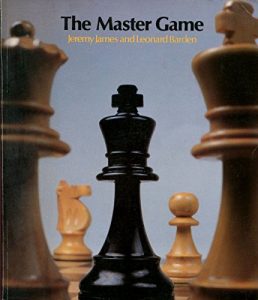
How to Play the Endgame in Chess (1979),

Play Better Chess (1980),
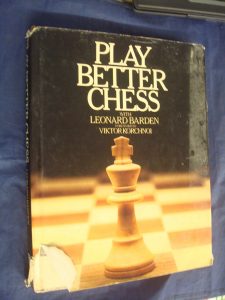
Batsford Chess Puzzles (2002),
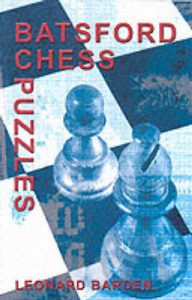
One Move and You’re Dead (with Erwin Brecher, 2007) : Can you supply an image?
Happy Birthday GM Murray Chandler MNZM (04-iv-1960)
Happy Birthday GM Murray Graham Chandler MNZM (04-iv-1960)
From The Oxford Companion to Chess by Hooper & Whyld :
“International Grandmaster (1983), a New Zealander who settled in England at the age of 15. subsequently playing for his adopted country in the Lucerne Olympiad, 1982. He scored +4=6 to share first prize at New York 1980, came second (+5=5 — 1) equal with Hort at Dortmund 1983, and scored +5 = 6 (a GM norm) to share first prize at Amsterdam 1983, a Swiss systemtournament. Chandler has edited the magazine Tournament Chess since its inception in 1982.”
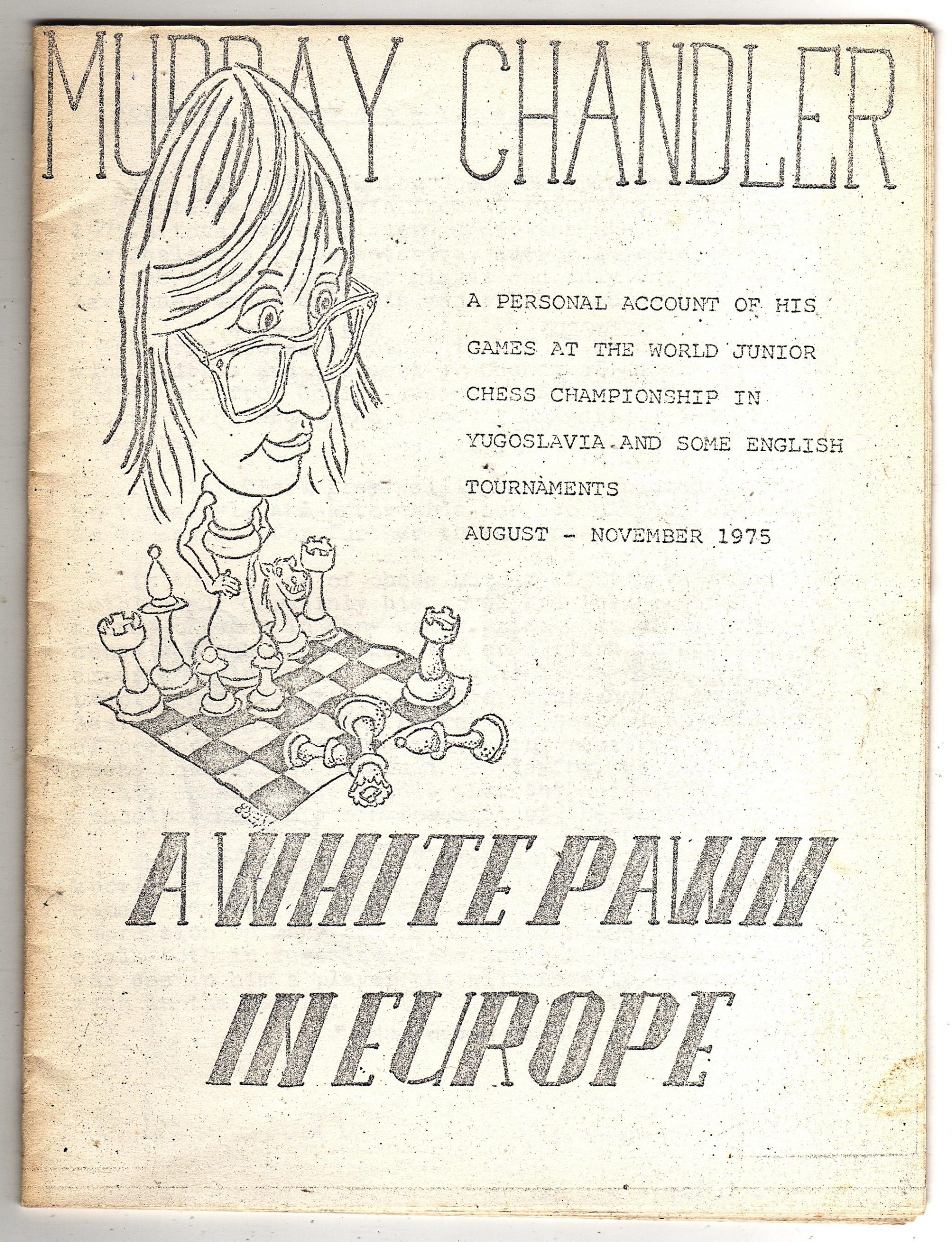
Here is his Wikipedia entry

From Chessgames.com :
“Murray Graham Chandler was born in Wellington, New Zealand. He was awarded the IM title in 1977 and the GM title in 1982. He was joint New Zealand Champion in 1975-76 (shared with Lev Isaakovich Aptekar and Ortvin Sarapu) and joint Commonwealth Champion in 1984. His best tournament results were 2nds at London 1984, London 1986 and Amsterdam 1987 and he has played both for New Zealand (1976-1980) and England (1982-86) in the Olympiads. He edited Tournament Chess for a time from 1981 onwards and as well as writing he became the managing director of Gambit Publications.

He was the organiser and winner of a large tournament, the Queenstown Classic in New Zealand in January 2006 and this tournament also incorporated the 113th New Zealand Championship making Chandler the New Zealand Champion for the second time. He won his third New Zealand title at the 115th New Zealand Championship (2008) which was held in Auckland where he currently resides.”
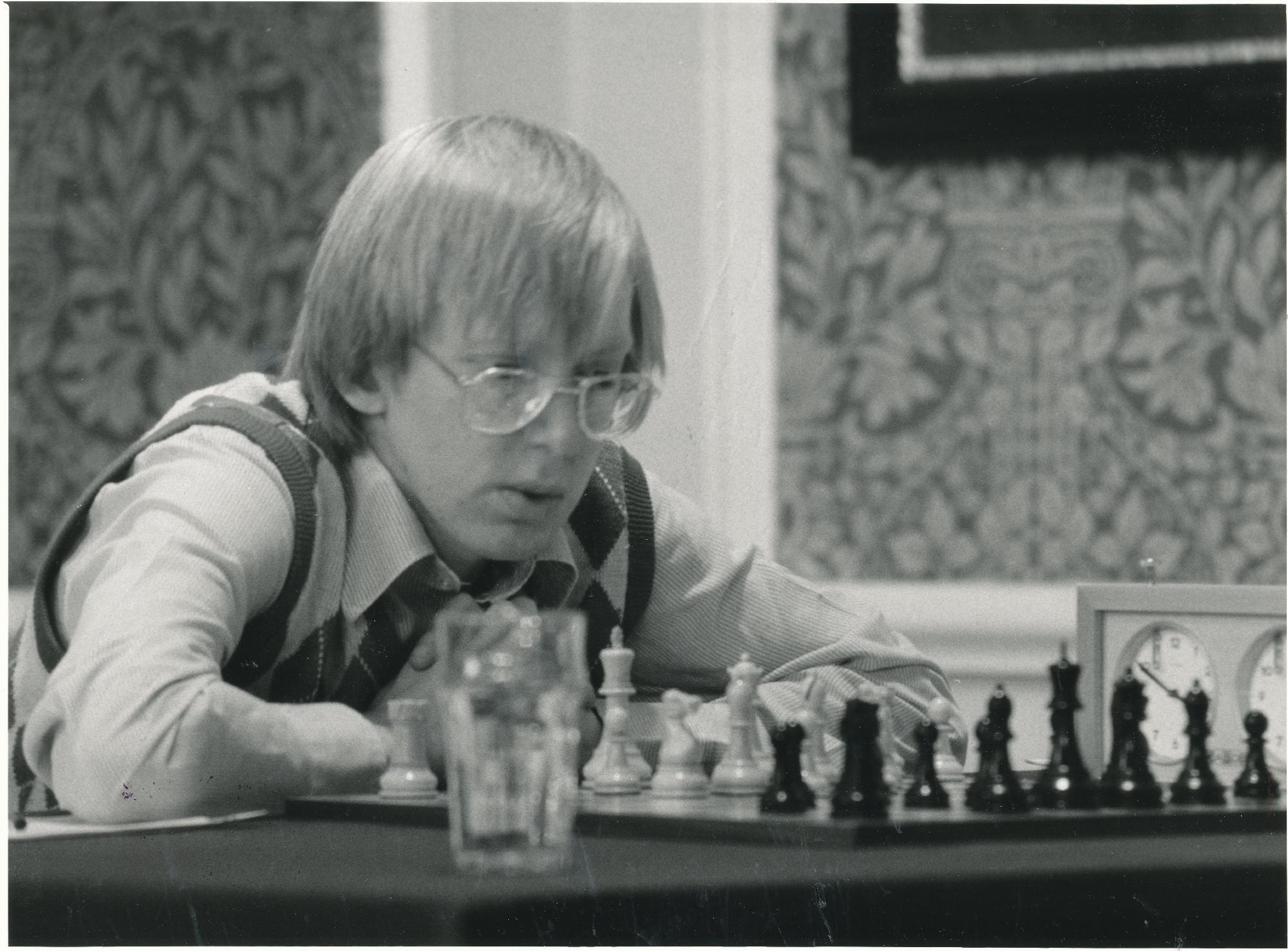

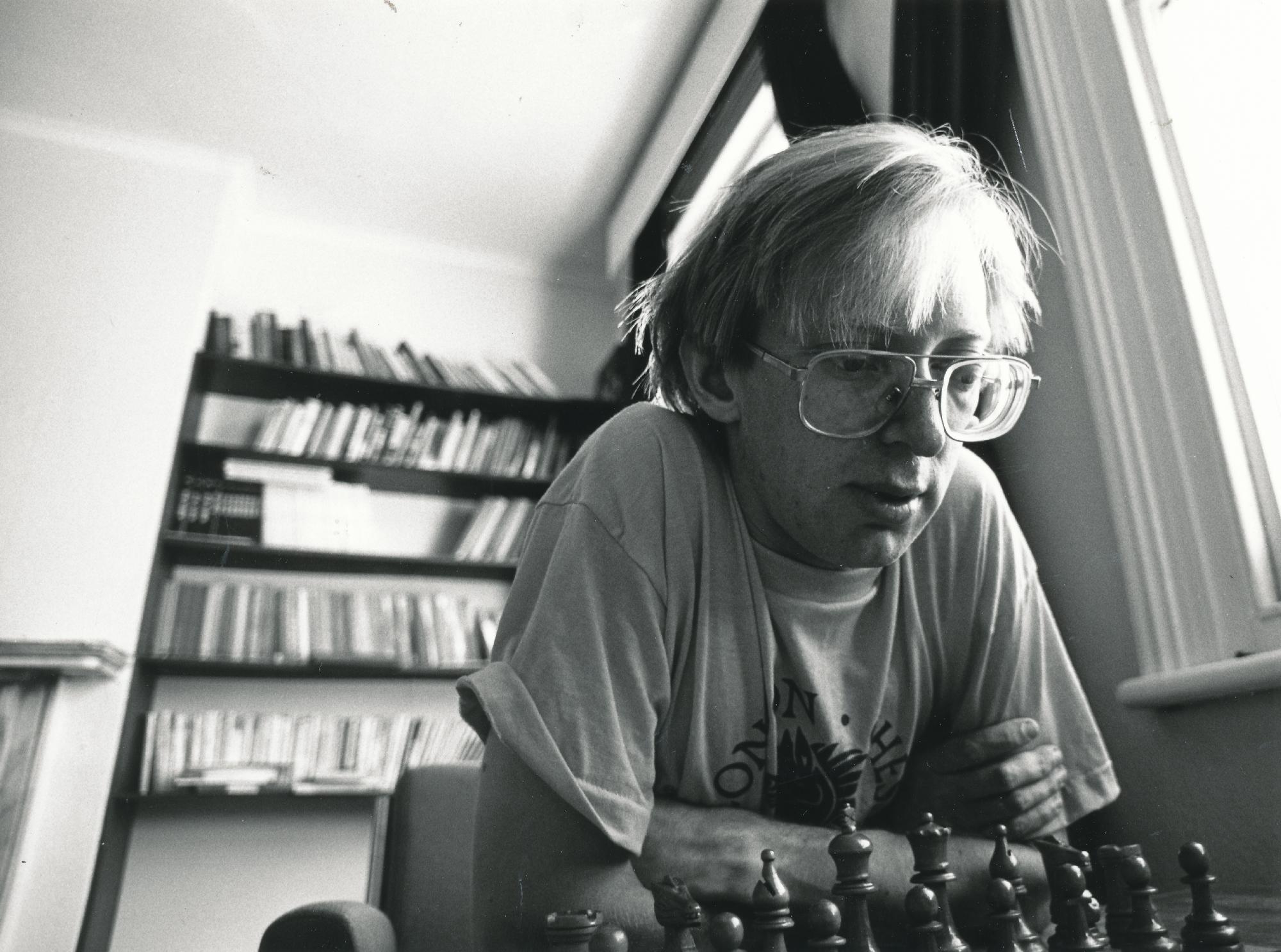

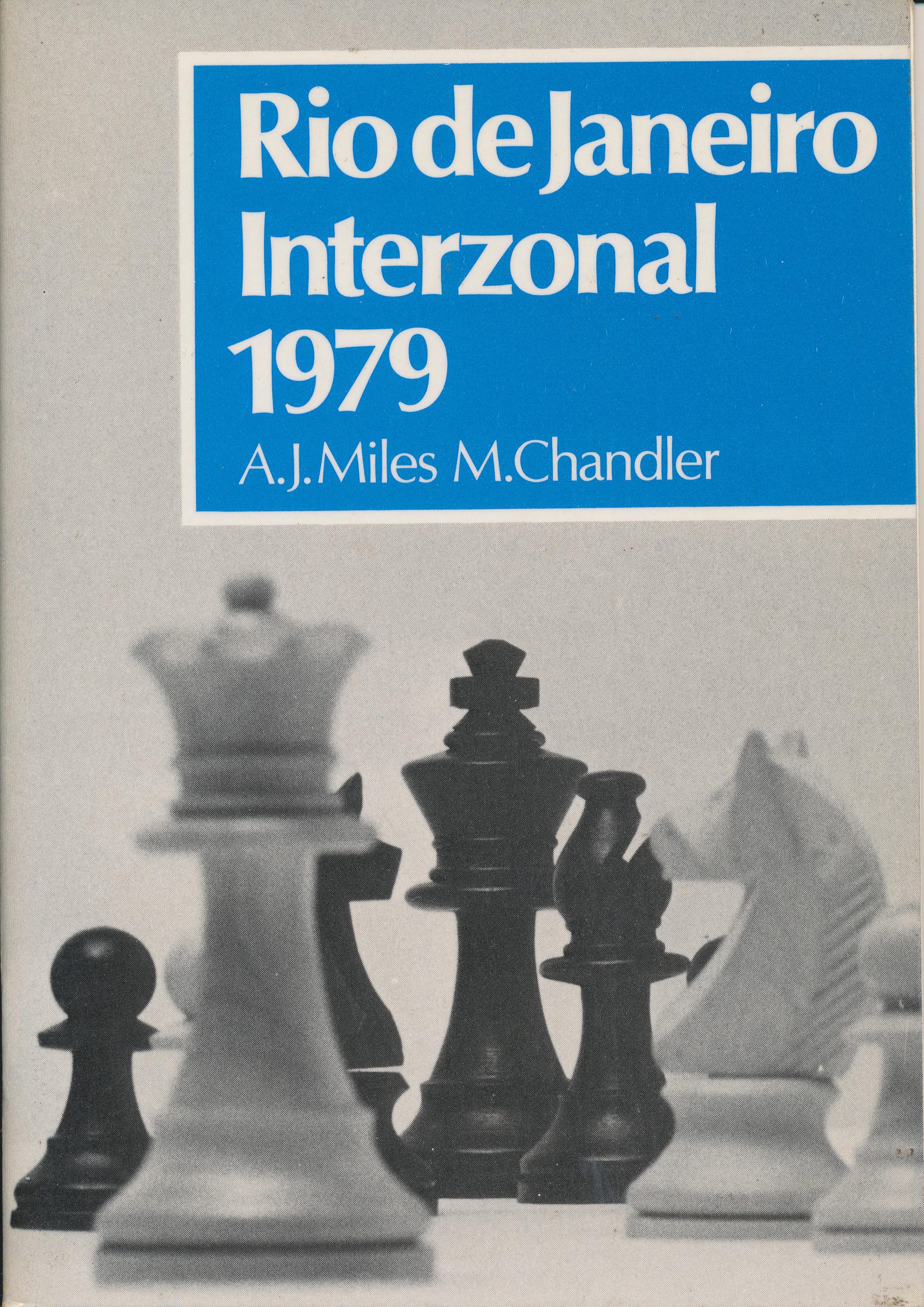
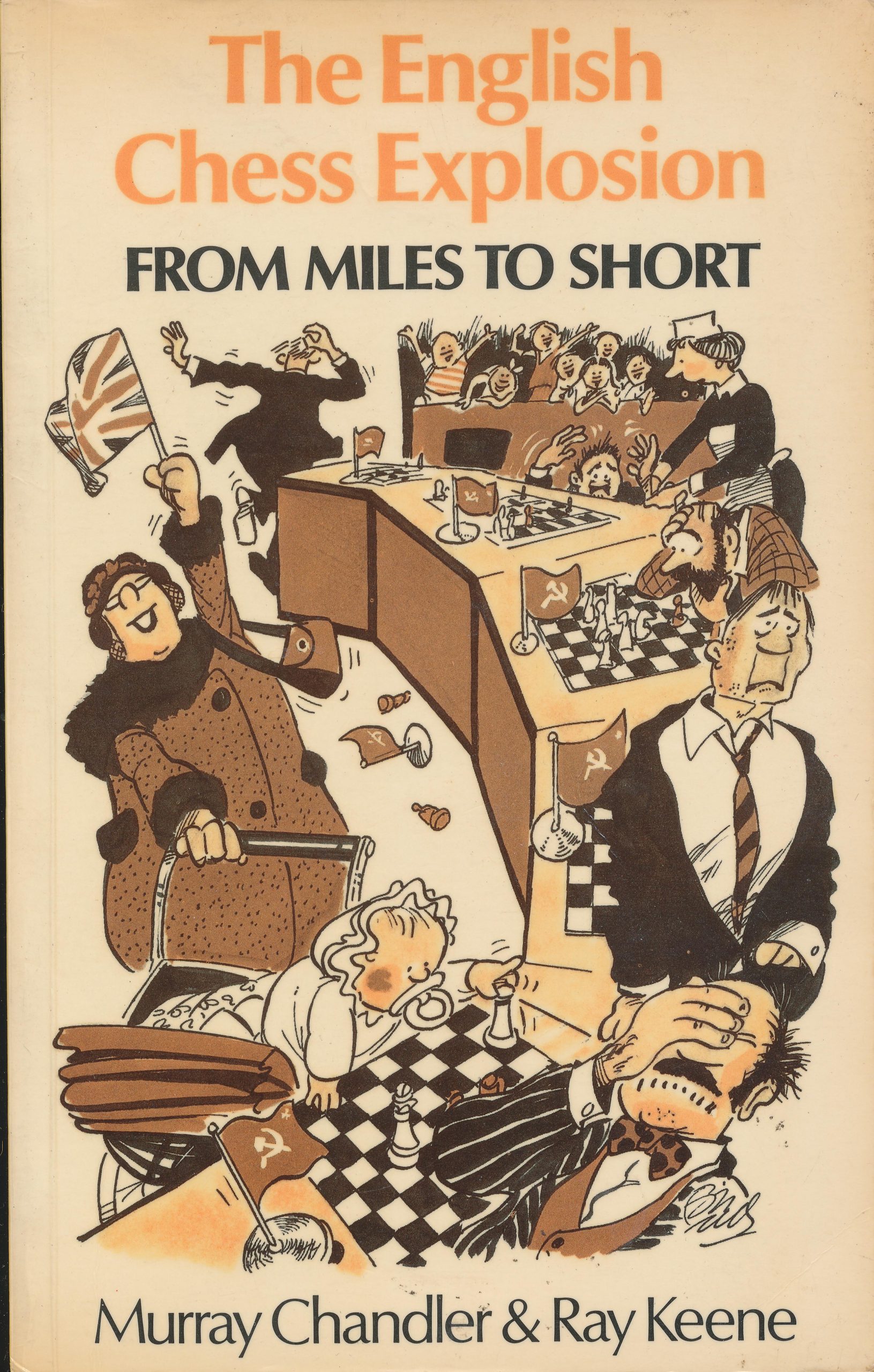
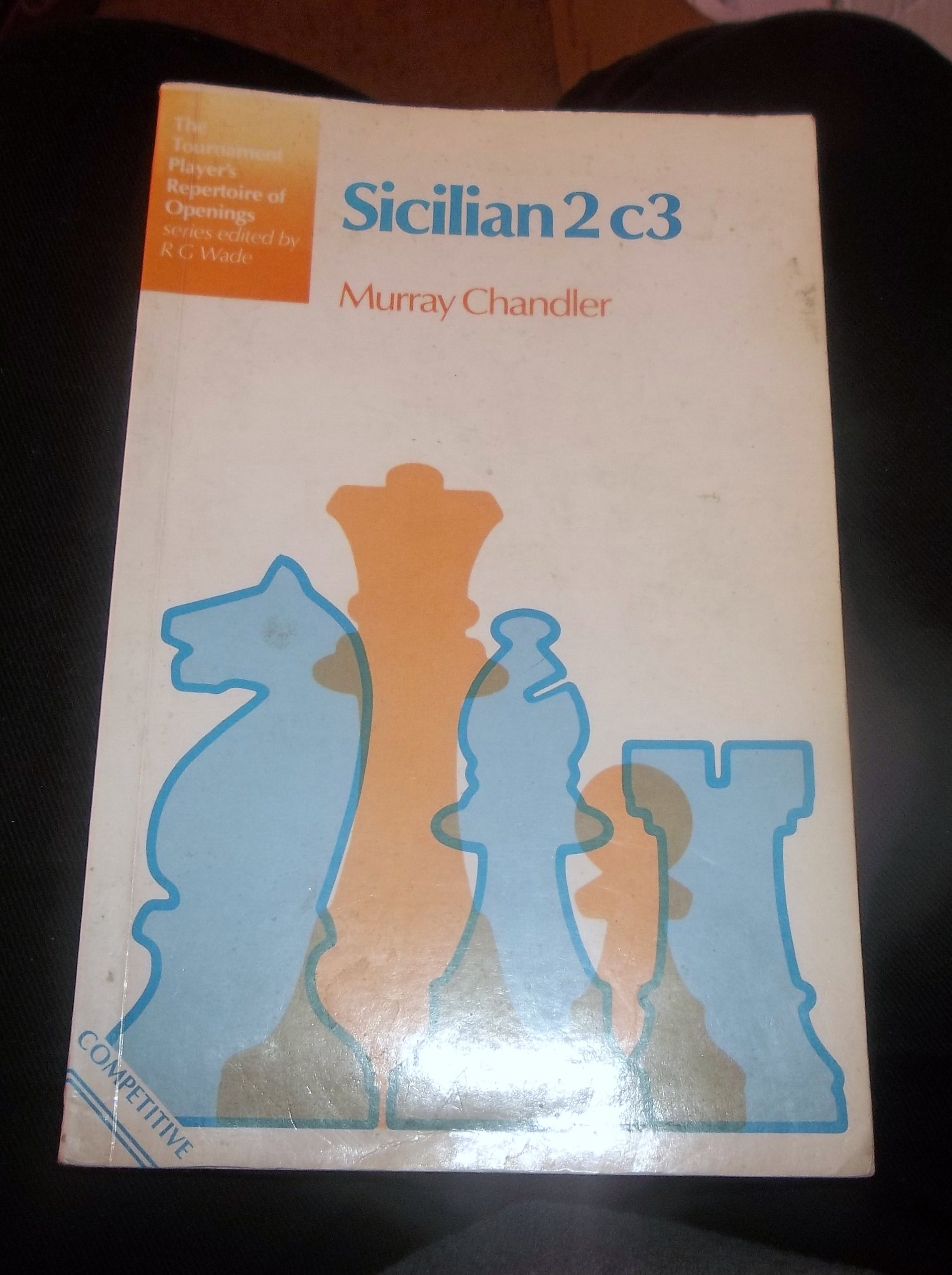
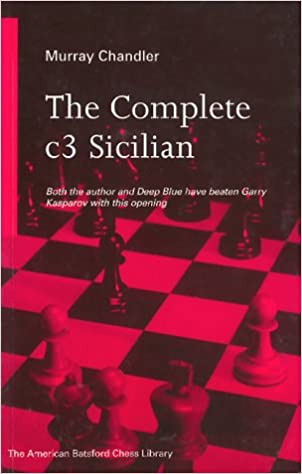
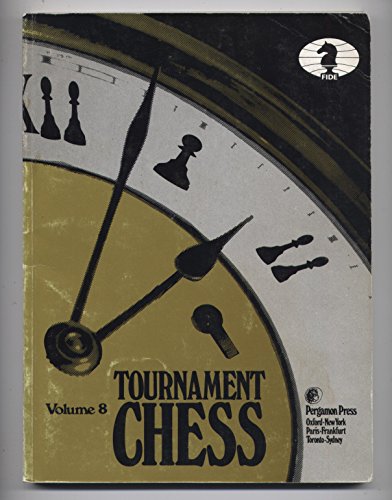
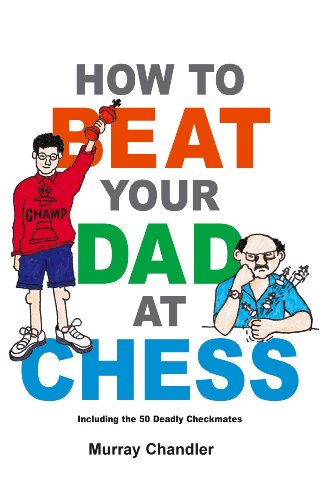
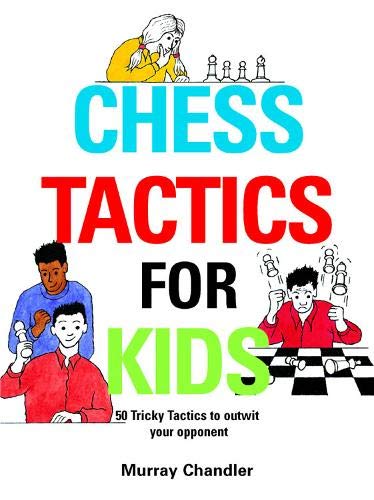

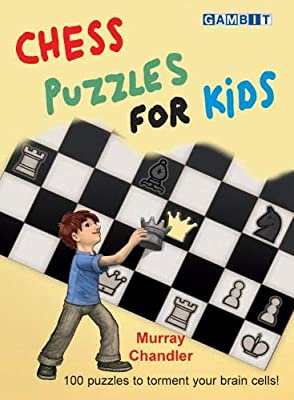
Remembering BH Wood MSc FCS OBE (13-vii-1909 04-iv-1989)
We remember “BH” Wood MSc FCS OBE who passed away on Tuesday April 4th, 1989 in the district of Birmingham.
He was buried alongside his wife Marjorie in the Sutton Coldfield Cemetery Extension which was opened in 1934 as an extension to the Holy Trinity Church.
Yorkshire Childhood
Baruch Harold Wood (generally known as BH Wood, or simply “BH”, by the chess world) was born on Tuesday, July 13th 1909 in Ecclesall, Sheffield, Yorkshire. The registration district was Ecclesall Bierlow.
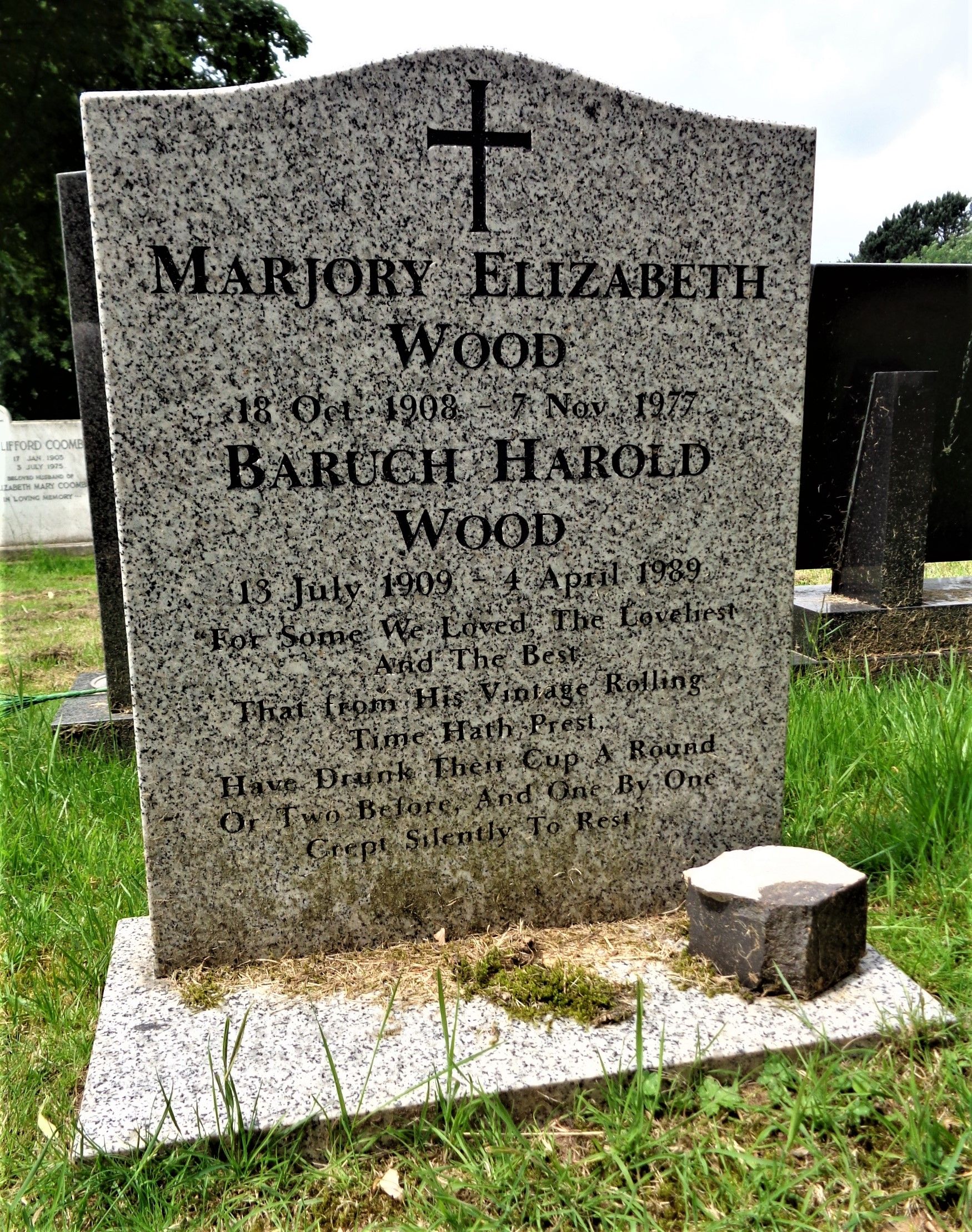
The birth record suggests that he was baptised as Harold Baruch Wood. His parent’s were Baruch Talbot (1881-1951) and Florence Muriel Wood (née Herington). He appears as Harold Baruch on the 1911 census.
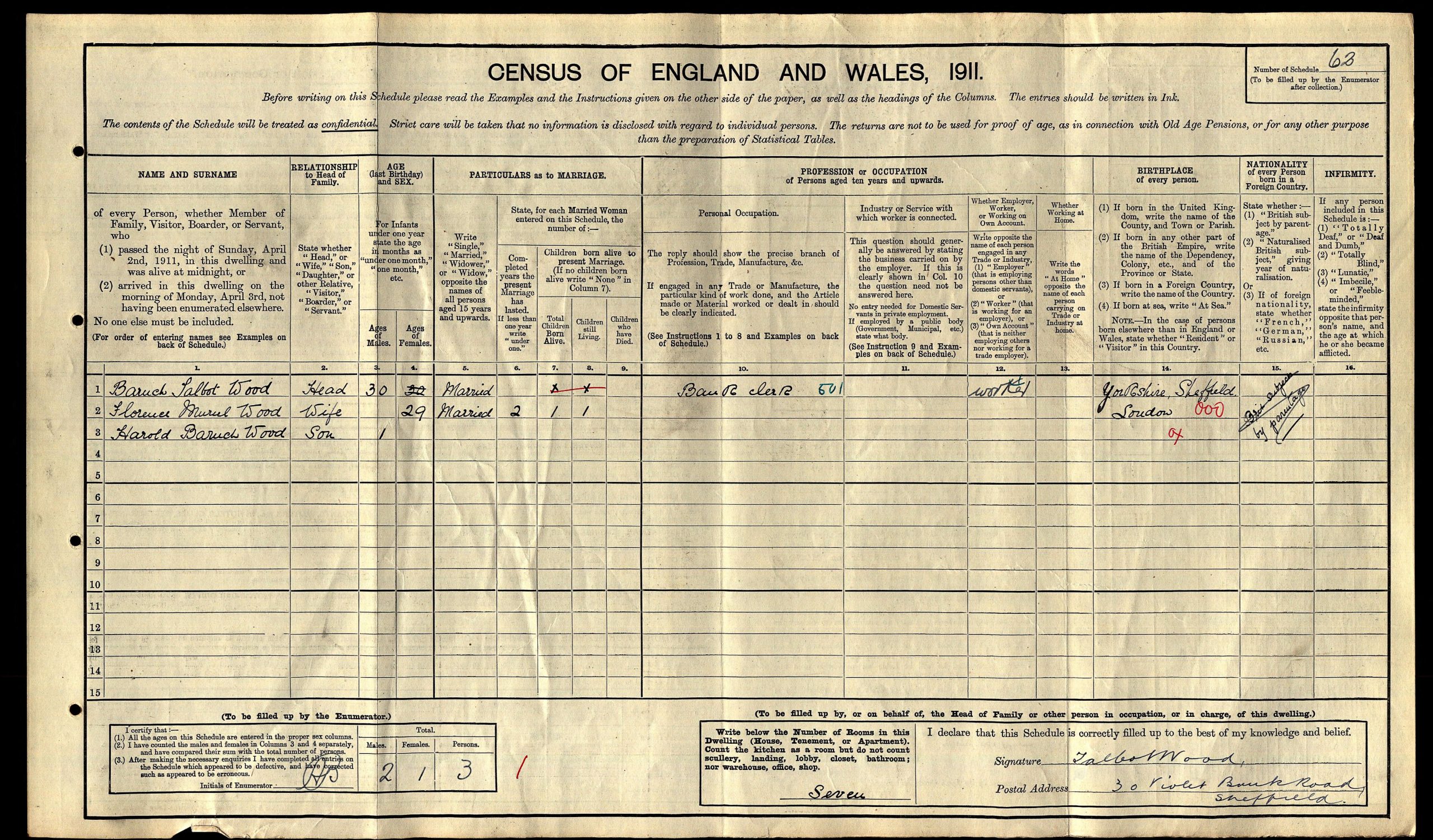

Interestingly, the Census form was signed by Talbot Wood so maybe BHs father also did not like his own first name! At the time of the Census the family lived at 30, Violet Bank Road, Nether Edge, Sheffield, S7 1RZ.
Welsh School Days
Baruch attended Friars School, Bangor (established in 1557) along with William Ritson Morry. BHW was one year and three months older than WRM so it is entirely possible that they had met.
Marriage to Marjory
In October 1936 BHW married Marjory Elizabeth Farrington in Ross, Herefordshire. When Marjory died on 7th September 1977 they were living at 146, Rectory Road, Sutton Coldfield, West Midlands. Baruch and Marjory had four children, FM Christopher Wood, Philip, Frank and Peggy.
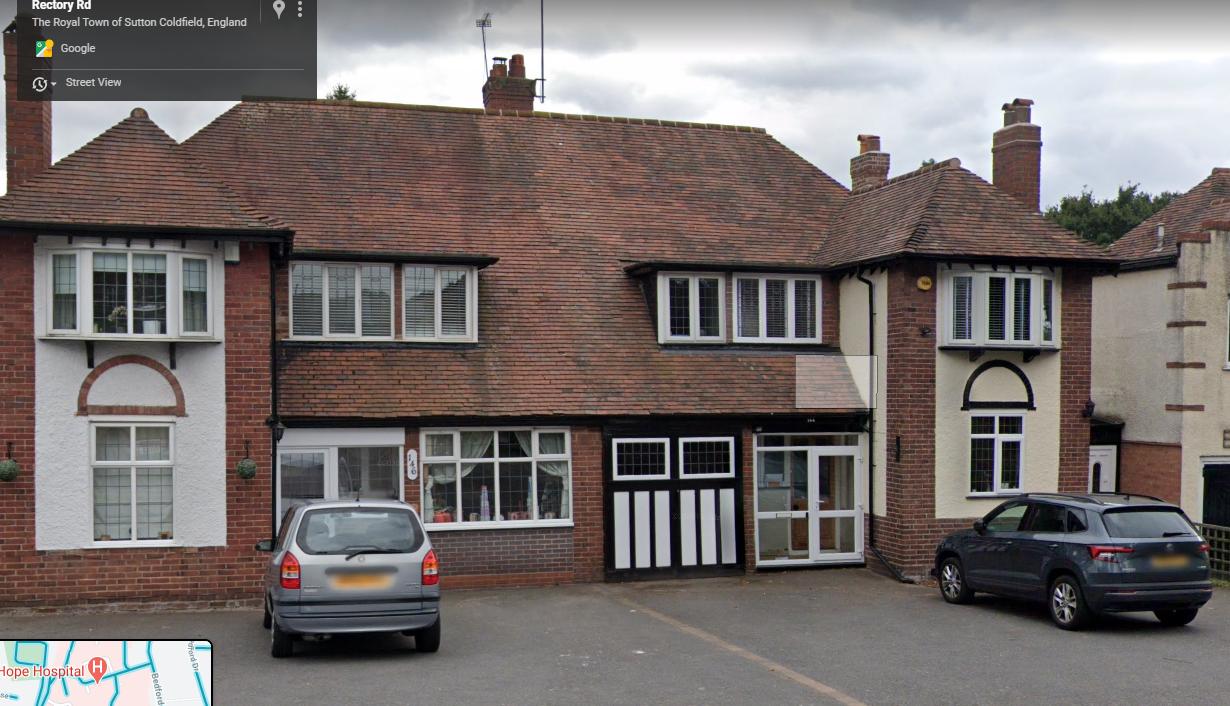
Honours
In the 1984 New Years Honours List, Civil Division, BHW was awarded the OBE. The citation read simply : “For services to Chess”
He won the BCF President’s Award in 1983 alongside TJ Beach and Brian Reilly.

The 1946 Anglo-Soviet Radio Match
From The Anglo-Soviet Radio Chess Match by Klein and Winter :
“BH Wood was born in Sheffield in 1909. A great lover of the game, he founded the magazine Chess in 1935, and has written a book for beginners. He scored a notable success by winning the British Correspondence Championship on one occasion. Wood has competed in the British Championship on several occasions, and in a number of Premier Reserves tournaments. He also played for Great Britain in the international team tournament (ed. Olympiad) at Buenos Aires in 1939.
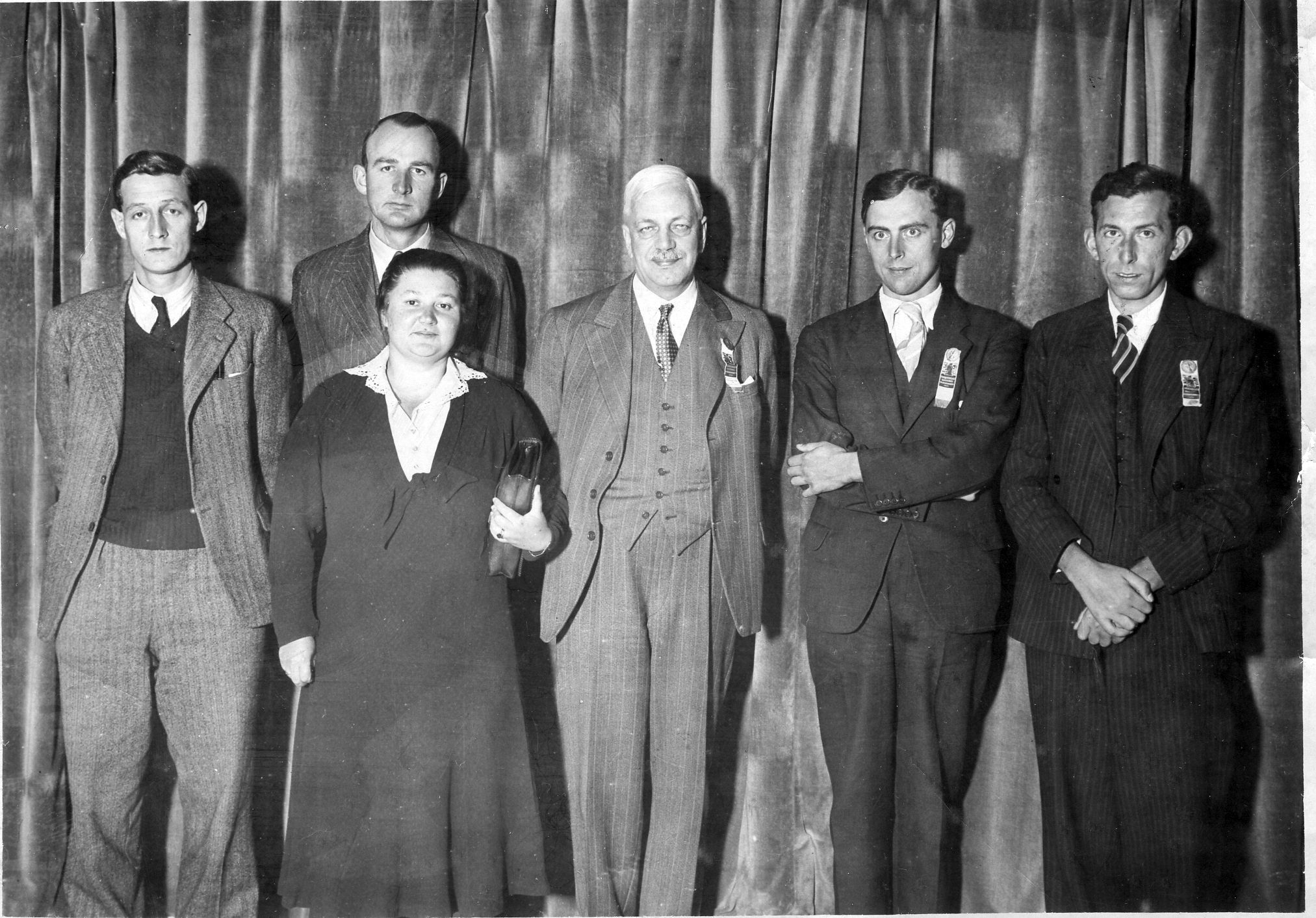
He is a graduate of the University of Wales and Birmingham University. He has been very active in recent years in giving simultaneous exhibitions and in organising correspondence chess.”

Between 1938 and 1957, BH won the championship of Warwickshire eight times. He held the record (until 2006) for the most Birmingham & District Chess League Individual titles – nine, all won in Division 1: 1937, 1939, 1954, 1956, 1958, 1960, 1966, 1967, and 1983. He was the Records Secretary for the League from 1951-61.
Birth of a Magazine

From CHESS, Volume 52 (1987), Number 1014-15 (Christmas), we have the very last issue of the magazine for which BH was the Editor before becoming Founding Editor (and Paul Lamford became Editor). BH wrote:
“Countless people have asked me ‘Why did you start CHESS?’ I was in love with university life and has just taken an M.Sc., a waste of time after a good first-class honours, and decided to have a go at replacing the old Chess Amateur, which had closed down. I had edited the students’ magazine in both Bangor and Birmingham. The first had been produced by The Daily Post Printers in Liverpool, who agreed to print 1,000 copies for £90. That £90 would be nearly £2,400 now.

A year’s subscription I announced as 10 shillings (50p).
Two bits of luck! J.H. Van Meurs, a Dutchman who did a lot for British Chess, had listed in his still young B.C.F. Year Book some hundreds of chess clubs.
W.H. Watts, another great figure of those days, had floated a rather short-lived magazine The Chess Budget, donated a ‘Budget Cup‘, for knock-out team competition and published excellent books on big tournaments, etc. He handed me a list of keen chess players all around the world. I spent a week addressing envelopes by hand to all the clubs and people.
To individuals I sent single copies of CHESS; to each club three copies, inviting payment or subscriptions. Hardly anybody failed to pay. Obviously there was a demand for a chess magazine with a lighter touch than the B.C.M.
Years later, I learnt why Mr. Watts had been so generous. He had fallen out with the establishment and welcomed the arrival of a new publication.
Within three months I was selling 3,000 copies an issue.
Some early ideas were chessy short stories , cartoons and a competition for humorous anecdotes.
I soon went to Amsterdam for the first Euwe-Alekhine match. I traced Alekhine to his hotel room with difficulty. He was officially incommunicado. He came to the door in pyjamas, and within five minutes we had agreed to a £5 article per month. I was, of course, already on conversational terms with him (and remained so!).
Now I fell into trap. 3,000 readers in four months meant 6,000 in eight months, 9,000 in a year…?
Not so! This is extrapolation, a matter of calculation full of risks.
My preparations had been too good. In the remaining eight months of the year I picked up only a thousand more readers. Alekhine lost the title. With three months to go, my money ran out, I struggled to the end of the year. The twelfth issue was pathetically thin compared with the first few but renewals staring rolling in and CHESS blossomed again.
The fifty-two years since have been gruelling, unremitting toil but fascinating interest. How we bought our own presses and the effect this had on the world’s chess press – A law suit that went to appeal – How CHESS linked people in Malta, Australia, Hungary – Adventures in ‘simuls’, postal chess etc. How we helped police to identify a drowned man, etc. So many tales to tell!
BHW
BCF Obituary
Here is an obituary from the BCF Yearbook 1989 – 1990, page 14 :
B.H. Wood, O.B.E
Baruch H. Wood, O.B.E., founder of CHESS, and the magazines editor for 52 years, died at the age of 79 on 4th April.
Born in Sheffield on 13 July 1909, “B.H.”, as he was widely known in chess circles, took up the game early playing competitively at school and at University. After graduating from the University College of Wales, Bangor with a 1st class honours degree in chemistry, he took an MSc at Birmingham University. Soon, however, his love of chess took him away from a career in chemistry, with his launch of CHESS in 1935. He was to continue as editor, publisher, for many years printer, and often major contributor, for over half a century.

The magazine quickly won an international reputation for its frankness and outspokenness. It speaks much for the character and determination of its editor that he was able to continue publishing CHESS throughout the difficult years of the Second World War, whilst holding a full-time job as director of a chemical research laboratory in Lichfield.
Wood will be best remembered for the magazine, and for his other journalistic activities. He was for many years chess correspondent of The Daily Telegraph and of The Illustrated London News, and his best known book Easy Guide to Chess went through three editions and many impressions.
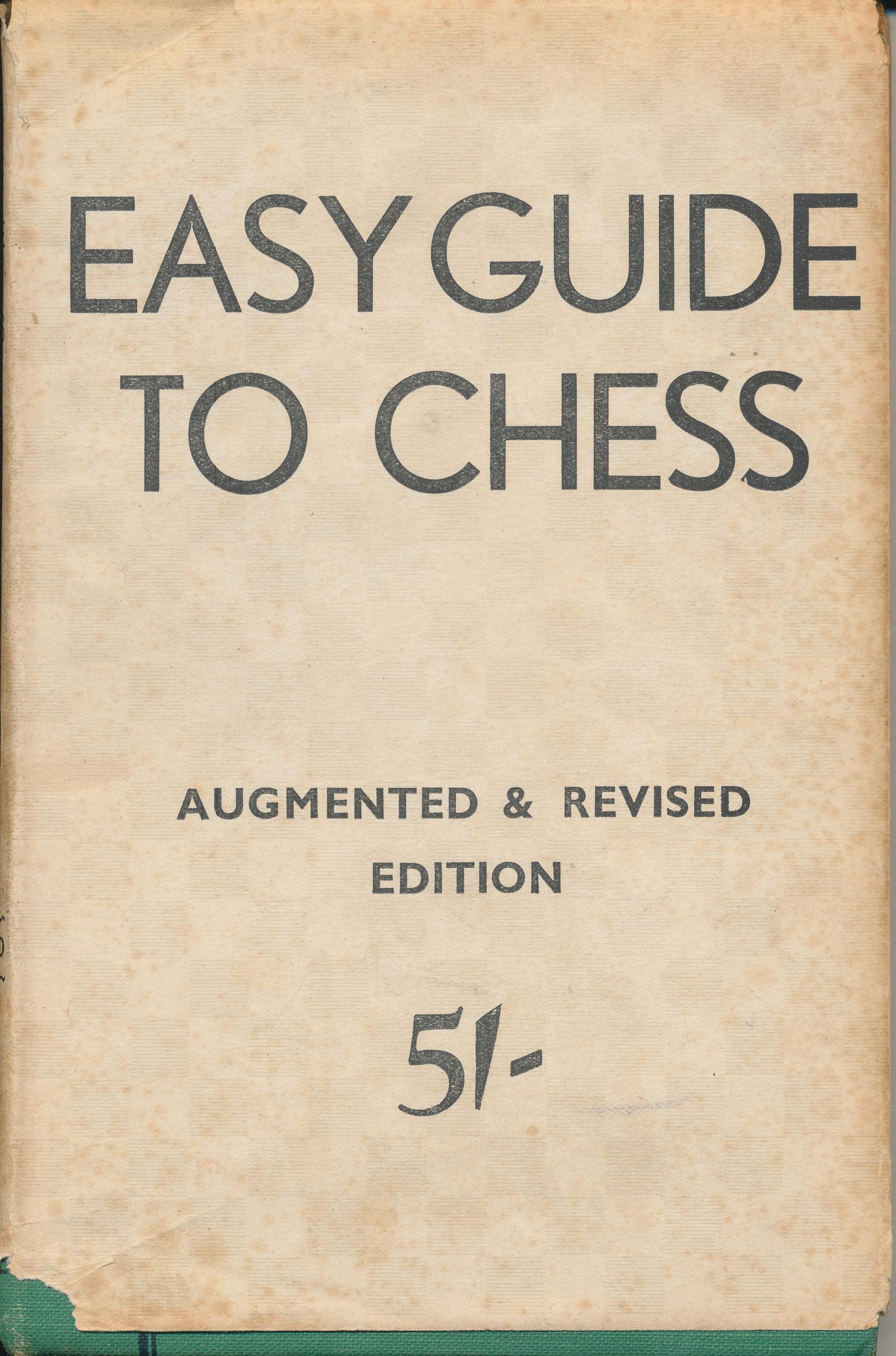
The above book (albeit the later Cadogan version) is available online.
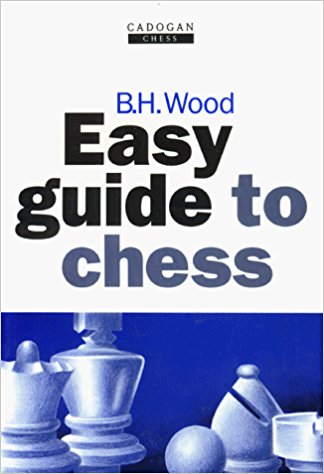
Nigel Davies wrote “One of the best beginners books on the market.”
Wood’s feat in writing, publishing, printing and selling his own book may be unique. However, Wood was no mean player as his draw against the then world champion Max Euwe, who became a life-long friend, testifies.
He represented England in the International Team Championship at Buenos Aires in 1939, scoring 50%. He also took first prize in international tournaments at Baarn 1947, Paignton 1954, Whitby 1963, Thorshavn 1967 and Jersey 1975 and was second in the 1948 British Championship. He was British Correspondence Chess Champion in 1945.

A life member of F.I.D.E. Wood was also an International Arbiter, and organised 21 annual chess festivals at seaside venues from the 50’s onwards. In addition he was an active behind-the-scenes inspirer of many chess events, and in particular was known as a driving spirit of university chess, being until the time of his death President of the British University Chess Association.
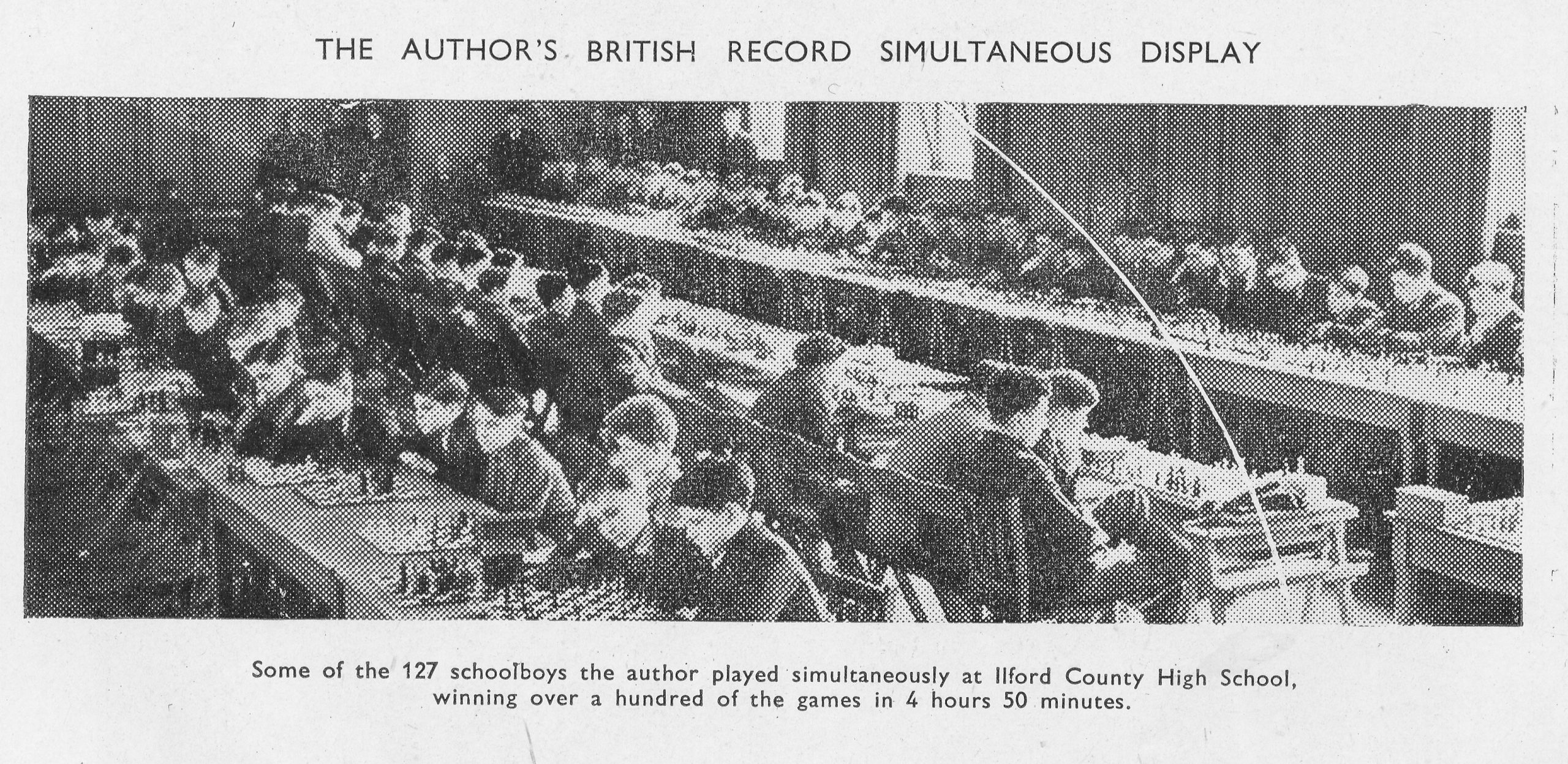
He founded the Postal Chess Club and League and was for many years President of the British Postal Chess Federation.
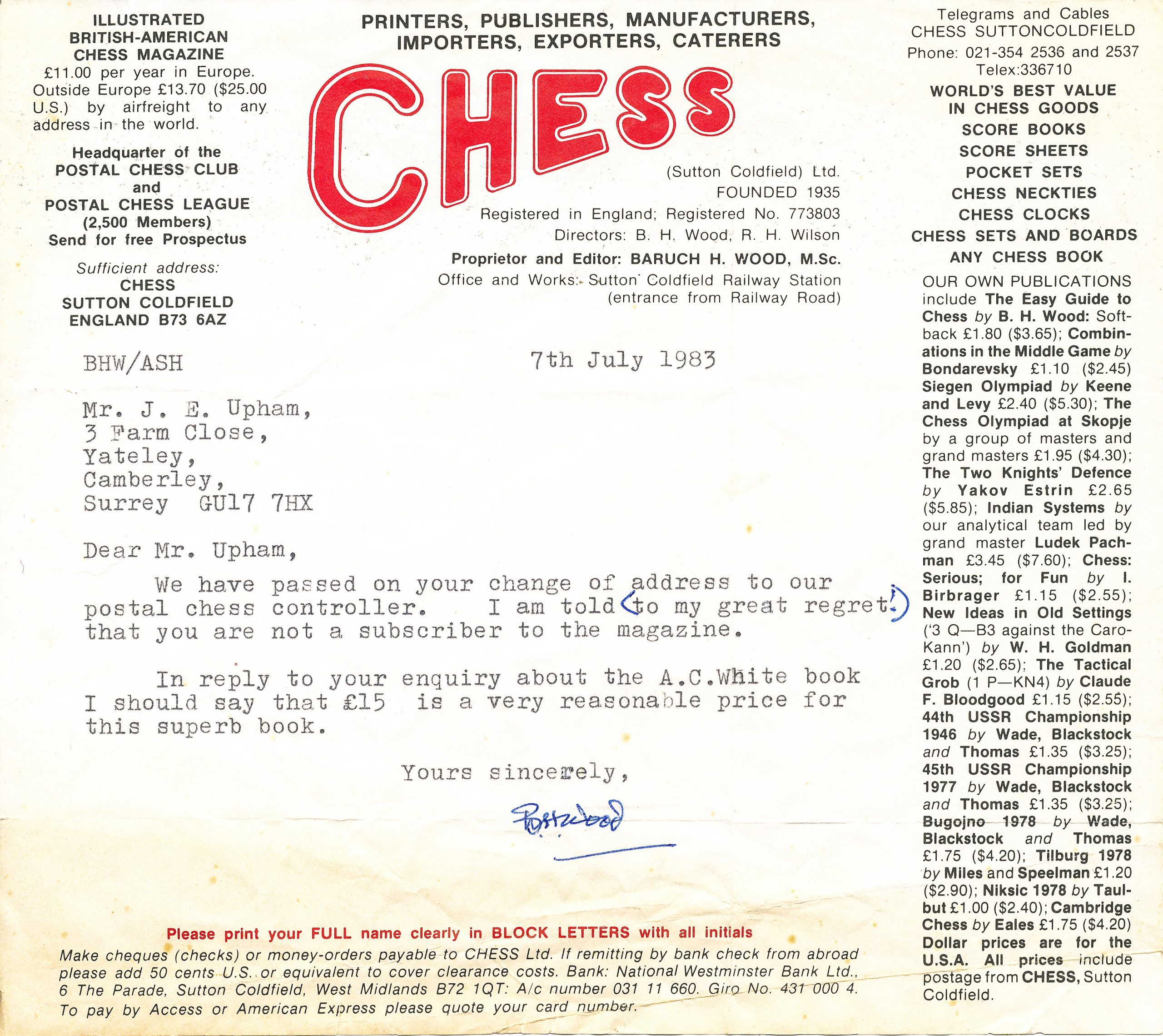

He was awarded the O.B.E. for services to chess in 1984.
His wife Marjory, predeceased him; he leaves three sons Christopher, Frank and Philip, and a daughter Peggy.

and here is the article as it appeared in the Yearbook.
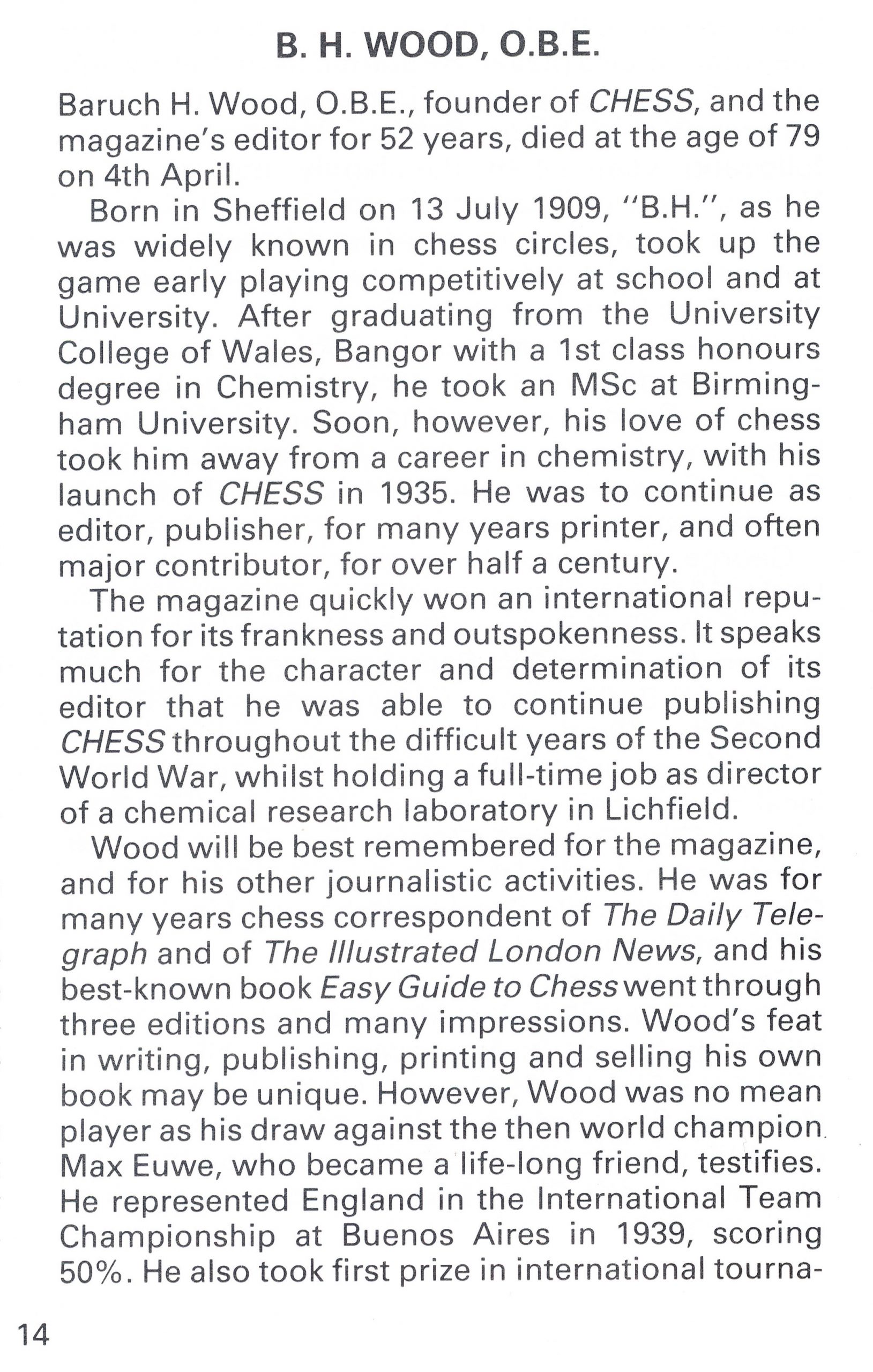
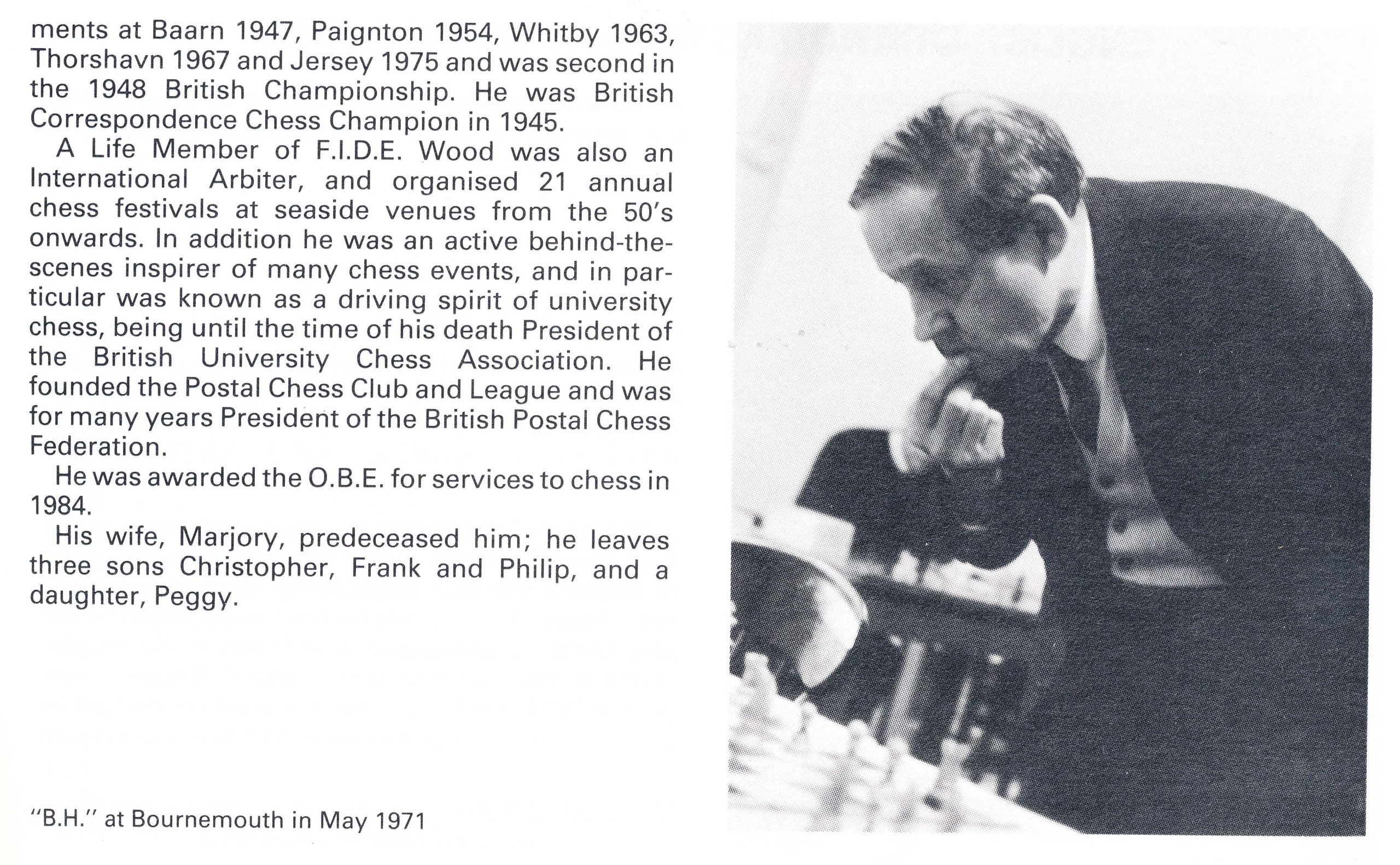
Golombek on Wood
From The Encyclopaedia of Chess (Batsford, 1977) by Harry Golombek :
“A well known British player, editor of Chess (starting 1935) and chess correspondent of The Daily Telegraph and Illustrated London News. A FIDE judge, he has founded and conducted 21 annual chess festivals, notably at Whitby, Eastbourne and Southport.
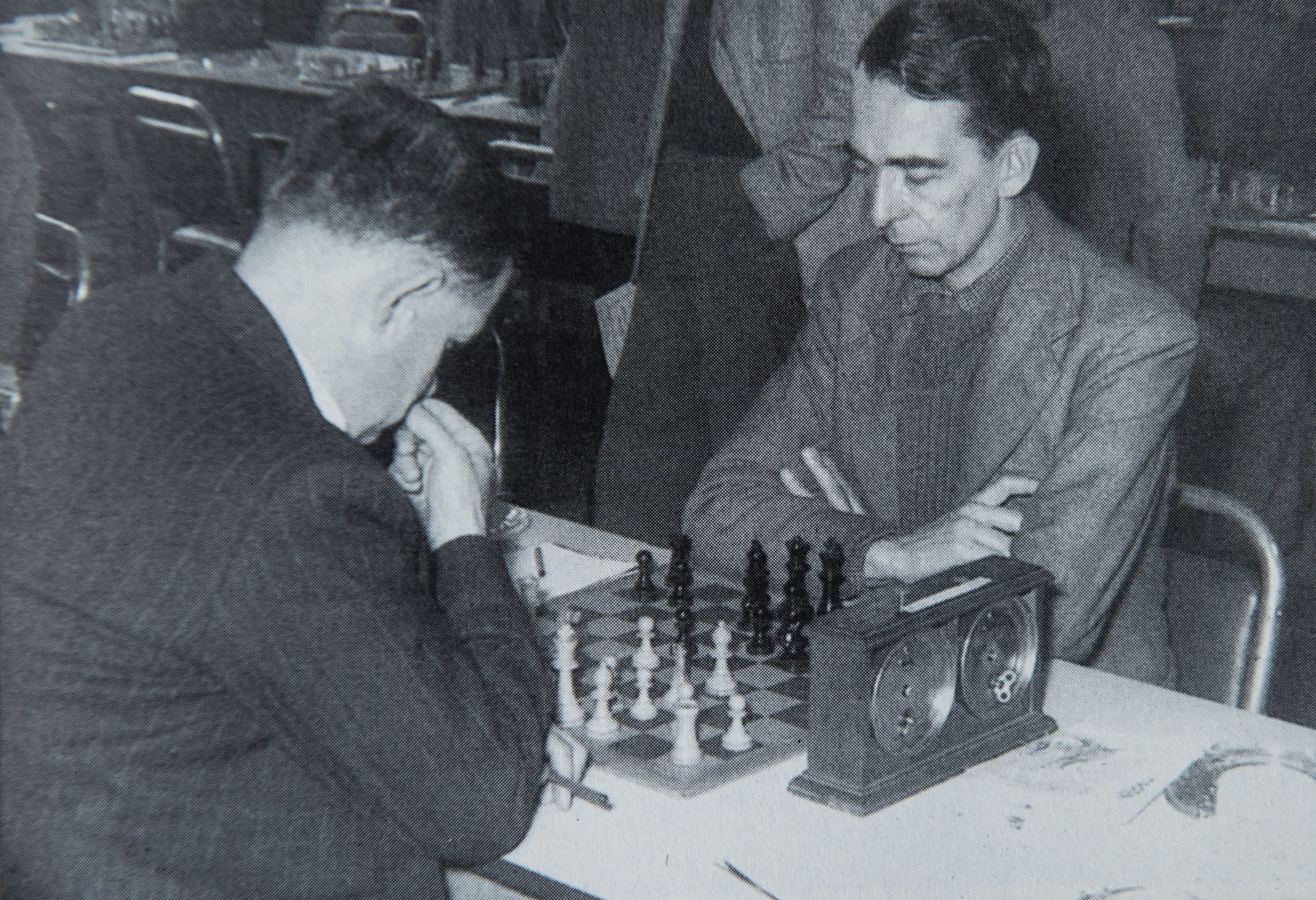
Winner of a number of small and semi-international tournaments : Baarn 1947, Paignton 1954, Whitby 1963, Thorshavn 1967, and Jersey 1975.
Played for the BCF in the International Team Tournament at Buenos Aires 1939. His best tournament result was probably his equal second in the British Championship at London 1948.
In 1954 BHW was sued BH Wood for libel by William Ritson Morry over a letter BHW sent to Henry Golding of the Monmouthshire County Chess Association warning him of WRMs financial history. Here is a summary of the action :
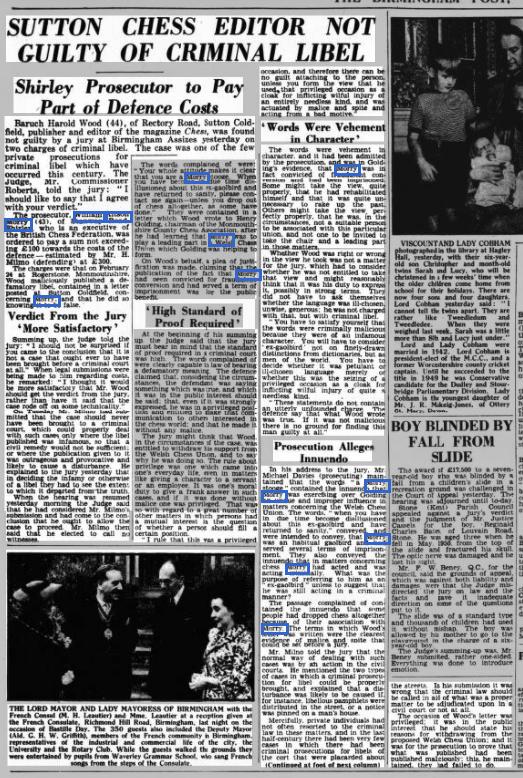
and two years later in 1956 we have this telling photograph of Ritson and BH playing at the British Championships in Blackpool. It must have been an entertaining pairing for the organisers if no-one else!
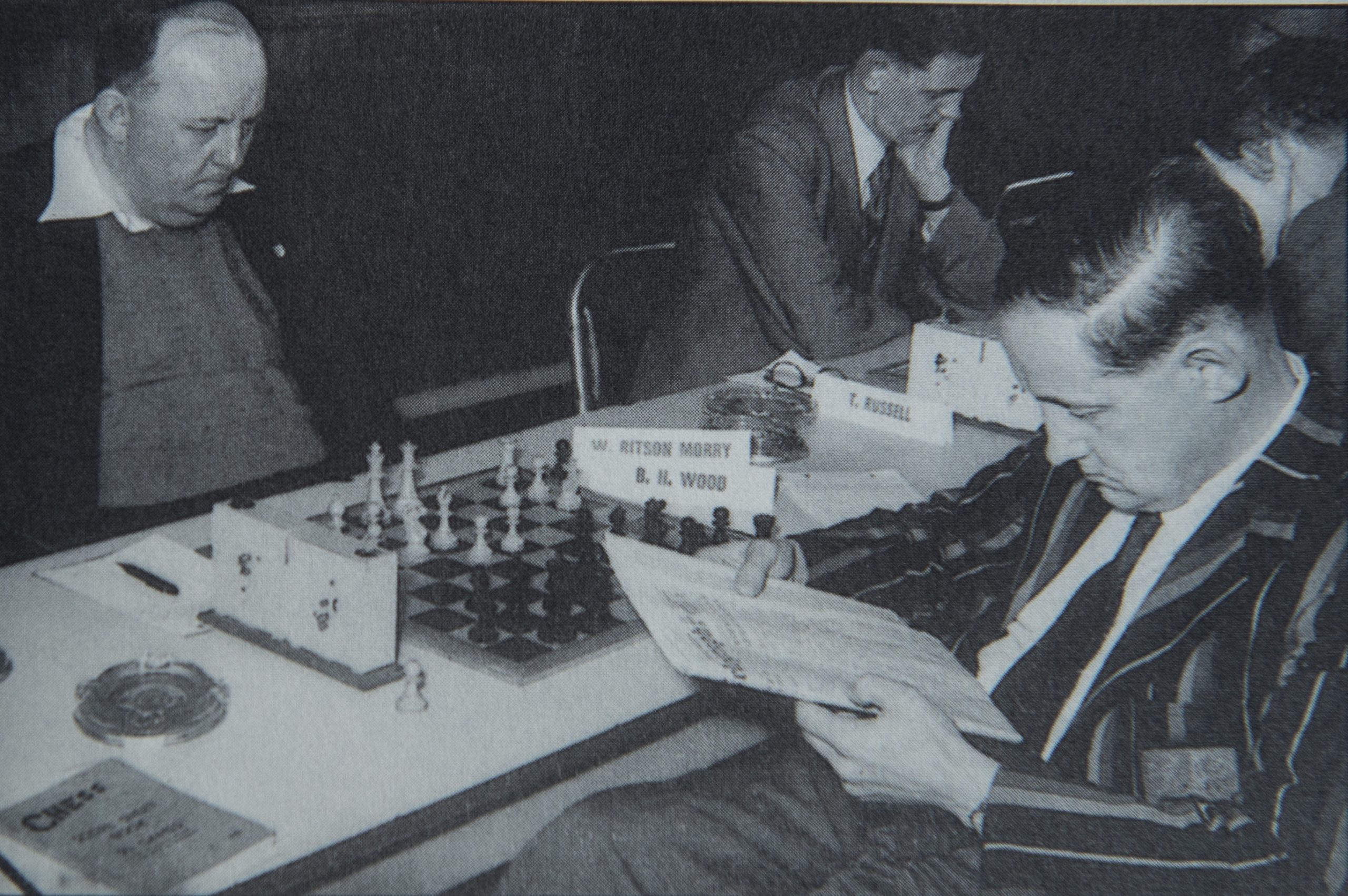
Possibly WRM was thinking this as they played:

Among his books are : Easy Guide to Chess, Sutton Coldfield 1942 et seq; World Championship Candidates Tournament 1953, Sutton Coldfield 1954. “
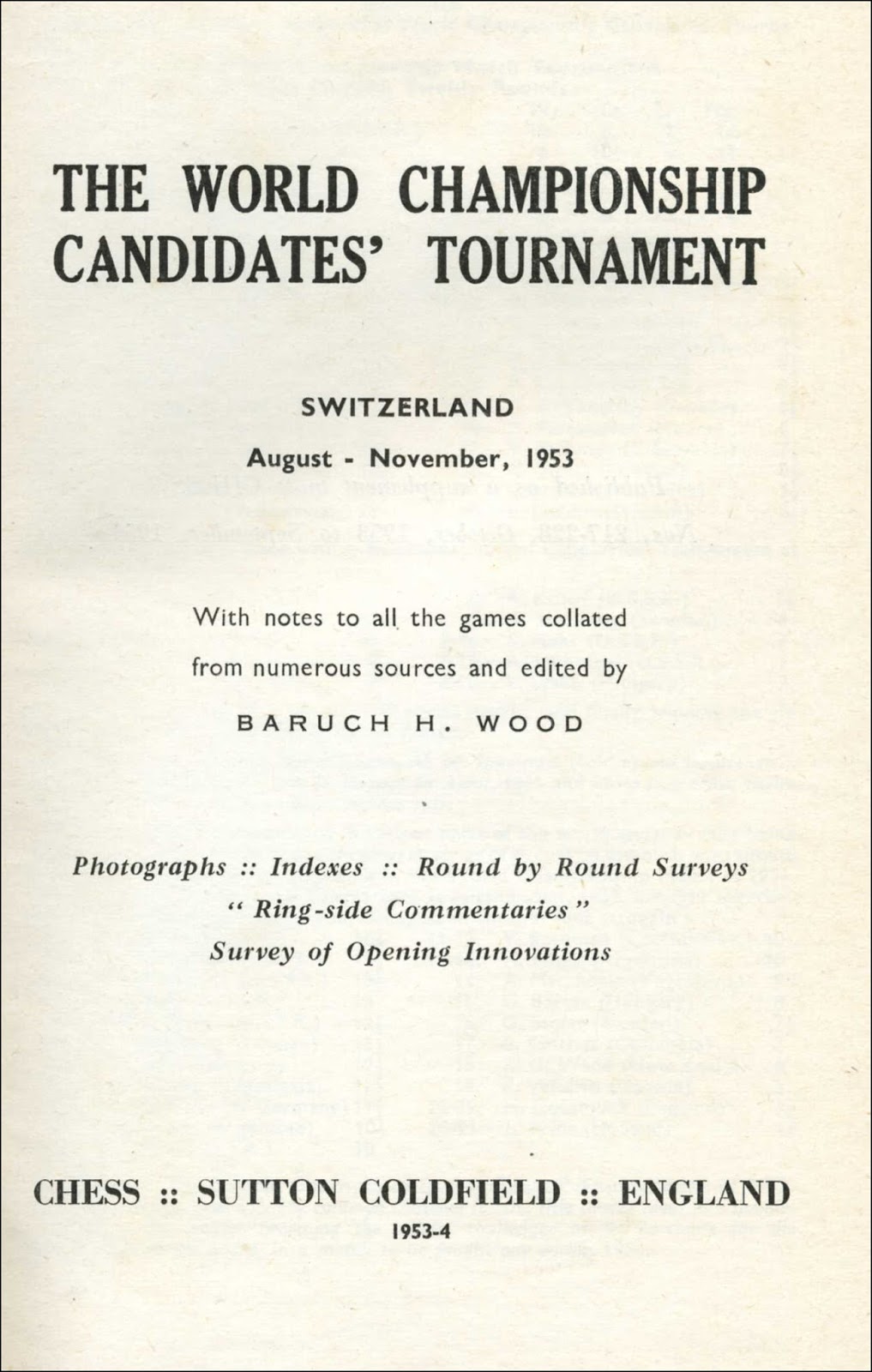
Cafferty on Wood (1989)
Here is the obituary from British Chess Magazine, Volume CIX (1989, 109), Number 5 (May), pages 210 – 211:
B. H. WOOD
Baruch Harold Wood (13 viii 1909-4 iv 1989) popularly known as “B. H.” was a significant figure of the last fifty-odd years in British chess. His life touched practically all aspects of the game as player, both OTB and CC, magazine publisher and editor, organiser of club, congress and university chess, journalist . . . the list seems endless. In 1984 he was awarded the OBE for services to chess.
Born at Sheffield, which he sometimes used as an excuse when he was accused of stubbornness, (“It’s my Yorkshire blood, you know”) he was educated in North Wales (Friar’s School, and then University College, Bangor) and at Birmingham University.
He started his chess magazine at Sutton Coldfield in 1935 as an impecunious graduate who could not find suitable work in the Depression, and his lively style ensured that it was a beacon in British chess for fifty years to come! For many British chess fans he was “Mr Chess” yet it seems a miracle that he kept the magazine going in the difficult times when interest in the game was at a low ebb. He may well have subsidised it from his journalistic work (Birmingham Post, Illustrated London News and Daily Telegraph) and from his wartime work as manager of a chemical laboratory (“The first time I ever earned a decent salary”).
His duodenal ulcer prevented him doing military service, and later in life he suffered from failing eyesight and the inability to walk which resulted from his diabetes, not diagnosed till he had suffered from it for decades.
He worked a seven-day week on the magazine, and his wife who predeceased him was often unsure when he would be home such was his devotion to the work. At times he would take off for trips abroad or long simul tours through Britain while trying to keep the magazine on schedule.
One of his last long tours was in 1967 when he drove Botvinnik around the UK. The world champion was duly impressed by the work load and wrote a very favourable account of the trip, revealing incidentally that Barry was still paying off the mortgage on his large house in Rectory Road, Sutton Coldfield where the car was parked on the forecourt as the garage was the reserve storage for a large library of chess books! His ability to quote chemical formula from memory also impressed Botvinnik.
He brought up a family of four, all of whom were skilled players, apart, perhaps from the youngest boy. Daughter Peggy
was prominent in women’s chess and married Peter Clarke at the time of the Botvinnik visit. Elder sons Chris and Frank were of over-200 strength, but had seen too much of their father’s life at close hand to want to take over the business from him. He ultimately sold out to Pergamon in 1987 though negotiations had been started much earlier. It was probably too much of a wrench to let go until failing health left him with little alternative, but he described
the terms as very generous.
Barry was a gifted linguist who was welcome abroad for his un-English approach of having a go at the native tongue. As a player he was at his best in the late 1930s (a member of the 1939 Olympiad team in Buenos Aires) till the 1950s. He should really have won the 1948 British Championship when he had the enterprising idea of having Paul Schmidt as personal coach! Yet his tournament wins run on as late as Guernsey 1975 and he was playing in the First Division of the Birmingham League within a few weeks of his death. The flesh may have been weak but a great spirit kept him going to the end.
Shall we ever see his like again?
Julius Silverman former MP for Aston (Birmingham) writes: I am very sorry to learn of the death of Barry Wood. I knew him for about 55 years and I always found him a pleasant and interesting companion and a good friend. On the last few occasions that I have met him he seemed increasingly frail. I know that the death of his dear wife was a great blow to him.
Barry’s contribution to Chess in this country has been enormous and his passing is the end of an era in chess journalism.
Barry’s journalism and his imaginative editorship made Chess a fascinating journal which it was always a pleasure to read.
Its survival for well over 50 years was a unique achievement which required persistence and dedication. He has had many
hills to surmount.
One was “… the chess lawsuit of the Century …” (This ran for about two and a half years, ending in 1940 in a victory for the magazine on appeal, Ed). Jacques versus Chess which might have brought Chess to an end. I appeared for him as counsel. We won. I received a life subscription to Chess as part of my fee. My copy still comes to me regularly. I have never enjoyed a fee so much.
Here is the article in its original form:

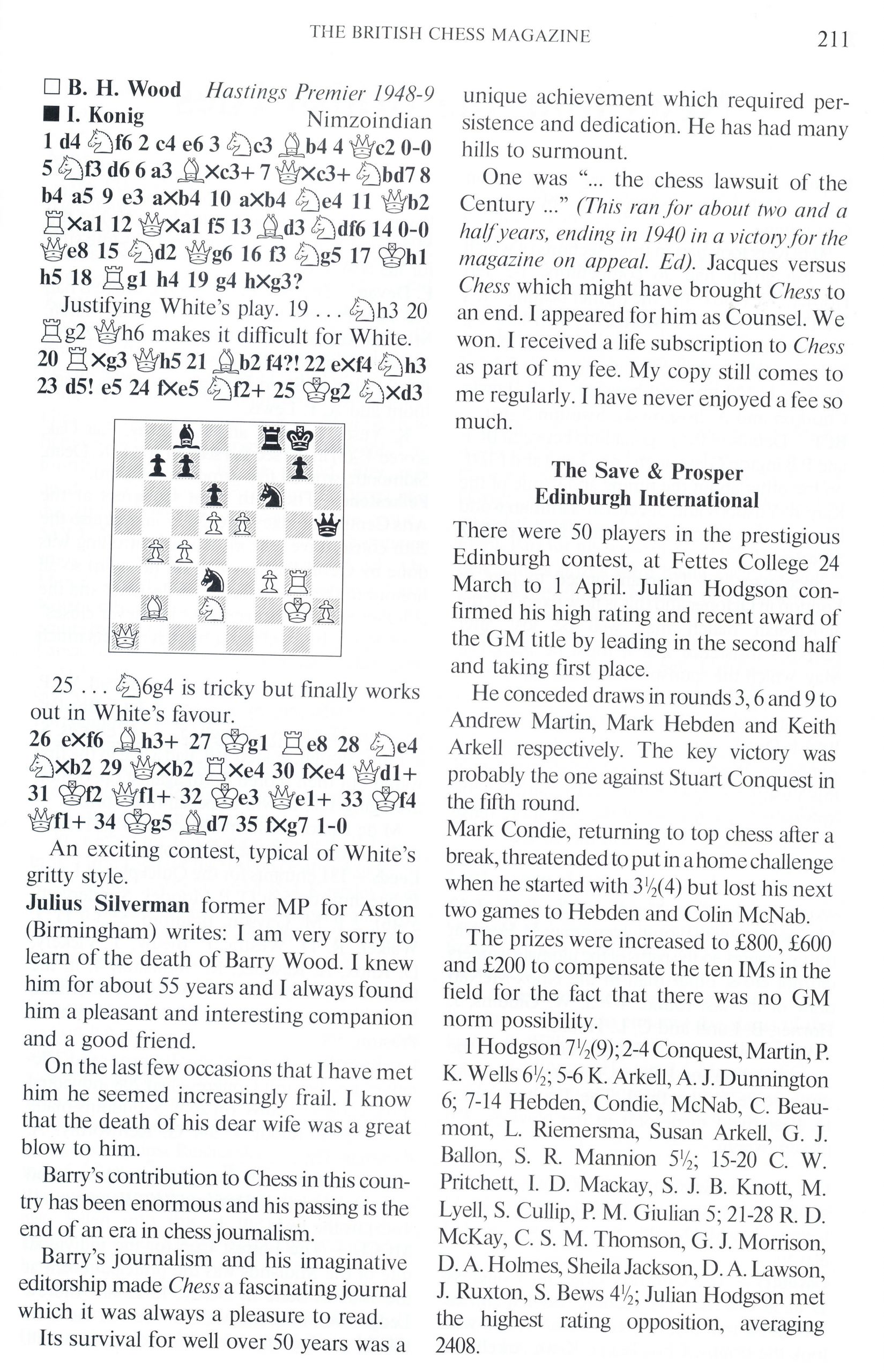
Bernard on Barry (2004)
REMEMBERING BARRY WOOD (1909-1939)
by Bernard Cafferty
One of the most influential figures in British chess of the 20th century was B. H. Wood, whom I knew personally from 1951, and whom I played regularly, over a period of three decades, till l moved from Birmingham to Hastings in 1981. Here are some
memories of the man who was thought of by many in Britain as “Mr Chess”.
Born in Sheffield, Baruch Harold Wood had his secondary education in North Wales at the same grammar school as W Ritson
Morry who was later to become his Midlands colleague and bitter rival. BH always attributed his well-known stubbornness (he never resigned early) to “his Yorkshire blood”. Wood and Morry were to be students together at Birmingham University after BH gained his BSc in Wales. Then the pair faced the hard task of finding work in depression-struck mid-1930s England. BH founded his monthly magazine CHESS in 1935, an act of amazing optimism which only his great appetite for work could justify. The magazine was based in Sutton Coldfield, just north of Birmingham, at gloomy premises known as Masonic Buildings.
The early decades of this publication were marked by the outpouring of glorious journalism of a popular sort. The man’s love
of the game shone through his work and he recruited such contributors as the chatty Koltanowski and the prince of annotators
Alexander Alekhine. Later he became the long-serving columnist of the Birmingham Post, from 1949 of the weekly Illustrated London News, and even later of the Daily Telegraph. A feature of the magazine was its lively letters from readers which made for more interesting reading than the equivalent occasional letter to be found in the staid
BCM. The readers also made pertinent contributions to opening theory, especially in going through the 1946 MCO with a fine toothcomb and reporting their discoveries to Sutton Coldfield.
BH wrote a best-selling Easy Guide to Chess which went through several editions and was far more user-friendly than other primers on the market at the time. He also designed a luxury set, the Coldfield, and produced various chess clocks with new features. BH was a member of the BCF Olympiad side that played in the first part of the Buenos Aires Olympiad in the autumn of 1939. After the team’s withdrawal due to the outbreak of war, he stayed on in Argentina for a short while, taking part in a short tournament where he met the legendary Alekhine.
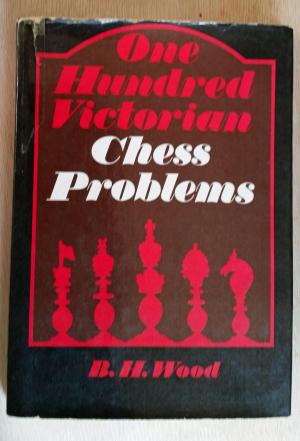
BH was married to Marjorie, a Birmingham primary school teacher, and had three sons and a daughter. The elder two boys,
Chris and Frank, were strong players but not Philip. His daughter Peggy was our leading girl player of the 1950s, and married Peter Clarke in 1962. One should note that BH was not Jewish, as many assumed from the name Baruch – he was generally addressed as Barry by his wife and close friends. Others called him just by the initials BH. Everyone in British chess knew exactly who you meant when you said BH. Many thought of him as a sharp business-man. In any event, the fearsome workload he shouldered meant that none of his children, seeing this at first hand, aspired to carry on the magazine as a family business. To many in the British chess community who had never seen top players in action, BH was their first contact with the wider chess world due to the exhausting simul tours he made to many clubs the length and breadth of the UK.
Later, he organized CHESS Festivals starting from 1953. These were our earliest open tournaments, held at attractive venues such as Cheltenham, Whitby, Eastbourne and Southport. These events created the opportunity for British amateurs to meet continental grandmaster opposition like Donner and O’Kelly. BH had great confidence in his ability – his MSc at Birmingham University was in chemistry, but in 1946-7 he started studying nuclear physics privately, telling Brian Reilly, who was employed by him at that time, that it was the science of the future. I have to simply marvel at this – where did he find the time? In his self-portrait in connection with the GB-USSR match of 1946 he revealed that he had been studying Russian privately with a view to taking an external degree in it at Birmingham University.
The post-war decade saw him at his most active. He was BCF delegate at early FIDE meetings post-1946, the period that saw the mighty Soviet Union admitted to membership in 1947. BH was instrumental in maintaining Spain’s membership of FIDE at the same time, despite Soviet opposition to Franco’s fascism. He claimed to me he was always a most welcome guest in Spain thereafter.
Battles with the BCF
BH had been exempt from military service due to a duodenal ulcer. He spent the war keeping the magazine alive in his spare time as he was put in charge of a research laboratory at the Birmingham Chemical Company. During the war the government had the power under emergency legislation to direct citizens into any sort of work that would contribute to the war effort. His comment to me on that intensive period was: “It was the first time I ever drew a decent salary”. After a short spell as BCF FIDE delegate, he fell out with the ruling body in the early 1950s. His view was that the national body was ultra-conservative and not open to fresh ideas such as the knockout championship open to all which he organised in 1949-50. Lo and behold, a few months later the BCF started organising regional competitions to arrange for qualification for the British Championship! BH often criticised the BCF in his magazine. In June 1950 he wrote the first of a planned series of articles on the evergreen theme “Where is British Chess Going?” and forwarded a copy to the BCF just before publication. The BCF legal eagle Professor Wheatcroft immediately threatened to take out an injunction, so putting the frighteners on the printers. Rather than delay the July issue (not that subscribers were not used to a rather irregular schedule!), BH brought out the issue with white space, on two pages, a dramatic way of alerting the readers to the dispute. The promised articles, which he said would appear after the dispute was settled, never appeared.
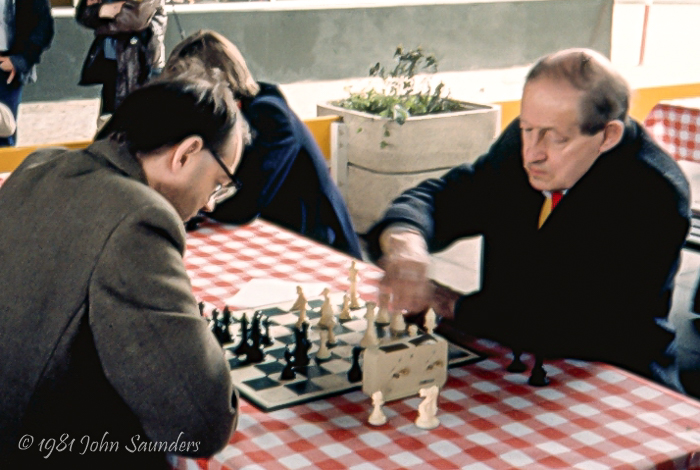
There were also tensions with BCF figures like Alexander and Golombek, in the latter case probably due to professional rivalry and Harry G’s identification with the BCM. Another prominent figure with whom BH crossed swords was the flamboyant Liverpool barrister Gerald Abrahams who threatened to sue over a report in CHESS of gambling debts incurred “on the turf’.
BH was no stranger to litigation. For example he had had a lawsuit with Jaques culminating in 1940 over the use of the term
“genuine Staunton-pattern sets” in his advertising. The case was initially lost, a potentially crippling blow, but then won on appeal with the aid of solicitor Julius Silverman (later a prominent Birmingham MP), Ritson Morry, Sir George Thomas and
other well-wishers. When Wood-Morry hostility was at its height in the early 1950s over pro- and anti-BCF views, BH drew attention in a letter to a Welsh chess organiser to Ritson’s short period in jail. The uncomplimentary term ‘gaolbird’ was used. A court case followed which the penurious Ritson, having been struck off as a solicitor could hardly afford, yet BH was cleared on the defence of justification. My fellow students and I at Birmingham University could only marvel at the daily press reports on the wrangles between two of our patrons whom we had feted at a celebratory dinner only a short while before.
Here is the point at which to mention BH’s support for chess in the universities. He was the long-time President of the
BUCA (British Universities’ Chess Association) and turned up at many of their events with support. He loaned equipment in the early days when not every chess club had sufficient clocks for a match – bear in mind that the austerity period in Britain lasted for years after 1945. BH also supported correspondence chess, being the founder of the Postal Chess League, a team event very popular in its day but now defunct.
BH’s best playing performance was the British Championship of 1948 when he came second to Broadbent. The Midlander had actually started with 6.5 points from seven games, but the unsatisfactory position arose that he had to meet Broadbent in the last round when each had an adjourned game still to finish off.

The tension got to BH, he missed a clear winning chance against the Northerner and lost. Yet he should really have taken the title on the merits of the positions he had achieved. His rivals resented the fact that he had hired a second, namely Paul Schmidt, the Estonian player who was once thought of as almost as good as Keres in his native land. Schmidt had won the German Championship during the war in 1941. The British amateurs of 1948 were not impressed by this intrusion of professionalism and the importation of someone who carried the taint of possible Nazism. According to Brian Reilly, Gerald Abrahams was particularly scathing.
BH made a good impression on Botvinnik when the latter stayed at the Wood residence in Rectory Road, Sutton Coldfield, in 1967 (the reference for those who can read Russian is Baturinsky’s “…Tvorchestvo” trilogy on Botvinnik. The article was entitled: Albion shakhmatny i inoy. It appears on pp435 -448 of the third volume. A shortened version appears in English in Botvinnik’s autobiography Achieving the Aim). When I drew BH’s attention to the article and its peculiar title he responded with his usual erudite comment: ‘Albion? Yes, that’s the Roman reference to the white cliffs of Dover”. For most Brummies, “The Albion” did not mean a local pub, but rather the West Bromwich Albion football team!
In theory, the communist Botvinnik should have been distant from his host, the Midlands entrepreneur and business man, who drove him round to his engagements in Britain for three weeks, but their common love of chess triumphed over ideological
differences. In particular, the speed of production of CHESS, now on its own presses, was compared very favourably by the Soviet Patriarch to that of Shakhmaty v SSSR. British trade unions had a different view of course, in pre-Thatcher days, and BH had some tricky obstacles to overcome in this field. The Muscovite Botvinnik recorded the fact that the garage of BH’s large house was full of chess books (as were various rooms – to the abiding despair of Marjorie), so the family car was always parked outside on the drive. BH revealed to Botvinnik that he had not been able pay off his mortgage for decades due to the variable cash flow from his business and journalism.
BH was in love with study as a young man, he once told me, and he had a facility in various European languages, which made him always welcome abroad. Over the years, BH had a number of employees who were strong players, such as Brian Reilly, Owen Hindle and Robert Bellin, but none of them lasted long. Owen Hindle, a person of placid temperament, stuck it out the longest, but even he had his patience tried by the ‘boss’. One cannot hide the fact that BH was a controversial figure – perhaps the clue after all is that reference to his stubbornness and Yorkshire blood? I contributed to his magazine for many years, but certainly never wanted to work for him full-time!
I used to see BH in the last decade of his life only in the Hastings press room. For his age, he still took on a fantastic workload. Peter Clarke once commented that his father-in-law gave the impression of believing he would live for ever. Finally, Anno Domini told and BH sold his business to Robert Maxwell of Pergamon fame/notoriety in 1988.
In his final year, BH suffered from diabetes, and the resulting inability to walk meant he was confined to a wheelchair, but he still insisted on visiting Hastings one last time, where, in his prime, he had specialised in taking away Premier score sheets. Often they were taken not just to his hotel room, but even back to Sutton Coldfield, so hindering the work of other chess journalists unless Ritson or later, Peter Griffiths had got in first to create the bulletin.
What a character! We lack such a colourful figure nowadays. Where he still alive today, I imagine he would still be trying to put a bomb under the BCF.
Winter, Jaques and Wood
From Chess Explorations (Cadogan Chess, 1996) by Edward Winter we have further detail on the Jaques court case:
“Paul Timson, a lawyer, sends us reports on two legal cases connected with chess. In 1939 B.H.Wood found himself in the dock for having advertised for sale in CHESS in 1937 ‘genuine Staunton chessmen’. The plaintiffs were John Jaques & Son, Ltd. Sir George Thomas., Max Euwe and Lodewijk Prins appeared as witnesses for the defence. The case is referred to by Fred Wren in his article ‘Tales of a Woodpusher: Woodpusher’s Woodpile’, which appeared in Chess Review, 1949 and was reprinted in Reinfeld’s The Treasury of Chess Lore. The issues of CHESS of the time also contained a huge amount of material on the case. The decision was that ‘Staunton’ alone was permissible description, but that the phrase ‘genuine Staunton’ implied a product made by Jaques & Son Ltd., as opposed to any Staunton pattern. However, B.H. Wood appealed and, in 1940, won.”
Other Sources
If you can get access then we recommend the eleven-page “B.H. Wood and his chess playing family” article in the August-2009 issue of Chess Monthly written by his son Chris Wood (helped by brother Frank).
Likewise The Chess Lawsuit of the Century is detailed in CHESS, volume 52, Number 1018, pp.392 – 394 by BHW himself.
Here is an obituary from the MCCU
Background information from Sutton Coldfield Chess Club
Barry Wood. A Personal Memory from Neil Blackburn (aka SimaginFan)
Alekhine’s Articles for CHESS by Michael Clapham
Here is his Wikipedia entry.
Download a pdf version of the 1st issue of CHESS
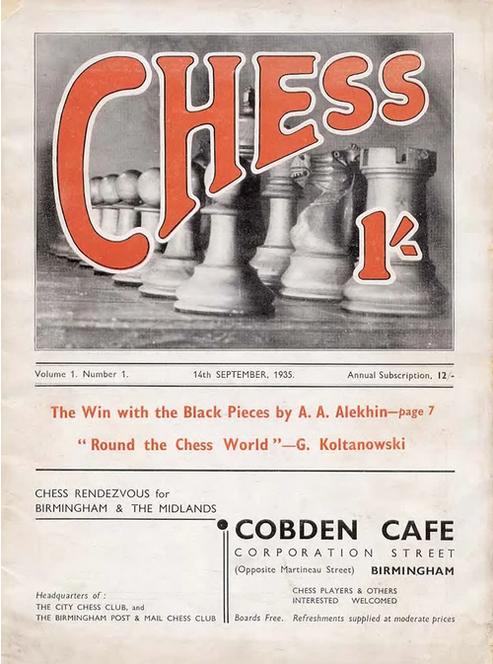
Remembering Sir Stuart Milner-Barry KCVO CB OBE (20-ix-1906 25-iii-1995)
BCN remembers Sir Stuart Milner-Barry KCVO CB OBE who passed away on Saturday, March 25th, 1995 in Lewisham Hospital, London aged 88. He was laid to rest in the Great Shelford Cemetery, Cambridge Road, Great Shelford, Cambridge CB22 5JJ.
A memorial service was held for him at Westminster Abbey on 15 June 1995.
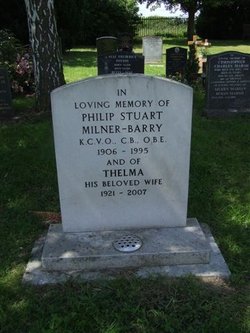

Philip Stuart Milner-Barry was born on Thursday, September 20th 1906 in Mill Hill in the London Borough of Barnet. Mill Hill falls under the Hendon Parliamentary constituency.
Parents
His parents were Lieutenant-Commander Edward Leopold (1867-1917) and Edith Mary Milner-Barry (born 17th May 1866, died 1949, née Besant). Edward was in the Royal Naval Volunteer Reserve, H.M.S. “Wallington.” Prior to his war service his father was a professor of modern languages at the University of Bangor and Edith was the daughter of Dr. William Henry Besant, a renowned mathematical fellow of St John’s College, Cambridge University.
Stuart was the second born of six children, There was an older sister Alda Mary (18th August 1893-1938) and four brothers Edward William Besant (?-1911) , Walter Leopold (1904-1982), John O’Brien (4 December 1898 – 28 February 1954) and Patrick James . Many of the Milner-Barry family were laid to rest in the Great Shelford churchyard.
Stuart learned chess at the age of eight and his autobiographical article below goes into more depth.
He was educated at Cheltenham College, and won a scholarship to Trinity College, Cambridge, where he obtained firsts in classics and moral sciences.
On leaving Cambridge in 1927 he went to work at the London Stock Exchange (LSE).
According to the 1928 and 1929 electoral rolls he was living with his mother Edith and his brothers Walter and John O’Brien at 50 De Freville Avenue, Cambridge CB4 1HT:
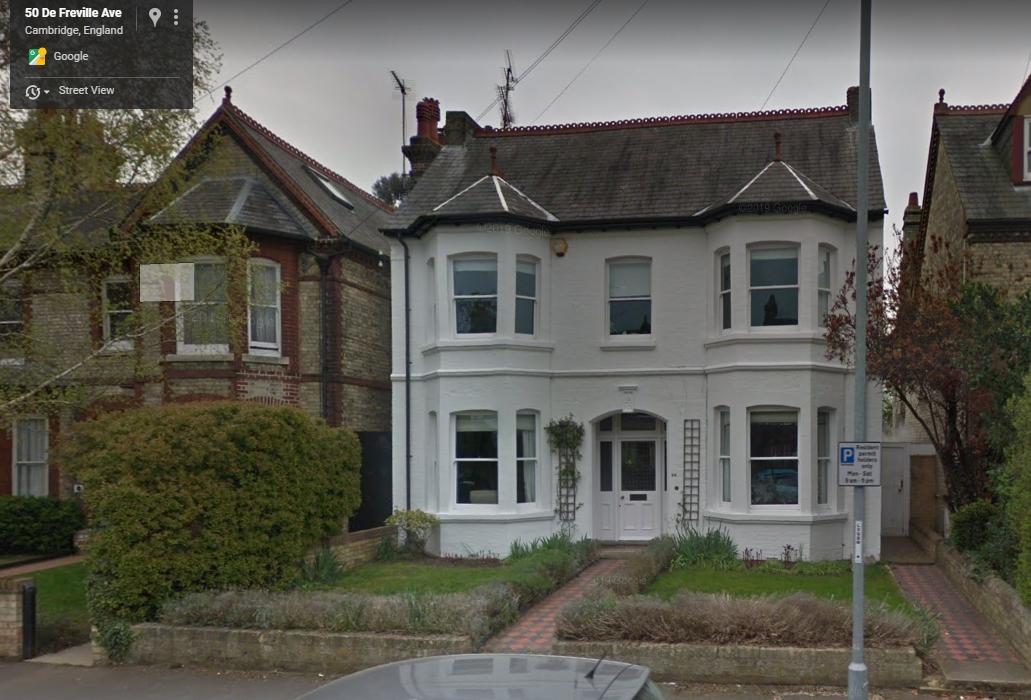
In 1931 the family had relocated to 11, Park Terrace, Cambridge which is nearby to Emmanuel College. Now living with the family was brother Patrick James.
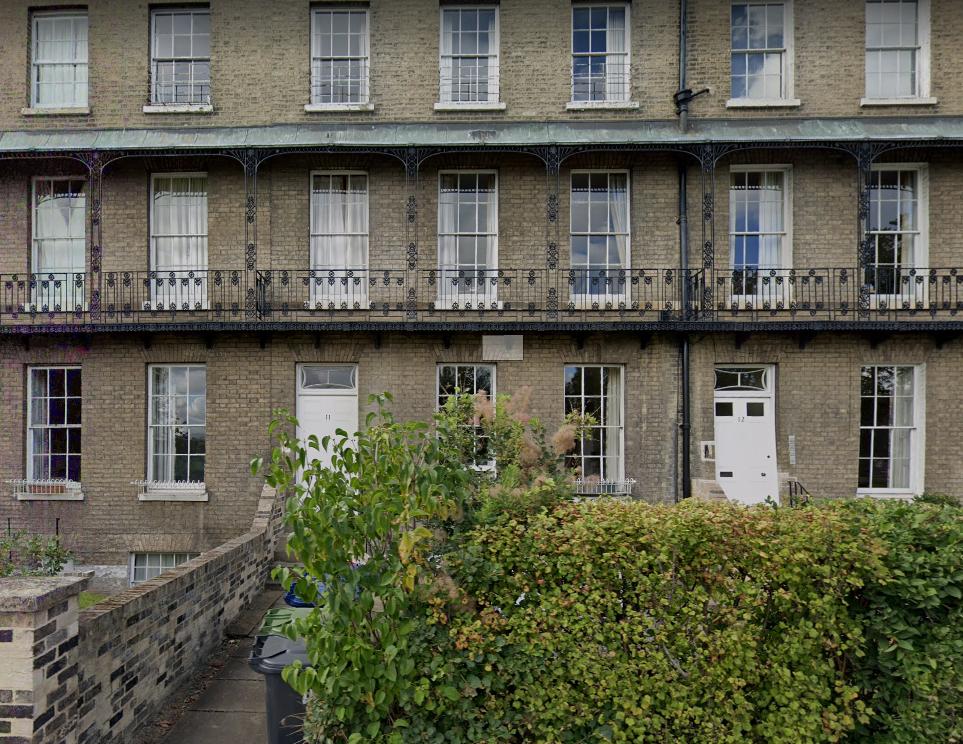
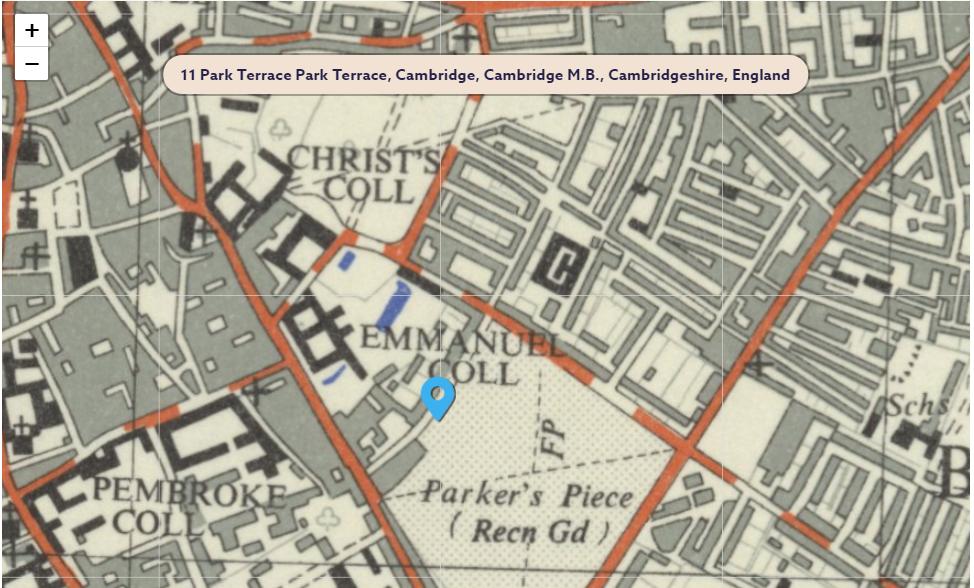
He discovered that he did not enjoy his LSE work and switched careers to became chess correspondent of The Times in 1938.
At the time (September 29th) of the 1939 register he (aged 33) was living as a journalist in a household of three with his mother Edith who carried out “unpaid domestic duties” and sister Alda who was of “private means”.
Honours
In 1946 Stuart was awarded the OBE from the Civil Division in the New Years Honours . The citation reads that was “employed in a Department of the Foreign Office”. A modern translation of this was he was engaged in Top Secret work at Bletchley Park alongside Alan Turing, Gordon Welchman and Hugh Alexander and was thus honoured for his war work. More on this later…
After the war he worked in the Treasury, and later in 1966 administered the British honours system where he helped to facilitate the award of honours to other chess players ultimately retiring in 1977.
As well as the OBE he was made Companion of the Order of the Bath (CB) in 1962 and Knight Commander of the Royal Victorian Order (KCV0) in 1975.
A conference room was named after him at the Civil Service Club, 13 – 15 Great Scotland Yard, London SW1A 2HJ.
Peter Hennessy* and The Rewarding Career of Sir Stuart Milner-Barry
*Peter Hennessy is a renowned historian and journalist. The following was originally published in The Times in 1977 following PSMBs retirement.
“Few careers can have been as varied and rewarding as that of Sir Stuart Milner-Barry, who retires today as Ceremonial Officer to the Civil Service Department and custodian of the British honours system.
Into the 48 years since he left Cambridge with a degrees in classics and moral sciences, he has crammed spells as a stockbroker, chess correspondent of The Times and member of the British chess team, a wartime codebreaker for MI6 and a senior Treasury official before taking over administration of the nations “gongs and bongs ” nearly 11 years ago.
The richness of Sir Stuart’s progression is all the more striking given the difficulty he experienced in finding a job at all after university because of the Wall Street crash in 1929. His first 10 years spanned the slump of the 1930s, when there was little for a stockbroker to do, but fill his days reading The Times.
In 1938 he joined the paper full time as chess correspondent and, along with many of the world’s leading players, he was nearly trapped in Buenos Aires when war broke out the next year (ed. should be month rather than year). Catching the first ship home, he finished up with that brilliant collection of dons, antique dealers, mathematicians and chess players billeted in Nissen huts in the park of Buckinghamshire country house, who broke the code transmitted by the German Enigma machine.

Sir Stuart eventually rose to lead hut six, which broke the most secret messages of the Luftwaffe. Quartered in a comfortable Bletchley public house with another formidable chess player, C. H. O’D. Alexander, and Gordon Welchman, the Cambridge mathematician, he acquired a taste for rum, the only alcohol in plentiful supply for some reason, and a sense of guilt about enjoying, his stimulating, important job, safe while other men faced the bullets.
He was not tempted to stay on in the arcane world of code-breaking after the war, unlike his friend, the late Hugh Alexander, as he regards such activities in peacetime as akin to reading somebody’s private correspondence, though he recognizes the necessity of such efforts for intelligence work. Instead, he took the reconstruction competition for the administrative class of the Civil Service and entered the Treasury.
While battling with the post-war dollar shortage in Treasury Chambers he “found a wife, carried her off and lived happily ever after”, as he cheerfully puts it. Apart from a spell as establishment officer to the Ministry of Health, he stayed at the Treasury until he reached the normal retiring age of 60 in 1966.
Lord Helsby, then Head of the Home Civil Service, asked him to stay on and take over the smooth machine that underpins the honours system, which had been built up over many years by Sir Robert Knox. Sir Stuart has loved every minute of it.
He looks every inch the part, a tall stately man of immense natural dignity, he is the incarnation of propriety. The stresses to which the honours system has been subjected to in recent years must have caused him great distress but he is far too proper a civil servant to talk about it. His retirement at 70 has nothing to do with the alarums and excursions stimulated by the honours lists associated with Harold Wilson.
“One of my principal jobs has been the protection of the system”, he says. “The pleasures are very great. It’s fascinating in itself. You see so much of the history of people in every walk of like”.
Sir Stuart waxes eloquent about the beauty and uniqueness of the British honours system. He is a confirmed monarchist, so the spontaneity of the jubilee celebrations provides the perfect backcloth for his departure. He is succeeded by Mr. Richard Sharp, an under-secretary at the Treasury.”
Below is the original article:
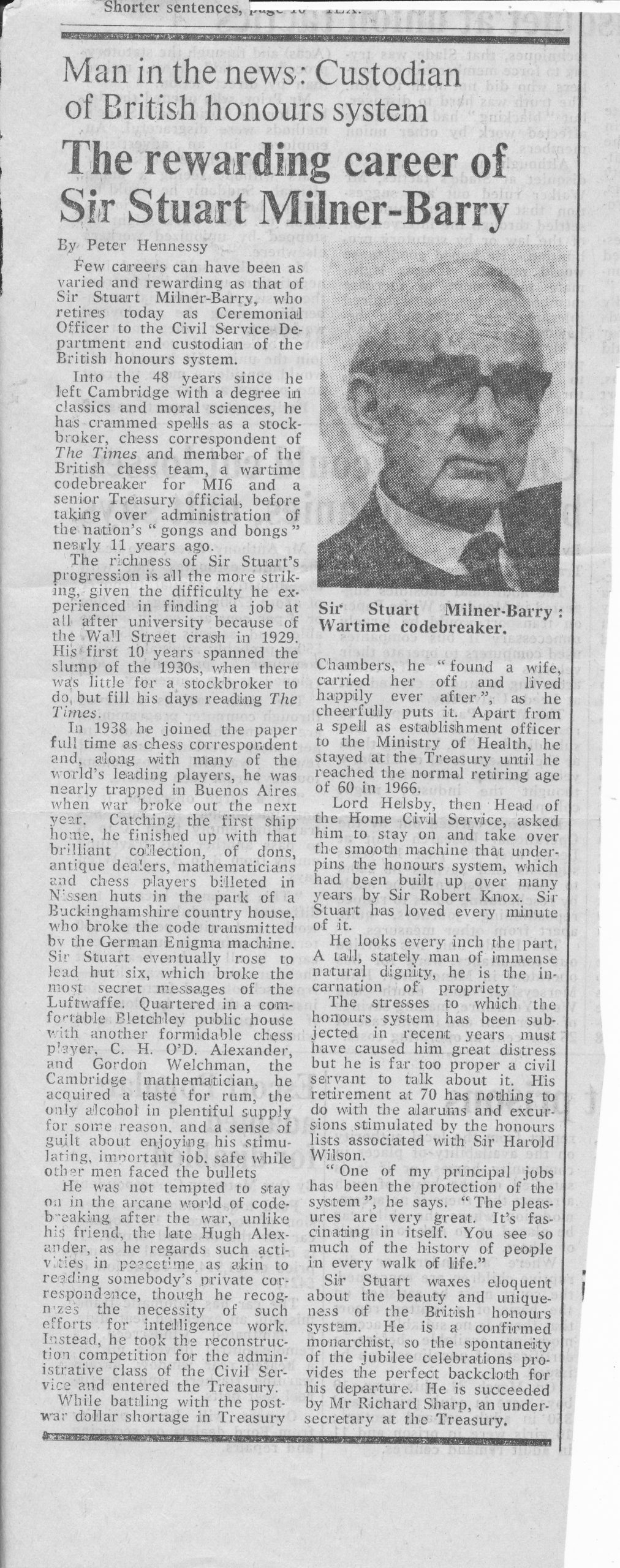
Marriage to Thelma
In the third quarter of 1947 Stuart married Thelma Tennant Wells in Westminster. A consequence of the “rules of the day” of the marriage was that Thelma had to resign her post in the Treasury immediately. (Ed: this somewhat antiquated view of life was finally corrected in 1972 when the Civil Service dispensed with this rule).
Lady Thelma was to support Stuart in his chess activities for their married life. She also served as the first UK Director of Women’s Chess and made many lasting friendships in the chess world. She was buried together with Stuart in 2007. Stuart himself was President of the British Chess Federation between 1970 and 1973 as well as being Director of International Chess following his presidency.
Stuart and Thelma had three children, one son and two daughters: Philip O. (born 1953), Jane E (born 1950) and Alda M (born 1958).
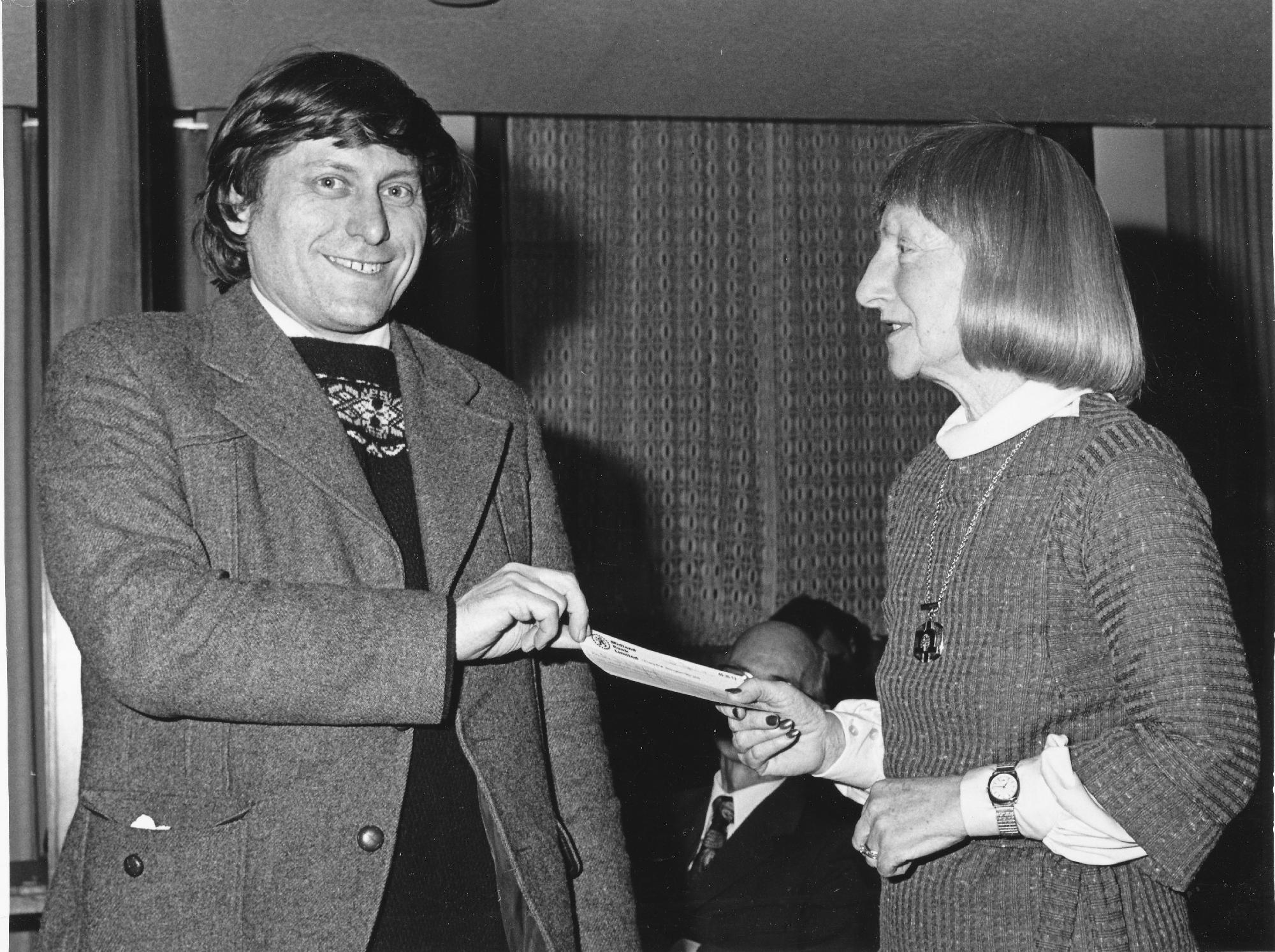
Stuart was knighted on January 1st 1975 for his role as the “Ceremonial Officer of Civil Service Department” between 1966-77. Technically the knighthood is known as a KCVO.
Milner-Barry was Southern Counties (SCCU) champion for the 1960-61 season.
He first competed in the British Championship in 1931 and made regular appearences as late as 1978: a span of 47 years!
In their retirement years Stuart and Thelma lived at the salubrious location of 43 Blackheath Park, Blackheath, London SE3 9RW.
Autobiography
In June of 1933 at the age of 27 Stuart wrote an autobiographical piece for British Chess Magazine to be found in Volume LIII (53, 1933), Number 6 (June), pp. 241-2 as follows:
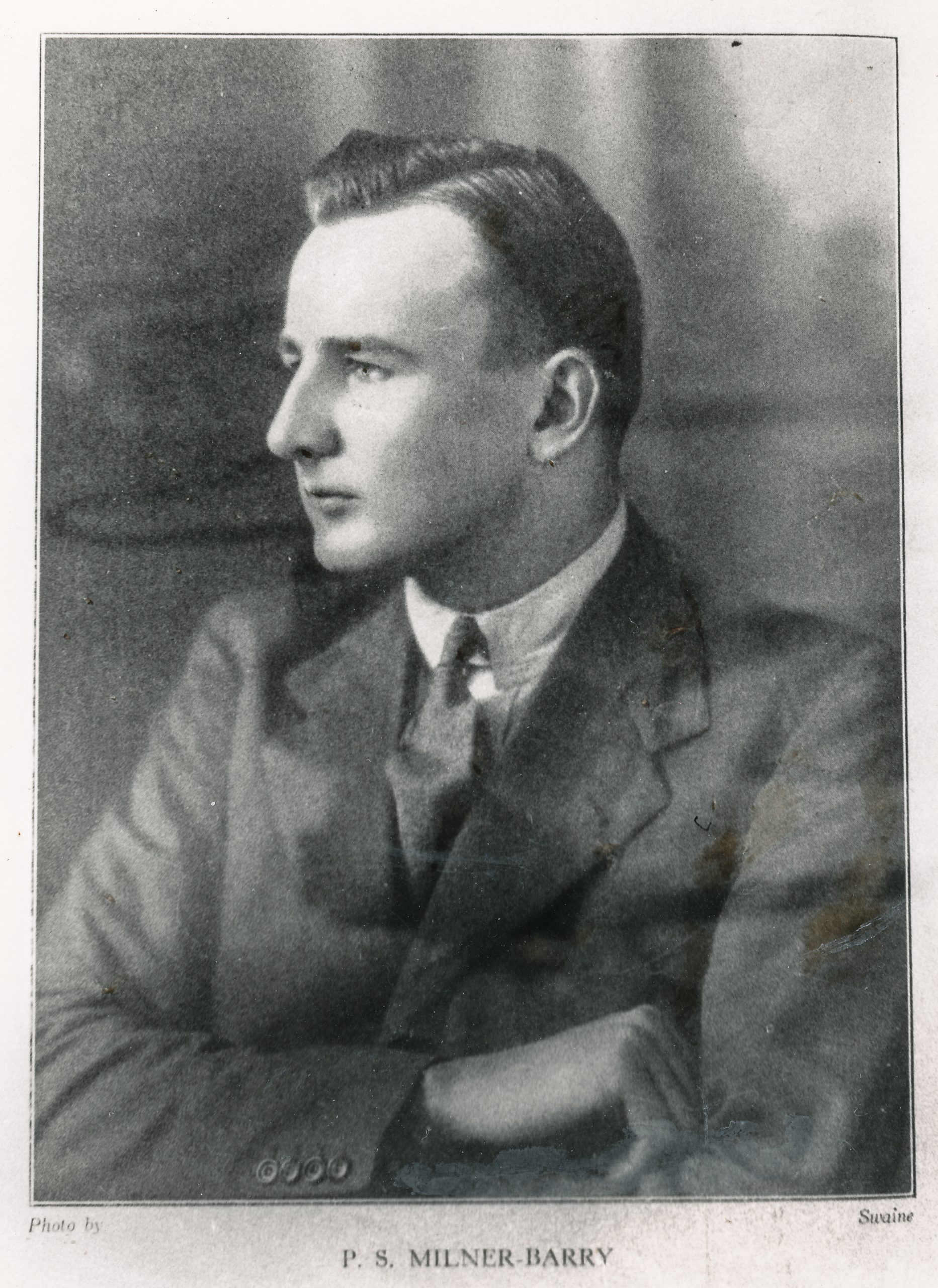
P.S. Milner-Barry
Champion of the City of London Chess Club
I learned chess at the age of eight and played regularly after that with members of my family. My first-class practise (with due respect to my family) began at fourteen, when Mr. Bertram Goulding Brown and started a series of serious friendly games which has continued ever since, almost without interruption. The vast majority of these games were begun with 1 P-K4, P-K4, and as we both eschewed the Lopez and the Four Knights, we have acquired a fairly extensive knowledge of the older forms of the King’s side openings – King’s Gambit (all sorts), Vienna, Guioco Piano, Evans’s Gambit, Danish Gambit, Bishop’s Opening, etc. These games have undoubtedly born the most important influence in my development, apart from which the serious friendly game is to me much the most enjoyable form of chess. We each have runs of success, and there has never been much to choose between us.
(An aside : Stuart wrote a extensive obituary of Bertram Goulding Brown which appeared in British Chess Magazine, Volume LXXXV (85, 1965), Number 12(December) pp.344-45 in which he noted:
B. Goulding Brown was my oldest and closest Cambridge friend, I started playing with him in 1920, and we have played ever since, though, alas, not nearly so often since the War as in the 1920s and 1930. Our last games, when he was eighty three, were played about a year ago in the same book-congested upstairs study at Brookside as all the others had been. Both were cut-and-thrust draws: a Kieseritzky Gambit from myself and Two Knights’ (with 4.P-Q4 for White) were typical of the openings we adopted. We were planning another this Autumn, but he died suddenly and peacefully at the end of August, )
I have also been very fortunate in playing a good deal with C.H.O’D. Alexander. Our games have taken the form of a series of short matches (first player to win three games) played with clocks. Alexander was already stronger than me when he came up to Cambridge, and he won the University Championship from me in his first year and my fourth.

All three matches have been won by him, the first easily and the last two by the narrowest possible margin; a fourth now in progress looks like coming to an early and ignominious conclusion (Score 0-2-2). These results have neither surprised nor disappointed me : I would not back any player in England to do better.
(ed. For more detail on PSMBs matches with Hugh we refer to you our article on Hugh).
In 1923 I won the first Boy’s Championship at Hastings, but lost badly the following year (ed. Alexander won).

Since then I have competed twice at Hastings, once tieing with Miss Menchik in the Major Reserve for the first place and once for the last, in the Major. In between I played in the Major Open at Tenby, and came out fifth, with my first important win against Znosko-Borovsky.
Meanwhile I played four years against Oxford, with somewhat chequered results. The first year I won against G. Abrahams, the second and third years, I played K.H. Bancroft and scored a (very fortunate) draw and a win, while finally I permitted Abrahams to fork my King and Queen with a Knight, a performance unhappily repeated by R.L. Mitchell in the following year (his Queen was pinned by a Bishop). Since then the spell has been broken. In 1931 I played in the British Championships at Worcester, and was quite satisfied with my form, though my score of 5 out of 11 was nothing to write home about. In February 1932, I have the great good fortune to fill a vacant place in the Sunday Referee* London International Tournament, an extremely exhausting but very valuable experience which I greatly appreciated.
*The Sunday Referee was a newspaper of the time which was adsorbed into The Sunday Chronicle in 1939.

My score of 3.5 out of 11, equal with Sir George Thomas and above W. Winter and V. Buerger, was quite as good as I expected. After this came the Cambridge Tournament, which, though a very delightful little congress, was a fiasco from my point of view. Three of my opponents were unkind enough to show their best form against me, and two other games I spoilt by clock trouble.
I do not expect to play much serious competitive chess in future. I admire sincerely the business man who is ready, after a hard day at the office, to undergo a further four hours of strenuous mental exertion; and who is also prepared to spend his all too brief holidays in the same exhausting pursuit. Moreover, while many players find the atmosphere of match and tournament play a stimulus or an inspiration, it only renders me nervous, and though this does not affect my play it certainly interferes with my enjoyment. As long as I can play my week-end games with B.G.B., and inveigle Alexander from Winchester to add another to his monotonous series of victories, I shall not much mind if I can only occasionally take part in congresses. ”
PS Milner-Barry Cup
In issue #53 (April 1946) of West London Chess Club’s Gazette we have a news item concerning a newly inaugurated trophy called the PS Milner-Barry Cup:
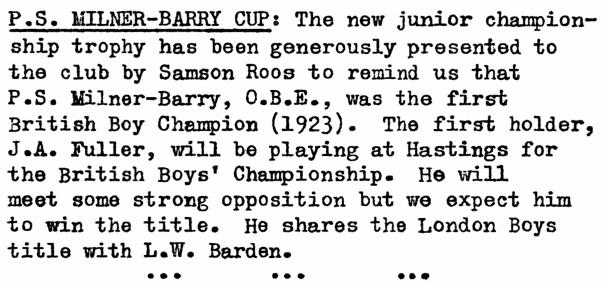
Sergeant on Milner-Barry
Writing in A Century of British Chess (Hutchinson, 1934), PW Sergeant records in Chapter XXI, 1925 to 1934:
The City of London C.C.’s Championship Tournament which ended this (1933) spring deserves special mention; for it introduced an entirely new name on the list of champions, that of P.S. Milner-Barry, formerly of Cheltenham College and of Cambridge University. Ten years previously he had won the first boys’ championship at Hastings.
Now, he won the City of London Championship with a score of 11 out of 14, followed by the bearers of such noted names as R.P. Michell (10 points), Sir George Thomas (9), and E.G. Sergeant (8.5). It caused some surprise, therefore, when it was found that he was not selected as a British representative at Folkestone.
Golombek on Milner-Barry
Surprisingly and disappointingly there is no direct entry in either Hooper & Whyld or Sunnucks for Sir Stuart but (as you might expect) Harry Golombek OBE does not let us down in The Encyclopaedia of Chess (Batsford, 1977):
“British master whose chess career was limited by his amateur status but whose abilities as a player and original theorist rendered him worthy of the title of international master.
Born at Mill Hill in London, he showed early promise and in 1923 won the British Boys Championship, then held at Hastings.
He studied classics at Cambridge and developed into the strongest player there. At the university he was to meet (ed. three years later) C. H. O’D. Alexander with whom he played much chess.
Though nearly three years younger, Alexander exerted a strong influence over him and both players cherished and revelled in the brilliance of play in open positions.
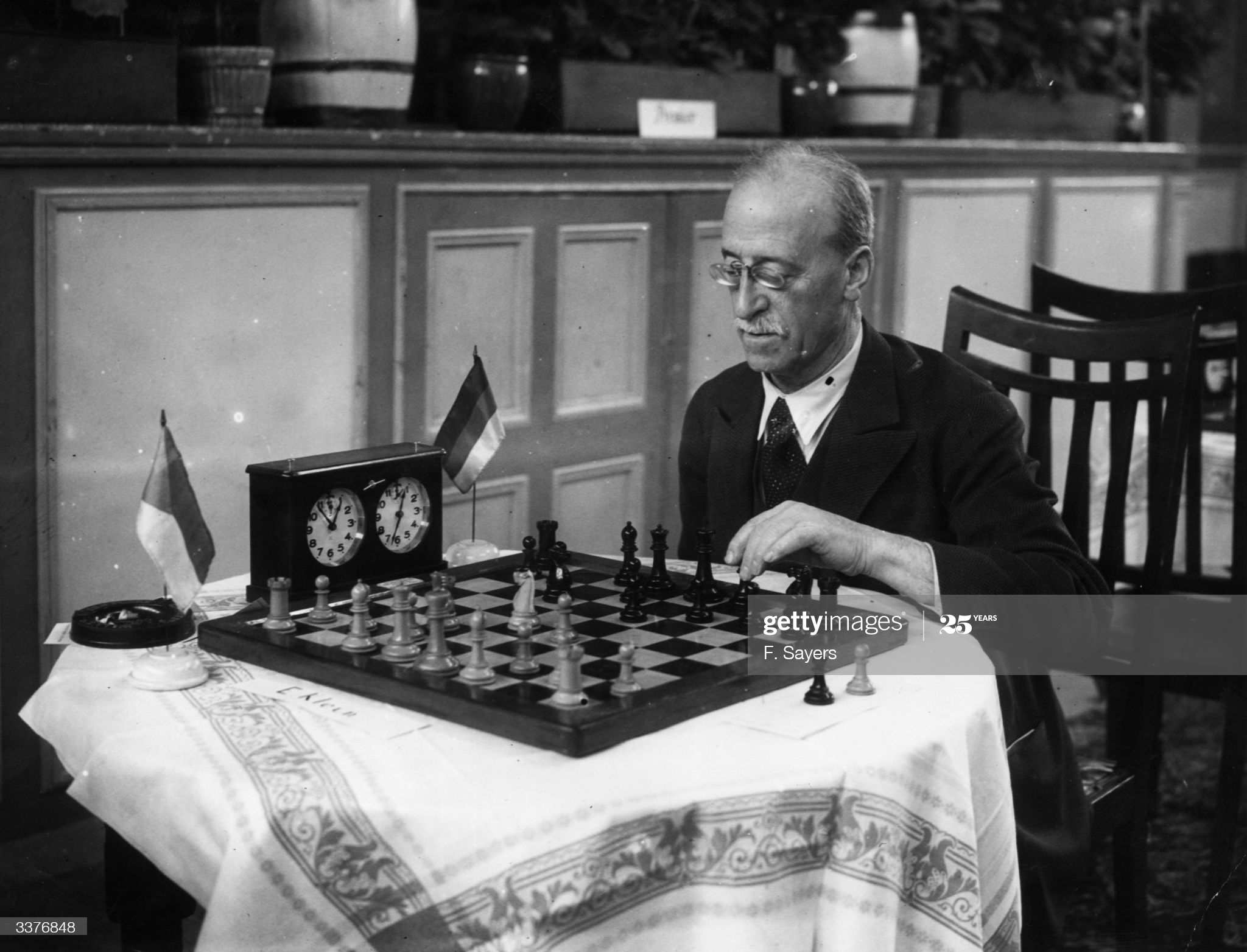
By then along with Alexander and Golombek, he had become recognized as one of the three strongest young players in the country. Whilst not as successful as they were in tournaments as the British championship in which stamina was essential, he was a most formidable club and team match player, as he had already shown in 1933 when he won the championship of the City of London Club ahead of R. P. Mitchell and Sir George Thomas.
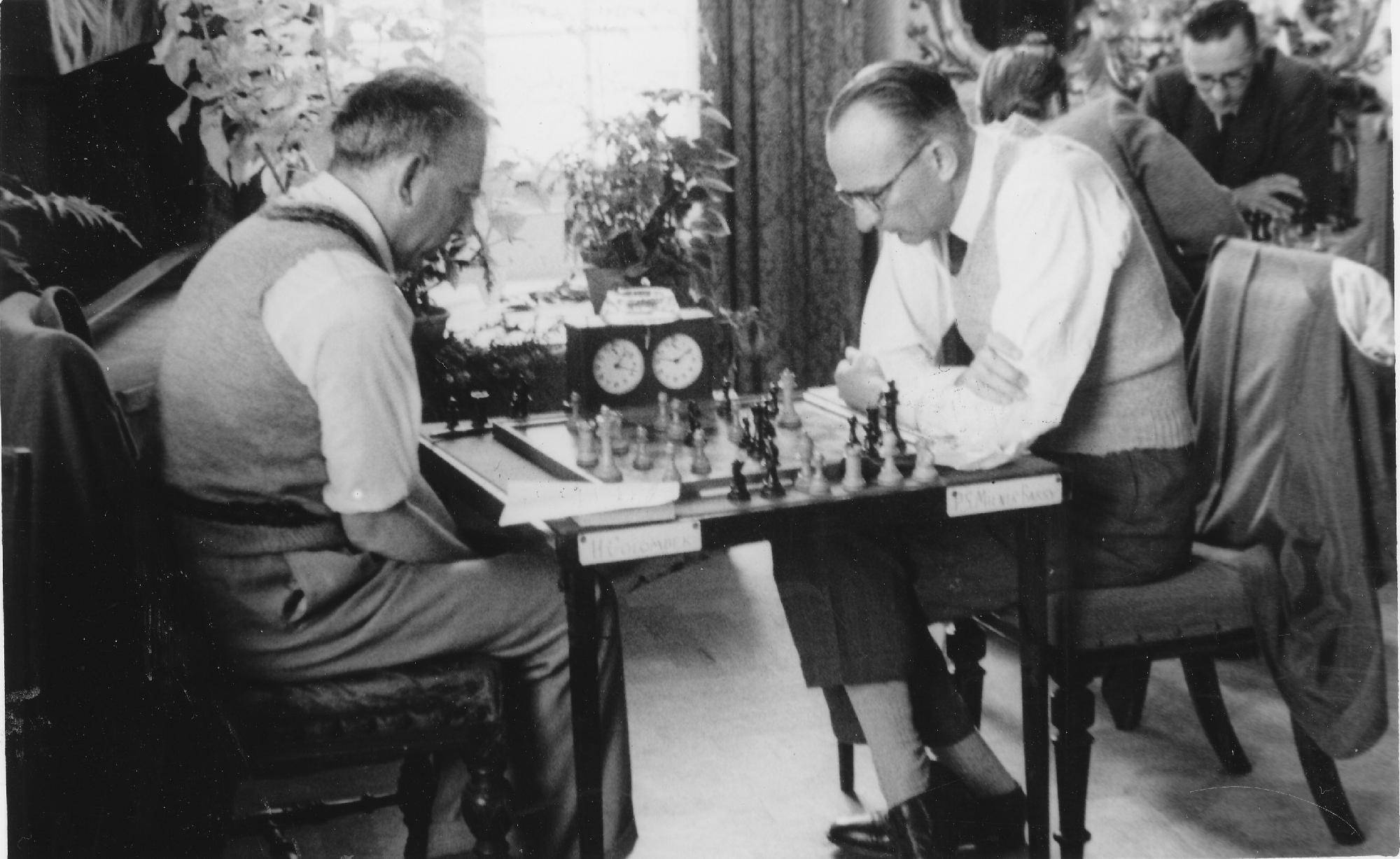
He played in his first International Team tournament at Stockholm 1937 and was to play in three more such events : in 1939 at Buenos Aires where, on third board, he made the fine score of 4/5 ; in Helsinki 1952; and in Moscow 1956 where, again on third board, he was largely responsible for the team’s fine showing.

In 1940 he shared first prize with Dr. List in the strong tournament of semi-international character in London and then, like Alexander and (later) Golombek, helped in the Foreign Office code-breaking activities at Bletchley Park for the duration of the Second World War. Staying in the Civil Service afterwards, he rose to the rank of Under-Secretary in the Treasury and was knighted for his services in 1975.

Below is footage (start at 1′ 55″) of Sir Stuart discussing the talent of Malik Mir Sultan Khan:
After the war, too, he had some fine results in the British championship, his best being second place at Hastings in 1953.
Hartston on Milner-Barry
The following article is sourced from November 1995 edition* of Dragon, the Cambridge University Chess Club magazine:
(*Edited by Jonathan Parker)
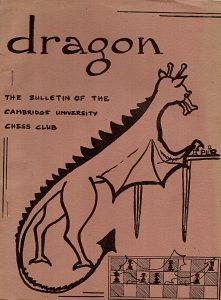
“I first met Sir Stuart Milner-Barry when I was fifteen years old (1962) playing in a tournament in Bognor Regis who played some rustic king’s pawn opening against me, sacrificing a pawn for nothing in particular and then astonished by writing “castles” in full on his scoresheet. I think he used “kt” for a knight too. I thought I had discovered a true relic from a bygone age and the more I got to know him I realised the more correct that judgement was.
Milner-Barry was the last of the true gentlemen amateurs and was one of the few people I have ever met who played chess for the sheer love of the game.
A few typical incidents may give a flavour of his unique personality. First and most typical was the way he would resign: with a firm handshake, a smile and a booming whisper of ‘You are far too good for me I’m afraid!’ When I first heard those words I was totally taken aback : What was this, a chessplayer acknowledging that his opponent was better than him? Impossible!
Once, at close of play in a county match against Milner-Barry I had the extra pawn in a difficult queen and pawn ending. We analysed a little with most variations suggesting I was winning. It was the kind of position you would send for adjudication even if you are convinced it is lost. It avoids having to resign anyway and the adjudicator may always discount the pawns. But, Sir Stuart never thought like that. After ten minutes analysing he extended his hand and congratulated me.

Finally there was the splendid incident in Moscow during the (Ed. 6th) European Team Championships in the late 1970s (Ed. 1977) Stuart was then the President of the BCF and took up an invitation of his old friend the British Ambassador to the USSR (Ed. Sir Howard Smith) to visit the event. Since he was staying at the Embassy he had a KGB tail assigned to him to follow him everywhere. On one of his morning walks Sir Stuart got lost and was not certain which bridge he should be on to get back to the Embassy. So, he turned around and walked back to the not very secret policeman, followed him and asked for directions! For the rest of his stay they walked practically hand-in-hand.
Whilst most of us knew Stuart as an amiable old gent who played for Kent and in the Lloyds Bank Masters who could still play brilliant attacking games in his eighties most knew little of his distinguished career in real life.

We suspected with some justification that in his civil service career he was responsible for doling out all those OBEs to chess players in the 70s and 80s when he was in charge of the honours list.
It was the wartime work at Bletchley Park that was Milner-Barry’s greatest achievement. As everybody knows the allies won the Second World War mainly because of the brilliant code-breaking work of the Cambridge quartet of Alan Turing, Gordon Welchman, Hugh Alexander and Stuart Milner-Barry. Turing and Welchman were mathematical geniuses, Milner-Barry was the supreme administrator and Alexander straddled the gap with great talents in both areas. The group of four were known as “The Wicked Uncles”
The astonishing achievement at Bletchley was not so much in breaking enemy codes as maintaining complete secrecy of the entire operation for the duration of the war. Only with such people as Milner-Barry and Alexander in charge could such a large operation be run so successfully without anybody knowing about it.
Milner-Barry’s importance in the running at Bletchley may be judged from the fact that he personally delivered the note to Winston Churchill stressing overriding importance of their work asking for more funds.
Compared with that the invention of the Milner-Barry Gambit and the Milner-Barry variation of the Nimzo-Indian are minor achievements.
Sir Stuart was proof that nice guys can be chess players although one cannot help suspecting he would achieved even better results if he had even a slight streak of nastiness about him. He would surely have not let Capablanca off the hook in Margate in 1938 when the attacking player secured a winning position against the ex-champions dragon variation and he would have surely also not let the British Championship slip from his grasp in 1953 when he finished as runner-up after losing his last two games.
He always performed well when playing in Olympiads (or Team Tournaments as they were known then) for England during the 1930s and 50s. He was, after all, one of the most naturally gifted players this county has produced. What other Englishman has two opening (or even just one) named after him?
While at Cambridge while he won the University Championship in 1928, losing to Alexander in the following year, Milner-Barry composed some fine problems, a frivolity he never returned to later in his life.
An excellent though infrequent writer on the game, he wrote a fine memoir of C.H.O’D. Alexander in Golombek’s and Hartston’s The Best Games of C.H.O’D. Alexander, Oxford, 1976.”

An Obituary from Bernard Cafferty
From British Chess Magazine, Volume CXV (115, 1995), Number 5 (May), pp. 258-59 we have this obituary by Bernard Cafferty:
“Sir Philip Stuart Milner-Barry KCVO CB OBE (20 ix 1906 – 25 iii 1995) was the oldest of the British chess masters who came to prominence in the 1930s, He was always thought of in conjunction with his great friends Hugh Alexander and Harry Golombek who both predeceased him. The length of Stuart’s career is amazing – he was inaugural British Boy Champion in 1923 and was still playing for Kent first team in the Counties Championship of recent years, thus spanning a period of seven decades! Botvinnik spoke of him to me on my 1994 visit to Moscow.
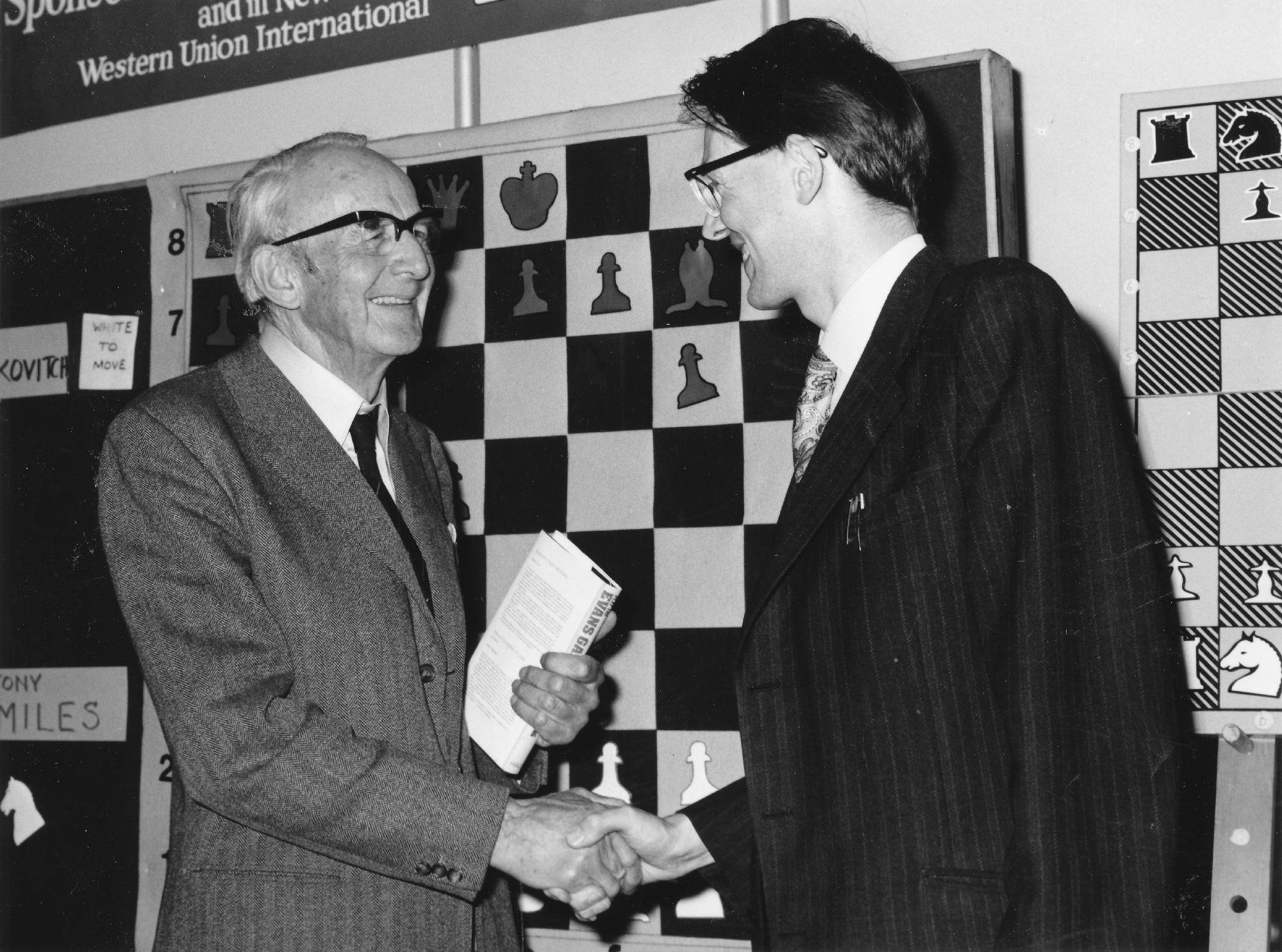
Yet Stuart, who never gained the IM title, was always the true amateur and genuine English gentleman, whose sense of duty and tradition was very great. It speaks volumes of him that he agonised over whether he should attend the Times Kasparov-Short match of 1993, in a private capacity. He would have liked to watch the play, but as a former British Chess Federation President, 1970-73, he felt it was his duty not to lend any extra recognition to the contest other than that assigned it by the BCF.
Before the war, after graduating from Cambridge in Classics, he took some fine scalps including those of Tartakower and Mieses and should have beaten Capablanca at Margate 1939.
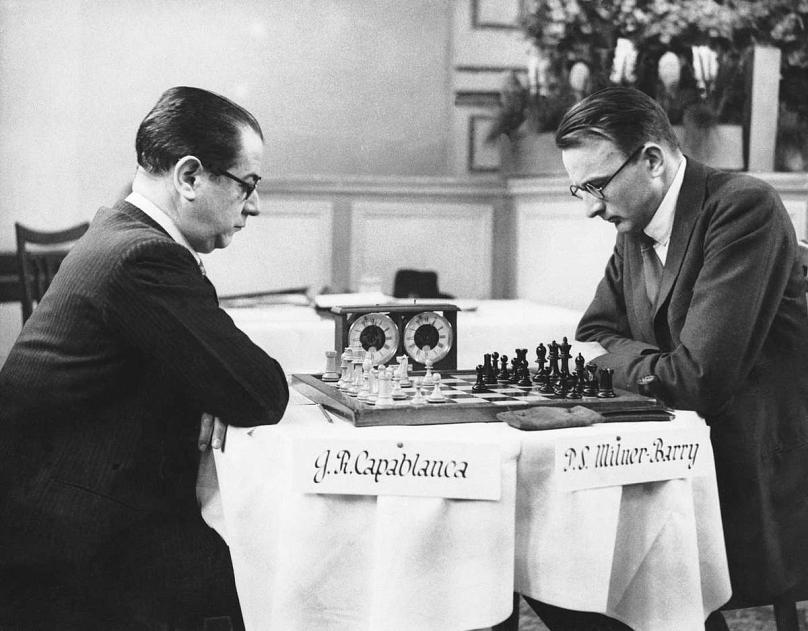
He worked, rather unhappily, in a stockbroking firm up to 1938 and it is in that capacity that his name appears on the official document that set-up the British Chess Magazine as a limited company in 1937.
During the war he played his part in the Bletchley Park code-breaking undertaking along with Alexander and Golombek, and after the war went into the Civil Service where he had a distinguished career at the Treasury. Then his career was extended as he spent his final working years in the patronage department that sifted recommendations for the honours list.
I recall asking him in 1981 if there was any chance that Brian Reilly could qualify for an award. Stuart’s diplomatic answer was to the effect that he was now retired but would drop a word in the right quarter.
Stuart represented England at the Olympiads or 1936, 1939, 1952 and 1956. At the last of these he played particularly well on fourth board. He was conscious that his old friend Hugh Alexander could not take part in Moscow because of the sensitive nature of his work in the Intelligence Service.
In playing style Milner-Barry, a tall gaunt figure, delighted in an open tactical fight.
He was The Times correspondent 1938-45, resigning the post to let Harry Golombek take over. His best result after the war, apart from the 1956 Moscow Olympiad, was probably his second place in the British Championships of 1953 at Hastings. The abiding impression of his opponents over the years must have been that here was a player who greatly enjoyed the game, win, lose or draw.
Certainly, that was my idea of him in the tussles we had from the British Championship of 1957 up to county matches in the 1980s.
We shall not see his like again. The England that formed his character is no longer with us.”
Kenworthy on Milner-Barry
Sir Stuart as a student was taught by his lecturer friend Gordon Welchman, later 1940 his Head of Hut. They were firm friends, a band of brothers, as per the rest of the chess players and mathematicians from the Interwar years at Cambridge University.
His studies were obviously well aligned to be a stockbroker in the City, plus the tedious details of Blotters and Order Management registration.
Obvious exceptions to this University circle was Dr Jacob Bronowski who was given the suspected 5th columnist treatment by authorities in Hull. Obviously, he would have been excellent.
Exception also according to John Hevriel was if you were also from Sidney Sussex, like Staff Sgt. then an RSM Asa Briggs, who was more Contract Bridge with this all friends crossword addicts team. Asa Briggs felt that Sir Stuart was initially badly rewarded leaving Hut 6 in 1945 for HM Treasury.
Sir Stuart was a noted top cribster, his crosswords, German and thinking from how the Nazi operator would think from his side of the board, obviously helped with Bombe cribs. He always played down his role and abilities in a diplomatic way. He was the facilitator and mentor to many, especially back to Gordon Welchman in his troubled times from 1974 onwards. Sir Stuart was not happy about the proposed book of the Hut 6 Story.
He was the bureaucrat who cared for the welfare of his staff, especially on tedious protract tasks which was the norm. He was into ethics, Quadrivium, logic and rhetoric, philosophy and his knowledge of German poets and Great German thinkers would have been invaluable in solving the Enigma puzzle and how might his opposite number blunder and be sloppy in procedures.
Milner-Barry Variations
Though never at home in close(d) positions, he was an outstanding strategist in the open game and it is significant that his most important contribution to opening theory was the Milner-Barry variation of the Nimzo-Indian Defence which is essentially as attempt to convert a close position into an open one (1.P-Q4, N-KB3; 2.P-QB4, P-K3; 3. N-QB3, B-N5; 4.Q-B2, N-B3).
Hooper & Whyld (1996) note:
“Sometimes called the Zurich or Swiss variation, this is a line in the Nimzo-Indian Defence introduced by Milner-Barry in the Premier Reserves tournament, Hastings 1928-9. This line became more widely known when it was played at Zurich 1934.”
Two famous opening lines are named after him – 4…Nc6 in the Nimzo-Indian (as above), and the gambit in the French Defence: 1.e4 e6;2.d4 d5;3.e5 c5;4.c3 Nc6;5.Nf3 Qb6;6.Bd3 cxd4;7.cxd4 Bd7;8.0-0 Nxd4;
Stuart played this line both in correspondence and over-the-board play. If Black takes the pawn with 10…Qxe5, White gets a fierce attack by 11,Re1 Qd6 (else 12.Nxd5) 12.Nb5.
There is also a sub-variation of the Caro-Kann which is named after Sir Stuart viz:
which is a Blackmar-Diemer style pawn sacrifice.
There is also a Milner-Barry variation in the Falkbeer Counter Gambit to the King’s Gambit thus:
which is an ancient line that he revived at Margate 1937.
and finally, there is a Milner-Barry Variation in the Petroff Defence:
giving a total of five named variations. How many English players have that many?
Problems and Compositions
Stuart developed an interest in problem composition in the 1920s
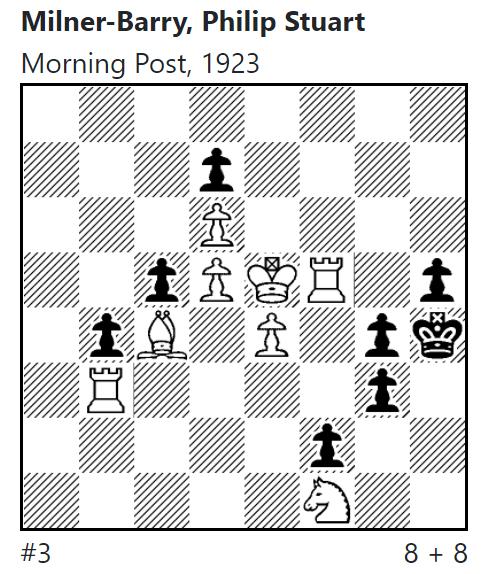
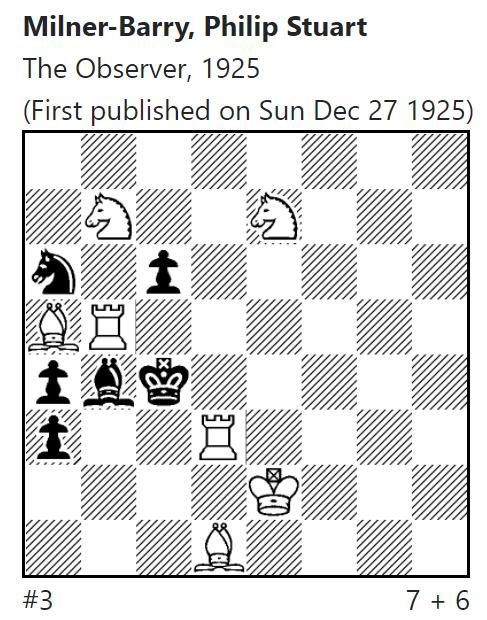
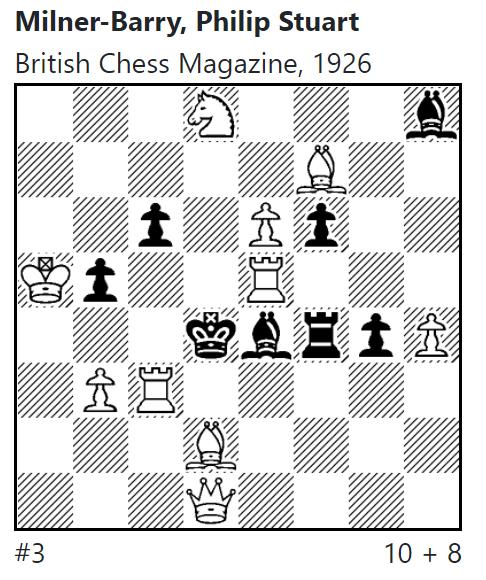
Further examples may be found on the excellent Meson Database maintained by Brian Stephenson
Milner-Barry on The English Chess Explosion
Stuart was a great supporter of the development of British chess. Nothing would have given him more pleasure than to witness the meteoric advances of English players in the 1970s. Indeed, he wrote the foreword to the English Chess Explosion (Batsford, 1980) by Murray Chandler and Ray Keene:
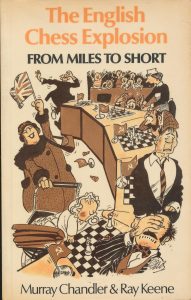
“It gives me great pleasure to have been asked to write a foreword for this book. Nothing has given me more satisfaction than the flowering of British chess talent that has taken place in the past few years.
Between the wars, though we had some splendid players like H. E. Atkins, Sir George Thomas and F. D. Yates, we were a second rate power at chess: in the great Nottingham tournament of 1936, for example, our quartet brought up the rear, and that was where, with occasional shining exceptions, our representatives in international tournaments tended to find themselves. Similarly, after the war in the 1950’s and 1960’s, in spite of Alexander and Penrose, we seldom achieved a really creditable place in the Olympiads.
Alexander who retired early from the arena because of the exacting demands of his profession, must have had rather a depressing time as non-playing captain.

I myself date the renaissance from the Spring of 1974 when we won a closely contested match against West Germany at Elvetham Hall.
Thereafter we went from strength to strength, with the appearance year by year of highly talented, original and adventurous young men from the Universities – Keene and Hartston, closely followed by Miles, Stean, Nunn, Mestel, Speelman, and a still younger generation of schoolboy prodigies like Nigel Short.
The peak of our performance so far has been the third place (after the USSR and Hungary) last winter in the finals of the European Team Tournament at Skara (compared with our eighth and last place at Moscow in 1977).
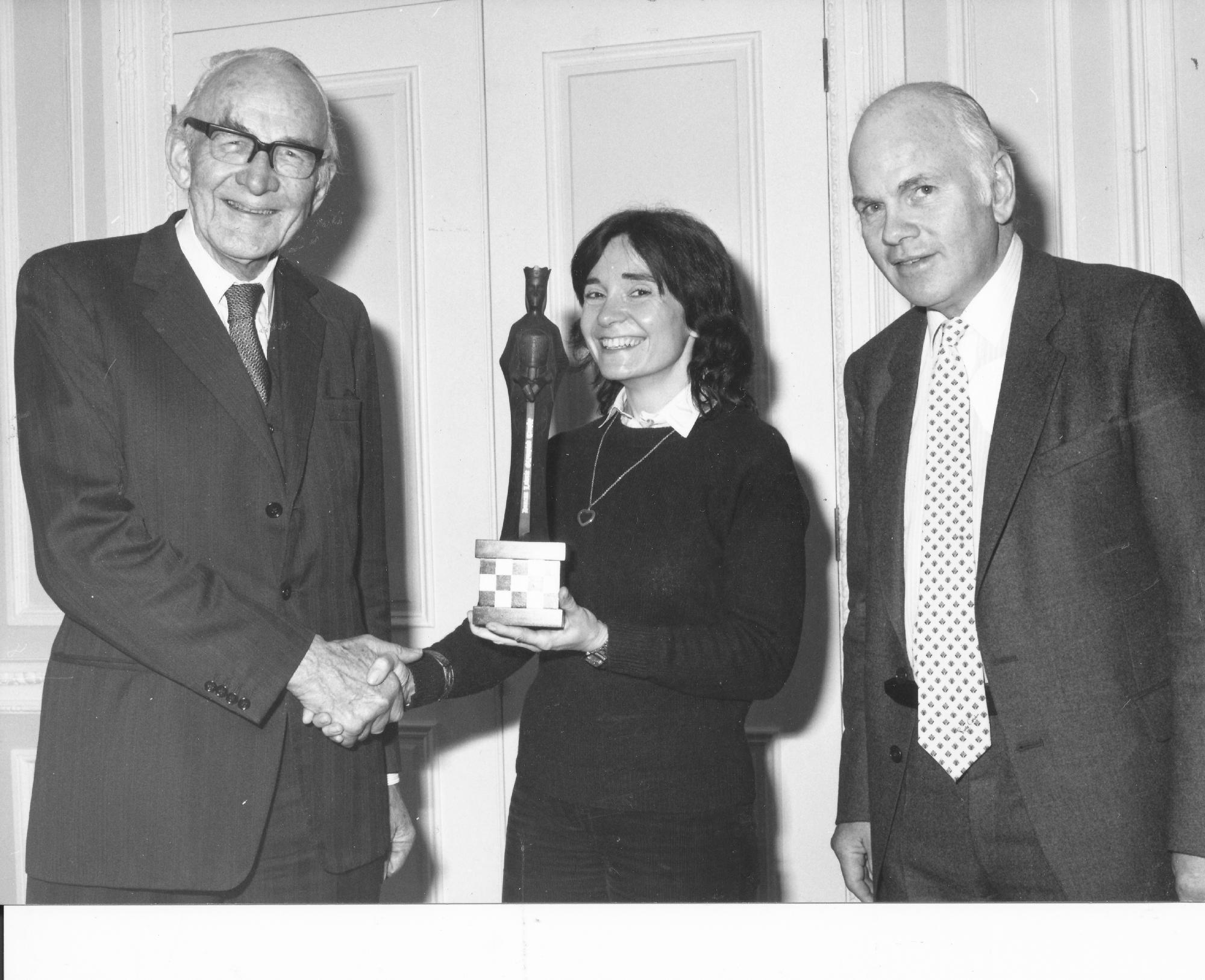
How did all this come about in the short space of six years? The Spassky-Fischer match of 1972 was a watershed. Since then, and the first time, it has been possible for able young men from universities to consider chess seriously as a full-time profession, or at least as a career to which they devote the major part of their time and interest, Secondly, the fruits were being reaped of the unobtrusive but devoted spadework in junior training pioneered by Barden, Wade and many others. Lastly, no doubt, sheer good fortune smiled upon us in the simultaneous emergence of a group of brilliant enthusiastic and likeable young men, five of them already grandmasters and others likely to become so before long.
It is sad that Alexander, who did so much to uphold the prestige of British chess in the doldrums, did not survive to witness the transformation. I would like to wish the BCF President, David Anderton, and Alexander’s successor as captain, all possible success for the future.”

In the March issue of CHESS for 1963, (Volume 28, Number 427, pp.147-155) William Winter wrote this:
P. S. Milner-Barry is a close friend of Alexander’s and plays like him, though not quite so well. So far the Championship has always eluded him, though he seemed to have it within his grasp at Buxton where he played superb chess for nine rounds and cracked in the last two. I fancy that the physical strain of these long Swiss tournaments
is rather too much for him. Like Alexander he has a most attractive style and one or two of his combinative games will certainly live after him.
More from Bletchley Park
(The original may be found here)
A brief biography, formerly displayed in the ‘Hall of Fame’ in Bletchley Park mansion. Stuart Milner-Barry had achieved fame as a champion chess player when he came to Bletchley Park early in 1940. He led the ‘cribsters’ team in Hut 6 from its opening in January 1940, becoming head of the Hut in March 1944. The work of Milner-Barry and his team lay at the heart of the triumph over the German Luftwaffe & Army Enigma codes. After the war he had an outstanding career in the civil service. Philip Stuart Milner-Barry was born on 20 September 1906 in London; He went to Cheltenham College and on to Trinity College, Cambridge, where he achieved a first in both the classical and moral sciences triposes. He became a not-notably enthusiastic stock broker, though it was chess that filled his life. He had been boy chess champion of England in 1923, playing for England before and after the war. He was chess
correspondent of the Times from 1938 and throughout the war. It was Gordon Welchman, a friend from their days at Trinity together, who persuading Milner-Barry to join Bletchley Park.
He arrived in January 1940 joining the newly created Hut 6, and was encouraged by Welchman to study the decrypts that were beginning to emerge from the Zygalski sheets being operated by John Jeffreys. Welchman wanted Milner-Barry to develop an intimate knowledge of the German cipher clerks and radio operators. When the Germans dropped the use of the repeated indicator, as they did on 1 May 1940, Hut 6 would have to rely on its knowledge of the traffic to find suitable cribs to enable the Bombes to operate, and in the meanwhile to make use of the careless procedural habits of some of the German operators.
Milner-Barry had noted that the cipher clerks tended to use addresses and signatures that were both long and stereotyped, providing a fruitful source for cribs. A crib had to be a phrase of about 13 characters long that was very likely to be found in certain easily identified messages, but also had to have linguistic features that provided good ‘closed loops’ for the bombe menus. The use of ‘kisses’, cribs derived from suitable decrypted messages from other keys, often provided the first break into a new key. Milner-Barry organised a team of wizards, as Welchman called his cribsters, who eventually were able to provide good keys for Hut 6 to be able to break into most of the Luftwaffe keys and then some of the Army keys. Milner-Barry became recognised as Gordon Welchman’s deputy, and when Welchman left in March 1943, to become responsible for mechanisation projects, it was Milner-Barry who became Head of Hut 6. Milner-Barry signed the Turing letter in October 1941 and it was he who took the letter directly to Downing Street. It drew Churchill’s attention the extreme shortage of support personnel in the Enigma huts. His powers of smooth administration now became clear as Hut 6 grew, reaching over 550 in total, one of the largest teams in Bletchley Park.
Milner-Barry was a quiet, undemonstrative, highly effective leader who believed in delegation and was always to be seen sporting a very large pipe. His reports show that he was totally unflappable, in the midst of the problems for Hut 6 created by the tightening of German cipher security in 1944, which they largely overcame. Stuart Milner-Barry was recruited to Whitehall in June 1945. He rose rapidly, becoming the ceremonial officer in the Civil Service Department. He received an OBE in 1946, a CB in 1962, and a knighthood in 1975. He married Thelma Wells in 1947 and they had three children. He died in Lewisham on 25 March 1995. He had repeated his visit to Downing Street in October 1991, with a letter signed by 10,000, asking for Bletchley Park to be preserved as a monument to the great war-time work.
Further Material
An obituary from The Independent by Bill Hartston
An article from Spartacus Educational
Here are his games from chess.com
More on his time at Bletchley Park
The papers of Sir Stuart Milner-Barry
Here is his Wikipedia entry
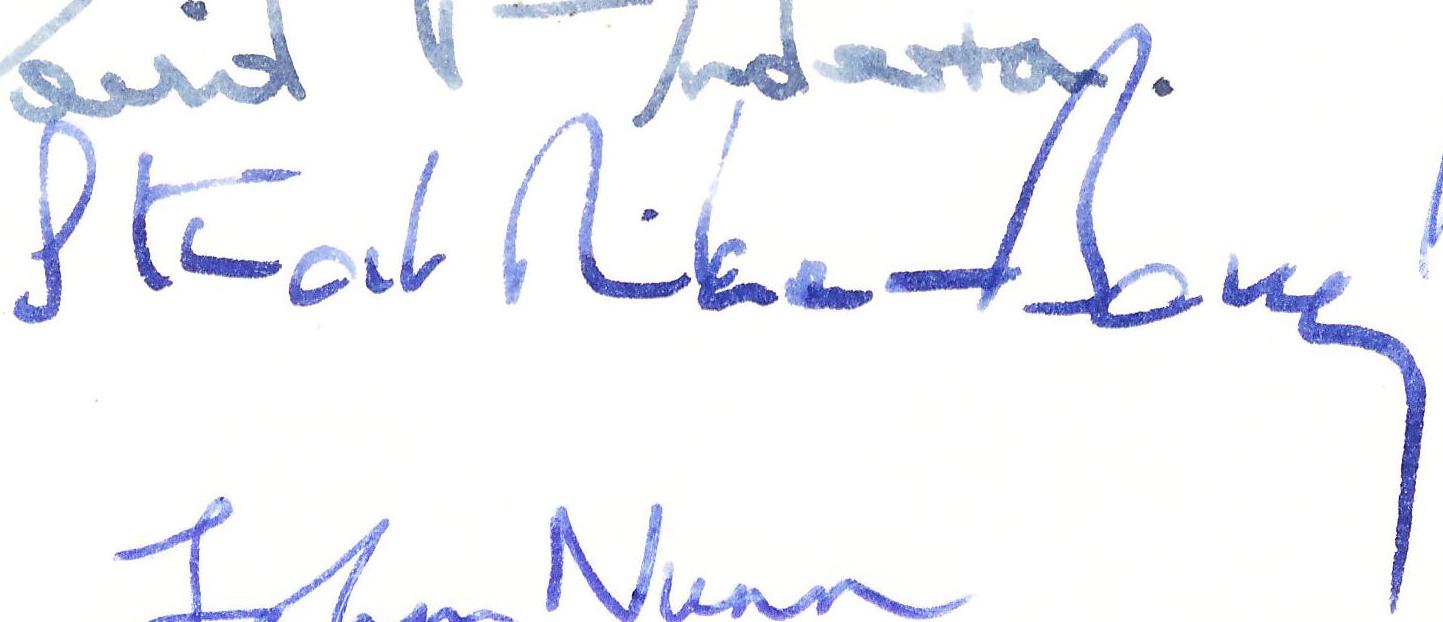
According to Edward Winter in Chess Notes PSMB lived at these addresses :
- 11 Park Terrace, Cambridge, England (Ranneforths Schachkalender, 1938, page 78).
- 43 Blackheath Park, Blackheath, London SE3 9RW, England (letter reproduced in C.N. 3809).
Happy Birthday John Saunders (22-ii-1953)
Remembering John Keeble (27-viii-1855 19-ii-1939)
We remember John Frederick Keeble who passed away on February 19th 1939
From The Oxford Companion to Chess by Hooper & Whyld :
Problemist and chronicler who lived in Norwich all his life. He edited the chess column of the Norwich Mercury from 1902 lo 1912, contributed many significant articles elsewhere, investigated a number of chess questions, and established the burial place of several great players and arranged the tending of their graves. He lived at only two addresses for 73 years, worked for the railway company for 53 years, and was a member of the Norfolk and Norwich chess dub for 61 consecutive years. Winner of the club championship in 1884, he did not compete again until 1933 and then won it three years in succession.

Here is his (italian) Wikipedia entry
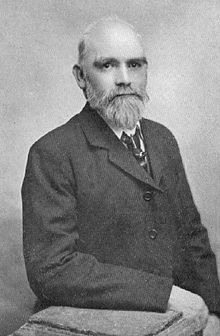
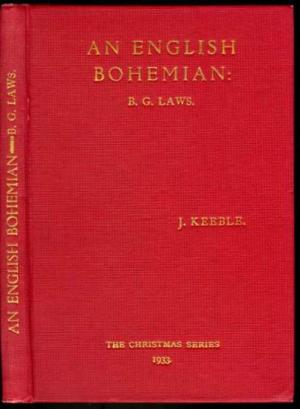
Remembering IM Hugh Alexander CMG CBE (19-iv-1909 15-ii-1974)
We remember Hugh Alexander who passed away on Friday, 15-ii-1974. The death was registered in the Borough of Cheltenham. Currently his burial / cremation site is unknown.
The Alexander Family
Conel Hugh O’Donel Alexander was born on Monday, April 19th, 1909 in Cork, Munster, Republic of Ireland.

Hugh’s parents were Conel William Long Alexander (1879-1920) and Hilda Barbara Alexander (née Bennett) (1881-1964) who married in Hook Church, Hampshire. His father was a Professor of Civil Engineering from County Donegal and his mother was the daughter of a timber merchant and was from Birmingham.
Hugh’s father moved to Hook in Hampshire. At some point they returned to Cork and then relocated to Birmingham.
In the 1911 Irish census aged two Hugh was recorded as being a Presbyterian. The household consisted of his father, mother and two servants Maud McAuliffe (19) from County Cork and Johanna Hanlon (20) from Cork City all living at 20, Connaught Avenue, Cork.
At the time of the census all members of the household were capable of reading and writing apart from Hugh who was recorded as “cannot read”.
and Hugh’s father signed the Return as follows :

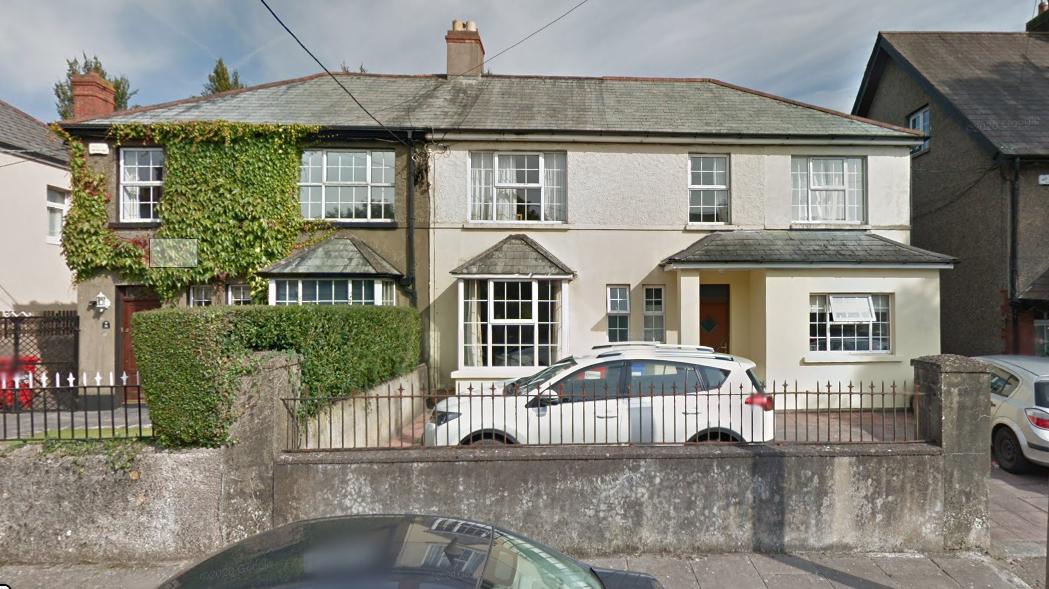
Hugh attended Londonderry College and then went to King Edward’s School, Birmingham.
Hugh married Enid Constance Rose Crichton Neate (1900-1982) in October 1934 and the marriage was registered in the district of Westminster, Middlesex.
According to Rodric Braithwaite :
“Enid, was an equally striking personality. She was descended from one of the defenders of the Eureka Stockade, the “birthplace of Australian democracy”. She was educated at the Sorbonne, a formidable dialectician, art historian and collector. In her later years she returned to Australia, where she was endlessly hospitable to passing Russian chessplayers, and to itinerant musicians, including my own father.”
Hugh and Enid had a son Michael (19 June 1936 – 1 June 2002) who became the foreign policy secretary to Margaret Thatcher and the UK ambassador to NATO. Here is Michael’s obituary.
Michael married Traute Krohn. Michael and Traute gave Hugh a grandson, Conel Alexander who is a Cosmochemist at the Earth and Planets Laboratory, Carnegie Institution for Science, Washington.

Staff Scientist
We contacted Conel and he replied more or less instantly as follows:
I don’t have that many anecdotes or photos of my grandfather. My great aunt, his sister, was the family archivist. She had a lot of photos of when they were young in Cork and Birmingham. She did send me some photos before she died, but not the sort that would interest your readers. She lived in Fort Erie, Canada and my grand father used to visit when in North America on ‘business’. I don’t know how much she knew about what he did but she must have had some inkling. Unfortunately, since she died I have lost touch with her family. Amongst the photos she sent me were some of my great grandfather and his Irish relatives. An archivist at Cork University contacted me a few years ago. According to him, my great grandfather has a rugby player and organizer of Irish rugby (as well as an engineering professor), but also opposed to Irish independence which might well have caused trouble for him and his family had he not died when he did.
I was 13 when my grandfather died and wasn’t told how ill he was until almost the end. I would have liked to have know him better, but I assume he was always on the go and my father was a diplomat and we had been living abroad until I was 8 (US, Moscow and Singapore). Even after moving back to London, we would only see him a few times a year as far as I remember. I think he probably realized that he had missed out on some things as he was planning to retire (early I believe) and come to live with us in London, only to learn that he had terminal cancer.
It just so happened that next door to where I work is a rather upscale retirement home. A man called Authur Levinson had retired there with his wife. He was sent to Bletchley when the USA joined the war and had worked with my grandfather. Arthur’s wife had somehow followed him to the UK as a driver. Both had gotten to know my grandfather during the war and then afterwards when Arthur joined the NSA. Somehow Arthur found out I was working next door, and my family used to visit them occasionally. They had an Enigma machine that they used to show my kids, but they were probably too young to understand the significance. Arthur told me that the NSA had tried to recruit my grandfather when they heard he was retiring from GCHQ, but he was adamant that he wanted to retire to spend more time with family and to write.
I was told that, rather surprisingly, he didn’t think that chess was a suitable pastime for a healthy boy. I don’t know if this was the reason, he believed in trial by fire, or he just could not help himself (he was extremely competitive at everything he did), but when we did play chess a few times he used to give me huge advantages and then thrash me! After a few such humiliations, I gave up. I don’t think I would have been very good anyway and my grandfather probably recognized that, so perhaps it was his way of letting me find out early. My father was an olympic fencer, so naturally I tried that too. For a while I was able to ‘bully’ my way to wins, until I came up against people who really knew what they were doing. I abandoned that too.
One other thing I learned about about my grandfather fairly recently is that he taught Freeman Dyson mathematics and chess at Winchester. Freeman contacted me out of the blue having come across my name somehow. Remembering my chess experience, I ventured that he must have been a rather impatient teacher. Not a bit of it, apparently, but then Dyson must have been the ideal student for him.
Working for John Lewis
Prior to the second world war Alexander was officially employed by John Spedan Lewis in his Department store in Oxford Street. When he returned from Buenos Aires (“good air”) from the 1939 Olympiad he travelled aboard the RMS Alcantara. Here is the entry in the passenger list for September 19th, 1939 :
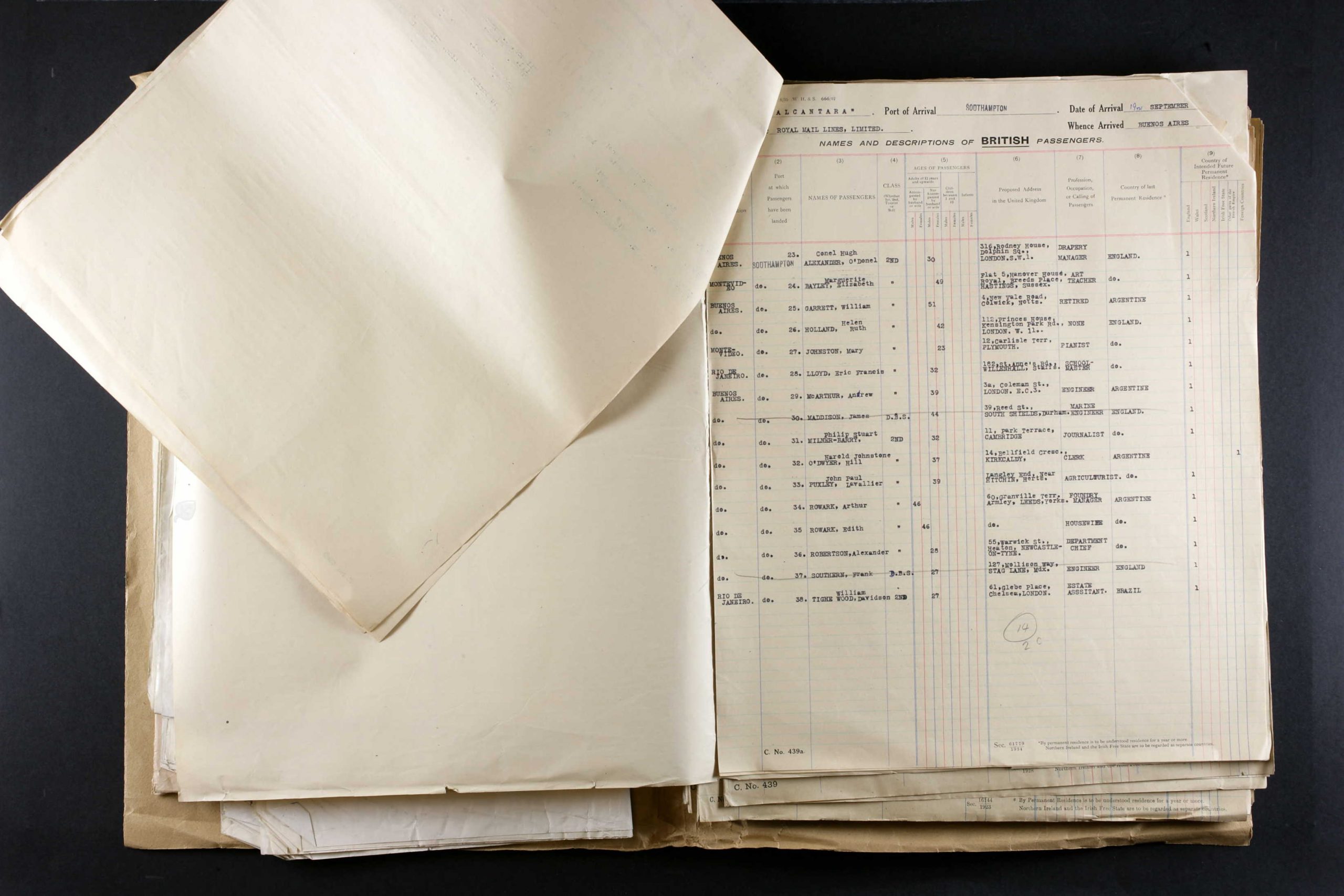
and here is Alexander’s entry in detail. Note that his occupation is described as “Drapery Manager” :

Hugh sailed from Buenos Aires, Argentina in September 1939 to arrive at Southampton September 19th 1939. The ship was the Alcantara operated by Royal Mail Lines Ltd hence the RMS Alcantara.
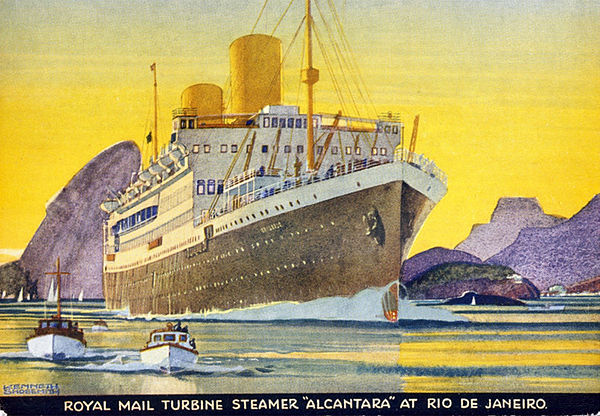
According to Wikipedia : “RMS Alcantara was a Royal Mail Lines ocean liner that was built in Belfast in 1926. She served in the Second World War first as an armed merchant cruiser and then a troop ship, was returned to civilian service in 1948 and scrapped in 1958.
Ports of the voyage were : Buenos Aires; Montevideo; Santos and Rio de Janeiro and Hugh’s official number was 148151 and he travelled 2nd class. His proposed destination residential address was
316, Rodney House, Dolphin Square, London, SW1
According to Wikipedia : “The proximity of Dolphin Square to the Palace of Westminster and the headquarters of the intelligence agencies MI5 (Thames House) and MI6 (Vauxhall Cross) has attracted many politicians, peers, civil servants and intelligence agency personnel as residents.”
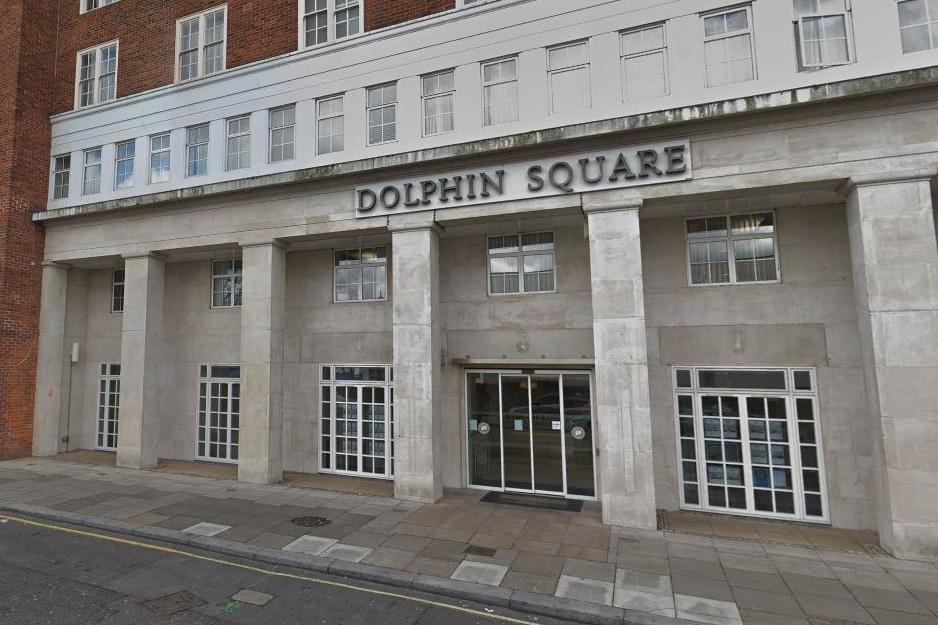
There was some discussion of Drapery Manager in another place.
An Obituary from Stuart Milner-Barry, Part One
From British Chess Magazine, Volume XCIV (94, 1974), Number 4 (April), pp. 117-120 by PS Milner-Barry :
“A proper assessment of Hugh Alexander, who died on February 15th 1974 must await a later issue. But I think he might have been pleased to see our last game published, and I give the score of it below, with notes based on our usual analysis immediately after the game. Over the past 45 years, ever since he went to Cambridge, we played whenever opportunity offered serious games with clocks.
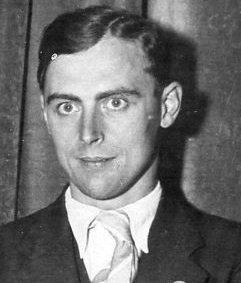
Before the war they were played mostly at my mother’s house in Cambridge, and after the war and my own marriage at our house in Blackheath. When he moved to Cheltenham the opportunities became fewer but no year ever passed without two or three such games, usually at Easter or Christmas.
Alexander always used to say, it was certainly true of me, that this was the kind of chess that he enjoyed most. The games were conducted with the utmost vigour, though not without a good deal of propaganda on both sides. I suppose he won in the proportion of about two to one, but the disparity in strength never became one-sided. Nearly all the games opened 1 P-K4, P-K4; he played the Lopez when I allowed him. (I usually played the Petroff or Philidor), and I played a mixture – in the early days the Vienna and latterly mostly the King’s Gambit. On the whole Black did better than White for both of us.

The only concession we made to advancing years was that latterly we contented ourselves with four hour sessions and 36 moves, instead of 40 in 5 hours. We thought we had done enough for honour by then, and the games were usually finished in the time.
Hugh stayed with us the weekend before Christmas, when this game was played. He looked ill, but he was very cheerful and as good company as ever. He loved a good argument, and as my family so too,- the evening meal was its usual lively affair! I am myself a man of peace, and intellectually lazy; so in deference to my feelings the argument was suspended, before it became too hot. I am afraid they all thought I was a spoil-sport. It was as happy a visit as any of us could remember and it is difficult to accept there will not be another.
As for the game, it was not one of our most exciting encounters. But it is quite an interesting one, and shows Hugh playing as
well as ever – certainly much too well for me. But then he usually did.”
Following PSMBs contribution, in the same obituary there was this from Harry Golombek :
C.H.O’D. Alexander and the ‘B.C.M.’ by Harry Golombek
I have written elsewhere about Hugh Alexander both as a person and as a chess-player and I also intend to devote a forthcoming article in ‘The Times‘ on Saturday to an appraisal of his place in British Chess. Here, however, I would like to describe briefly his connection with this magazine over the years and to show how
important his help was to the progress of the ‘BCM‘.
In the years immediately preceding the Second World War, Ash Wheatcroft and I had made a determined effort to maintain and increase the role of the ‘BCM‘, he in a managerial capacity and I as its editor. With the coming of war and the departure of both of us into the army a sort of caretaker regime had to be provided. It worked as well as could have been expected but inevitably there had been a decline both in quality and financially. When peace came, the quality improved since it was possible to get more and better contributions but the financial aspect became almost alarming.
The question arose – was there a need for the magazine and if so how could that need be fulfilled with the fairly limited resources at hand. Some of us thought there was, but the ways and means were not so clear. Of all those who thought like this Alexander was the most effective in his approach to the problems. I know that from his very youth onwards he had been convinced of the importance of the ‘BCM’ to British chess and, being a practical idealist, when the
crisis came he set about dealing with it in the most expeditious way.
In November 1946 he became a director of the B.C.M. and continued in that position till February 1952, by which time the magazine had been set on a solid basis from
which it was unlikely to be shaken. It was his idea that Brian Reilly be asked to act as editor and almost his first act as director was to write a letter to him inviting him to become so. Then, in January 1947, he himself took over the editorship of the games department, an arduous task which he fulfilled with great competence and the utmost conscientiousness until May 1949 when the heavy work of the Civil Service department of which he was head compelled him to hand over the Games Section to me.
Before, however, that he gave up this post he, again in the most practical way possible, rendered the ‘BCM‘ another service. He wrote a book giving a selection of the games from the last period of Alekhine’s life and generously donated half the royalties to the ‘BCM‘ in order to bolster up its slender finances.

Even after he had to give up official connection with the magazine he retained a strong interest in its welfare. So, even though this recognition is belated and posthumous, I thought it was right to afford readers the possibility of joining with me in thanking High Alexander for all that he did in this respect in especial. At any rate, such matters should be on record for the chess historian.
The Anglo-Soviet Radio Match
From The Anglo-Soviet Radio Chess Match by E.Klein and W.Winter :
“CHO’D Alexander was born in Cork in 1909 and learned chess at the age of ten. He was educated at King Edward School, Birmingham, where he exhibited early prowess by winning the Birmingham Post Cup. In 1927 he won the British Boy’s Championship. During his student days, from 1928 to 1932, he was a convincing champion of Cambridge University. Subsequently he competed in five British Championships, winning the title in 1938. He also played in several international tournaments, his outstanding performance amongst these being Hastings in 1938, where he shared second and third prizes with Keres, following Reshevsky who won the tournament, and ahead of Fine and Flohr. In 1939, in the England-Holland match, he had the satisfaction of defeating the ex-World Champion, Dr. Euwe, in a sensational games, drawing the return game.
A brilliant mathematician, he took a first at Cambridge and chose a scholastic career, joining a well-known public school (Winchester College). From there, via a short spell in a business appointment (John Lewis), he entered the service of the Foreign Office, where, during the war years, his valuable work earned him the OBE.
He plays imaginative and courageous chess and is never afraid of the wildest complications.”

An Obituary from Stuart Milner-Barry, Part 2
From British Chess Magazine, Volume XCIV (94, 1974), Number 6 (June), pp. 202-204 by PS Milner-Barry :
With the death of Hugh Alexander at the age of 64, British chess has lost the outstanding figure of the past forty years. His active playing career over some thirty years included two victories in the British championship and regular appearances in all representative teams from l93l-58, except when the nature of his Civil Service
duties prevented him from travelling behind the Iron Curtain. During the whole of the period after the war he was the regular top board for the England team. In the Hastings international congress he twice won the Premier tournament, on the second occasion tying with Bronstein. His victories in this series included two world champions (Euwe and Botvinnik) and numerous others in the Grandmaster class. He was an outstanding example, like H.E.Atkins and Dr. Milan Vidmar, of the amateur who could combine an exacting professional life of great responsibility and distinction with success in competitive international chess at the highest level and with the increasing professionalism of the game and the demands of knowledge and research that it makes upon the masters, this was much more difficult in Hugh’s time than in an earlier age.
It was indeed in the international field that his fame will principally rest. On the British championship scene, although he always did well before the War, and won convincingly at Brighton in 1938 in a strong field, his record did not match his abilities.

He never established anything like the superiority over his contemporaries that Atkins in a former age and Penrose in a later achieved. He won the championship again, in 1956, but that was a weak year when the Moscow Olympiad took first claim on the leading British players. It was not that he cared less – like all the great players he hated losing, though he was the most magnanimous of opponents – but that he seemed to require the stimulus of the great occasion, and of a world famous name on the other side of the board, to bring out the best in him.
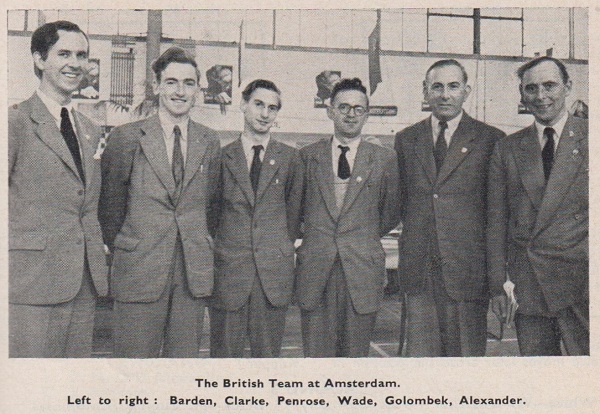
Alexander was perhaps the only English player of his day whom the Grandmasters would have treated as on a level with themselves. On his day he was liable to beat any of them, and they were well aware of it. In his younger days he was very much the gay cavalier, and a brilliant combinative and attacking player with a touch of genius. Latterly he lost some of this elan, and adapted his style to the responsibilities of the B.C.T. top board. His opponents too, with a healthy respect for his powers, were less inclined to give him opportunities. He was as capable of the dead-bat technique as anybody, and to that extent (to my way of thinking anyway) his games became less interesting, with quick draws making a higher contribution to his top-board results than in earlier years. But none the less he was the anchor-man of the British team until his retirement after the 1958 Olympiad.
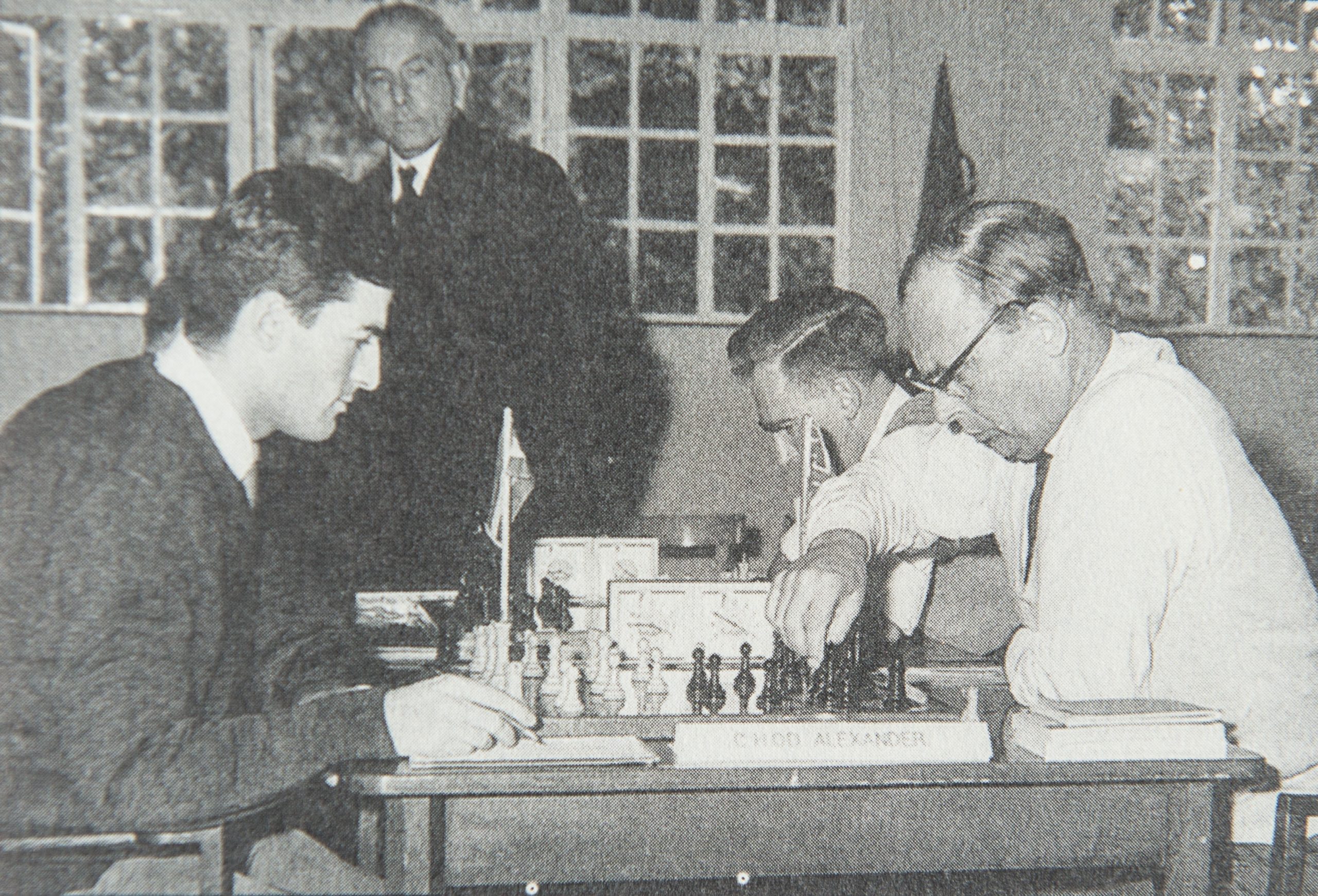
It was a great pity he gave up the game over the board at 50. He had years of good chess in him. But I think he felt he had scaled all the peaks he could scale, and that he was finding top-class competitive chess a burden difficult to reconcile with his Civil Service work and the prospect of a gradual and inevitable decline in his powers did not appeal to him. I made many efforts to tempt him back to the arena, but to no avail. I do not think he ever seriously regretted his decision, and in his last years he immensely enjoyed correspondence chess.
In 1964, Alexander became non-playing captain of the B.C.F. team, and held that role continuously until after the Siegen Olympiad in 1970.
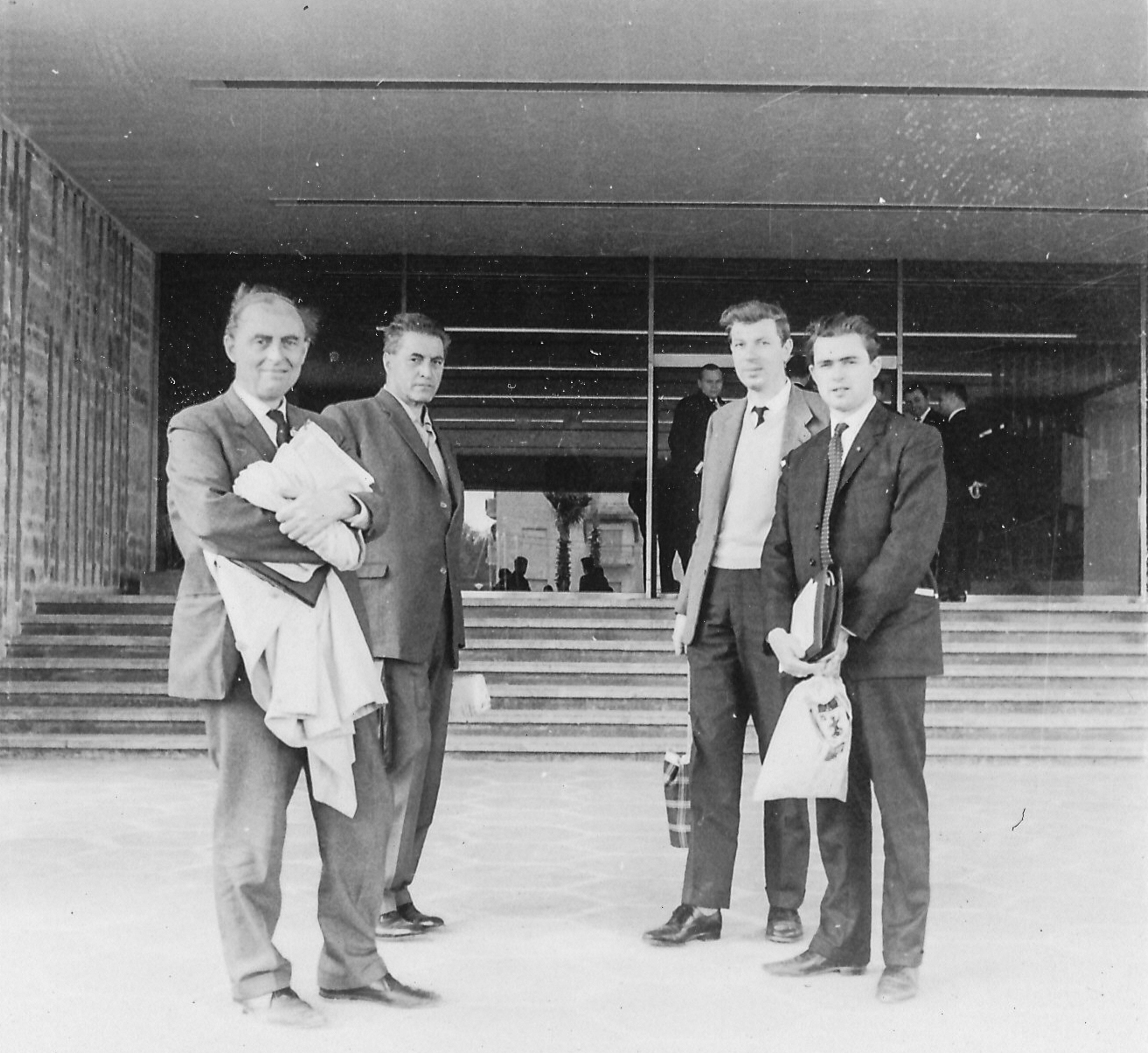
It was rather a disappointing period for British chess, and the results, while we were rebuilding a young team, could not – even with Penrose’s outstanding efforts at top board – have been expected to be favourable. But he threw himself wholeheartedly into all the work sponsored by the B.C.F. and the Friends of Chess to find and develop talent in the younger generation, and before he died the fruits of these labours were beginning to appear. He would have been proud indeed to have witnessed our recent triumph in the Anglo-German match.
As a captain he was, of course, immensely liked and respected by his team. My impression was that he took his responsibilities almost too seriously, and agonised too much over his decisions about whom to play and whom to rest. Nevertheless on balance he thoroughly enjoyed the work, and certainly, in spite of his innate modesty, he
was never one to be disturbed by ill-informed or irresponsible criticism, of which he had his share.
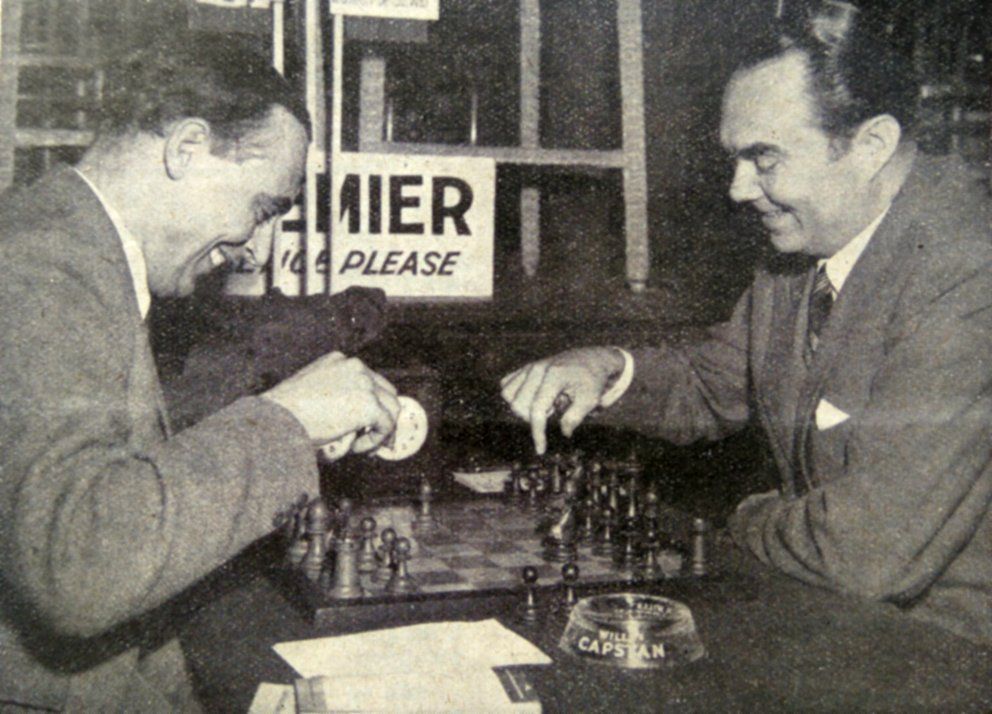
I suppose his most famous tournament result was his equal first with Bronstein at the Hastings Christmas Congress of 1953. Coming at a time when we were gloomily resigned to British players bringing up the rear in international tournaments, this created a great sensation.
The game with Bronstein lasted over 100 moves and Alexander won a most difficult Queen and Pawn ending by impeccable technique.


He went on with the Black pieces to massacre Tolush, the other visiting Russian Grandmaster.
Immense interest was created by this event. The popular press carried diagrams of the successive phases of the Bronstein saga. It was reported on the radio. By comparison with the furore created by the Spassky/Fischer match, it was no doubt small beer, but for those days the publicity was tremendous, and Alexander became the
hero of the hour.
It was entirely characteristic of him that this adulation did not go to his head. He kept everything in proportion, and encouraged everybody else to do the same. He said all the right things about Bronstein, but he did not claim, as one tends to do on these emotional occasions, that international sport was a panacea for friendship between the nations. Altogether it seemed to me an impeccable performance both on and off the board.
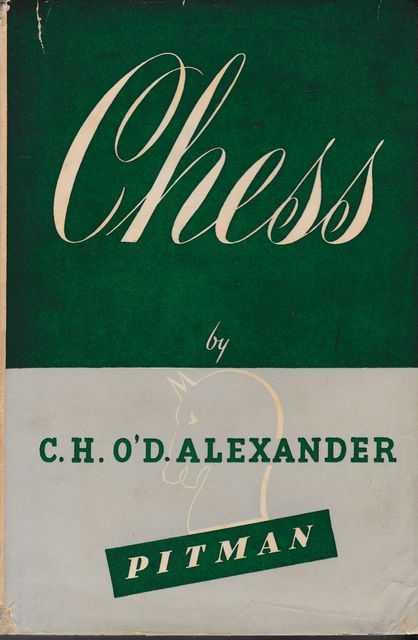
It is as a player that Hugh would, I think, have best wished to be remembered; and I have left myself little room to say anything about him as a journalist and writer. We are blessed, as readers of the B.C.M. will know, with many good and interesting writers on the game. But Hugh had, I believe, exceptional talents as a journalist. In his columns in the ‘Sunday Times‘, and latterly the ‘Financial Times‘, he set a very high standard. He always had something fresh and original to say, especially, I think, to the intelligent amateur rather than the expert; and he said it in a way that was both disarmingly modest and yet lively and entertaining. The warmth of his personality came out clearly both in his writing and in his public speaking – both were entirely natural and wholly without amour-propre.
His articles gave great pleasure to a wide circle, and many who never met him in the flesh must have felt that they had come to know him as a person. Similarly his book on the Spassky-Fischer match
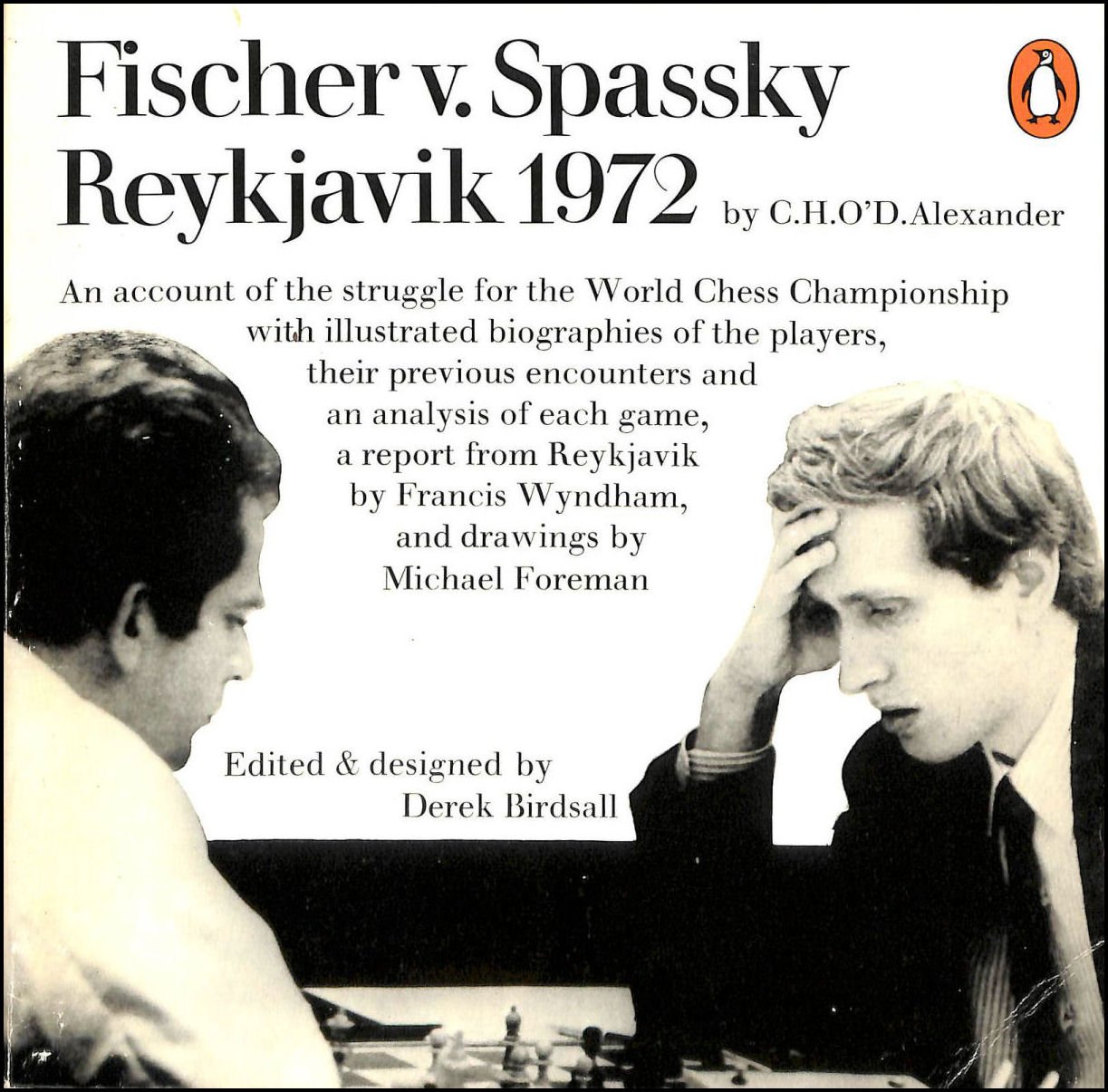
(like the ‘Book of Chess’, which was written in the last year of his life) is an extremely vivid, as well as scholarly, piece of writing. It is almost impossible to believe that it was completed, within days of the conclusion of the match, by a man apparently under sentence of death throughout its progress.

Now that it has come, the loss of Hugh Alexander to British chess and chessplayers, alike as player, writer, administrator and friend, is immeasurable.
An Obituary from BH Wood
From CHESS, Volume 39 (1974), Nos. 693-94, March, p.162 by BH Wood :
The death of Conel Hugh O’Donel Alexander deprived English chess of one of its most vivid characters. Born l9th April 1909, he learnt chess at the age of 8.
From a Londonderry college he went to King Edward’s School, Birmingham, where as a schoolboy he won the Birmingham Post cup, which carries with it the unofficial championship of Staffordshire, Warwickshire and Worcestershire. Going on to Cambridge, he not only won the University championship four years in succession, but picked up first-class honours. He won the British championship in 1938.
In 1939 I found myself on a boat with him bound for the Chess Olympiad in Buenos Aires. He was team captain with Sir George Thomas, P. S. Milner-Barry and H. Golombek : other distinguished members of the team.

War broke out after about six rounds. With typical determination, Alexander jettisoned chess for patriotism, caught a boat home, volunteered for service on disembarking, and within a few weeks had attained the rank of colonel in British Intelligence. He remained attached to Intelligence and the Foreign Office until his retirement a few months ago. As a curious consequence of this commitment, though he settled in to the team captaincy for the British Chess Federation in the biennial chess Olympiads and participated in many chess events abroad, he was never allowed to travel anywhere behind the iron Curtain.
His fame certainly did, however. In the radio match, Britain v USSR in 1946, the most important event in British chess for a decade before and after, he found himself pitted against Mikhail Botvinnik, then at the height of his powers and destined to hold the world championship for 14 years. The first game he lost; the second he won, in superb style. His great adversary was outplayed.
He had some great years at Hastings. A 120 move victory over Bronstein with a queen and pawns endgame stretching over l3 hours through 3 days, earned headlines in the national press unequalled until the Spassky-Fischer furore of 1972, won him first place in 1954 and started him with a chess column in the Sunday Times. He was equal with Bronstein, above O’Kelly, Matanovic, Olafsson, Teschner, Tolush, Tartakover, Wade and Horne.
Hastings illustrated Alexander’s weaknesses as well as his strengths. Twice he won the premier tournament there, only to finish among the tail-enders the year after. Only once more was he to win the British championship; in a rather weak field, entering at the last minute with typical opportunism.
He was a brilliant conversationalist and speaker, a fine bridge player, a master mathematician, an expert on codes, a first-class journalist and writer. Among varied other interests were croquet and philately. He threw himself wholeheartedly into anything he did. His organization, “The Friends of Chess”, provided generous financial support for a wide range of chess events. A few days before his death he was full of plans for the future, including a big History of British Chess. He burnt himself out. The world of chess is a poorer and duller place without him.”
A Tribute from GCHQ
From the GCHQ Official site :
“The great mathematician G. H. Hardy described C. H. O’D. Alexander as the only genuine mathematician he knew who did not become a professional mathematician. Hardy recognised that Alexander’s failure to win a fellowship at the Cambridge Tripos exams was most likely due to his attention being absorbed by chess. Conversely, Alexander’s fellow chess International Master Harry Golombek said of the two-time British Champion “the demands of his profession left him with comparatively little time for [chess] practice and study; otherwise he would certainly have been of true grandmaster class, and possibly even of world stature”. Above both chess and mathematics, Alexander prioritised leading the British Government effort on cryptanalysis.

Alexander was an early recruit to Bletchley Park; he began in Hut 6 working on Army and Luftwaffe Enigma messages before moving in 1941 to Hut 8 to join Alan Turing’s work on the Naval Enigma. Alexander had one of the most agile minds of the new breed of mathematical cryptanalysts; he proved the best at the pen and paper methods of ‘banburismus’ that reduced the computational work of Enigma attacks and his military aptitude test assessed him as suitable for development up to four star general. Although he has not achieved the renown of Good, Turing, Tutte, and Welchman, he was responsible for many breakthroughs. Perhaps the most significant was spearheading the UK-US joint work breaking the Japanese CORAL system used by Naval attaches. More importantly, as a former teacher and head of research at John Lewis, Alexander was much better suited to the organisational and administrative tasks of Hut 8 than the hyper-rational Turing. Alexander gradually assumed more and more of this work. The story goes that one day when Turing arrived late at the Park and the record book asked him to name the head of his section; Turing wrote “Mr Alexander” and with the logic of bureaucracy Alexander was treated as the head of Hut 8 from then onwards. Praise for Alexander’s leadership is a theme common to all those who worked in Hut 8.
After the war, Alexander briefly returned to John Lewis before returning to the new GCHQ and continued to excel as both a cryptanalyst and leader. By 1949 he had been appointed head of the cryptanalysis division. It was a post that he held until his retirement, despite offers of promotion to more senior positions. He used the weight of his position to testify strongly as a character witness on behalf of Alan Turing during Turing’s indecency trial. By 1971, already past the age of retirement by two years, Alexander decided to step down. Both GCHQ and their partners were keen to make continued use of his expertise and offered all manner of consultative work, which he declined. He died in 1974 and although his obituaries rightly spoke in glowing terms of his chess achievements, the impact of his more secret work still cannot be fully revealed.”
Hugh and Correspondence Chess by Tim Harding
“Correspondence chess is only mentioned briefly in the article. CHO’D took up international postal chess in 1963 playing board 3 for the BCCA “Socrates” team in the Eberhardt Wilhelm Cup, a European team event. He annotated his first two games to finish in the November 1964 issue of the BCCA Magazine, Correspondence Chess, one of which is in my history of British CC.
He had in fact taken board 2 for GB against the USA in the 1,000 board match which began in 1935 but was never completed. Alexander’s opponent was Fred Reinfeld (according to Chess Magazine) but I have never seen a result and don’t know if they actually played many moves.
Starting in 1964 Alexander played in a GB-USSR postal match, with a draw and a loss against Yudovich.
In 1965 he started CC Olympiad 6 preliminaries on board 3 in section 1 for GB and scored 3 wins and 5 draws; he was the only player not to lose to M. Ali Farboud of Iran, the country which won the group. (Farboud played on the Iranian team in the 1962 and 1964 FIDE olympiads.) I have only found two of Alexander’s games from this tournament.
Next GB played in the preliminaries (section 3) of the 7th correspondence olympiad (starting 1968) with a much stronger team which won its group. Alexander played board 2 below Adrian Hollis. His score of 6 wins and one draw earned him the ICCF international master title. I have only found three of his games from this event.
In 1972 Alexander started, again on board 2, in the olympiad final but had only completed one or two of his games when he died, and the unfinished games were taken over by Ken Messere who found it hard (since he was given no notes) to work out what Hugh had planned in various complicated middle game positions.
Alexander also played most years for Gloucestershire in the Counties and District correspondence tournament run (then) by the BCF and my book also includes a win against Peter Clarke from that event. It is a pity that more of Alexander’s CC games are not known. I have only 17 plus a few that Messere completed.”
In the March issue of CHESS for 1963, (Volume 28, Number 427, pp.147-155) William Winter wrote this:
Thrives on strong opposition
The late 1920’s and the early thirties produced a crop of fine players most of whom are still in full Practice. The leading representatives of this group are C. H. O’D.Alexander, H. Golombek, R. J. Broadbent
and P. S. Milner-Barry, of whom Alexander is to my mind infinitely the greatest. It is true that he has only once been British champion while, at the time I write (July 1955), Golombek and Broadbent have each held the title on two occasions, but he has a remarkable record against the grand masters.
Like Yates, of whom his style is reminiscent he requires the best opposition to bring out the best in him. Among his victims are three Soviet grand masters, including the
world champion Botvinnik, and he has secured a number of other notable scalps. Of all his games the one I like best is that against Gligoric in the Staunton Centenary Tournament in 1951. The great Yugoslav who won the tournament simply did not know what had hit him.
Anomalous naming of Openings
Alexander’s approach to the theory of openings is very interesting and highly practical. He does not try to acquire a wide comprehensive grasp of the openings as a
whole, but concentrates on little practical variations of which he makes an exhaustive study, often discovering qualities which have hitherto escaped notice. A case in point is his rehabilitation of the Dutch Defence with an early . . .P-KN3, a line which, if there is any justice in chess nomenclature, should certainly be called the Alexander variation. I fear however that this is unlikely as the names given to the chess openings are ridiculous in the extreme. Take for example this very Dutch Defence. So far as I know (and my knowledge of these things is extensive) no Dutch-player has ever practised it, while it was played regularly for over twenty years by the English master H. E. Bird, who also published a considerable amount of analysis on it. This is the more surprising in that the kindred system P-KB4 f6r White, is called by the name of Bird’s Opening! There is another funny case of a variation of the Slav Defence invented by Gerald Abrahams. I played this in a short match against the Dutch master Noteboom. The latter was favourably impressed, and adopted it himself in a few games, with the result that it has ever since been called the Noteboom variation, although before I played it against him he had neither seen nor heard of it. It is high time that the whole question of nomenclature of the Chess Openings was taken in hand by the International Federation.
From Chessgames.com :
“Conel Hugh O’Donel Alexander was born in Cork, Ireland. Awarded the IM title in 1950 at its inception and the IMC title in 1970, he was British Champion in 1938 and 1956.
During the Second World War, he worked at Bletchley Park with Harry Golombek and Sir Philip Stuart Milner-Barry, deciphering German Enigma codes and later for the Foreign Office. Alexander finished 2nd= at Hastings (1937/38) tied with Paul Keres after Samuel Reshevsky and ahead of Salomon Flohr and Reuben Fine. He held Mikhail Botvinnik to an equal score (+1, -1) in the 1946 Anglo-Soviet Radio Match, and won Hastings (1946/47) while finishing equal first at Hastings (1953/54). He represented England on six Olympiad teams. Alexander was also an author of note. He passed away in Cheltenham in 1974.”
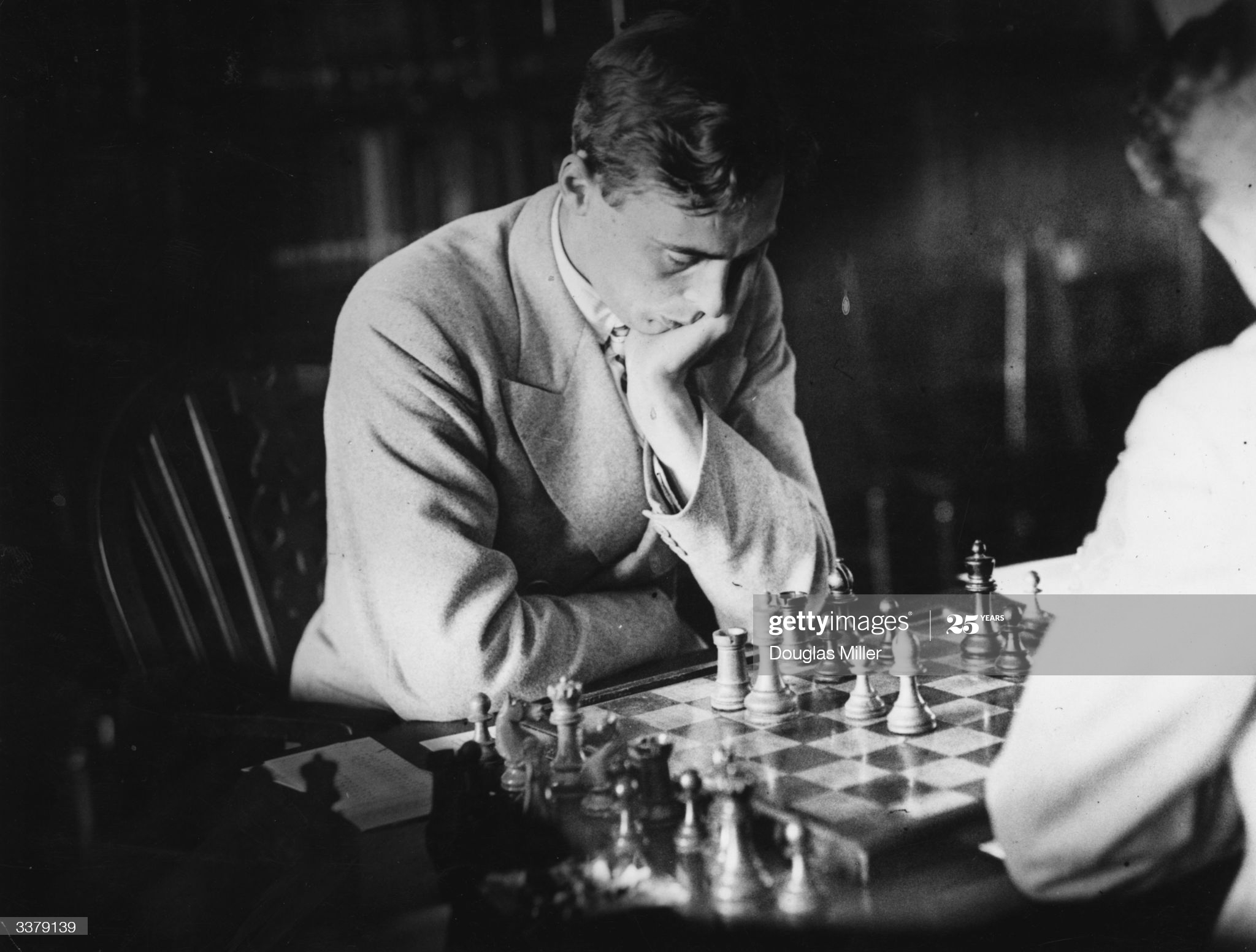
From The Oxford Companion to Chess by Hooper & Whyld :
International Master (1950), International Correspondence Chess Master (1970). Born in Cork, he settled in England as a boy. In spite or because of his intense application at the board his tournament performances were erratic. From about 1937 to the mid 1950s he was regarded as the strongest player in Great Britain, although he won only two (1938, 1956) of the 13 British Chess Federation Championships in which he competed; he played for the BCF in six Olympiads from 1933 to 1958. Holding a senior post at the Foreign Office, he was not permitted to play in countries under Soviet control or influence; but when he did compete abroad he achieved only moderate results. His best tournament achievement was at Hastings 1937-8 when he was second (+4=5) equal with Keres after Reshevsky ahead of Fine and Flohr; but he is better remembered for his tie with Bronstein for first prize at Hastings 1953-4. He won his game against Bronstein in 120 moves after several adjournments, and the outcome became a kind of serial in the press, arousing great national interest in the game. Alexander was the author of several books on chess, notably Alekhine’s Best Games of Chess 1938-1945 (1949) and A Book of Chess (1973).
From The Encyclopaedia of Chess by Anne Sunnucks :
For many years the chess correspondent of The Sunday Times, The Spectator (pseudonym Philidor) and the Evening News. There was probably no “chess name that was better known to the non-chess-playing element of the British public than that of Hugh Alexander. His victory over Russian Grandmaster David Bronstein at Hastings in 1953, after a struggle which lasted for 120 moves and took 13 hours, made chess front page news in the British press.
Born in Cork on 19th April 1909, Alexander picked up the game at prep school at the age of 8. In 1926 he won the Boy’s Championship, later to be recognised as the British Boy’s Championship, at Hastings. After coming down from Cambridge University, where he won the university championship four times, Alexander taught mathematics at Winchester College from 1932 to 1938. He later joined the Foreign Office.

One of the few British players who might have reached World Championship class if he had chosen to devote sufficient time to the game, Alexander was at his best when he faced a top class opponent.
During his chess career, he scored victories over two World Champions Botvinnik and Euwe, and he beat a number of other Grandmasters, international tournaments were all at Hastings where he came =2nd in 1938 with Keres, half a point behind Reshevsky and ahead of Fine and Flohr; 1st in 1947 and =1st with Bronstein in 1953. In 1951 tournament he came =5th.His other hobbies included bridge, croquet and philately, He was the Author of Alekhine’s Best Games of Chess 1938-1945 (Bell), Chess (Pitman) and joint author with T.J. Beach of Learn Chess; A New Way for All (Pergamon Press);

A Book of Chess (Hutchinson) 1973; The Penguin Book of Chess Positions (Penguin) 1973.

Here are further third party articles of interest :
A Tribute to Hugh Alexander by Sir Stuart Milner-Barry
Conel Hugh O’Donel Alexander: A Personal Memoir by Sir Stuart Milner-Barry
Here is an interesting article on his film appearance.
Here is his detailed Wikipedia entry
According to C.N. 10817 Hugh lived at various addresses when working at GCHQ :
- Brecken Lane, Cheltenham.
- 28 King’s Road, Cheltenham, GL52 6BG.

- Old Bath Lodge, Thirlestaine Road, Cheltenham, GL53 7AS.
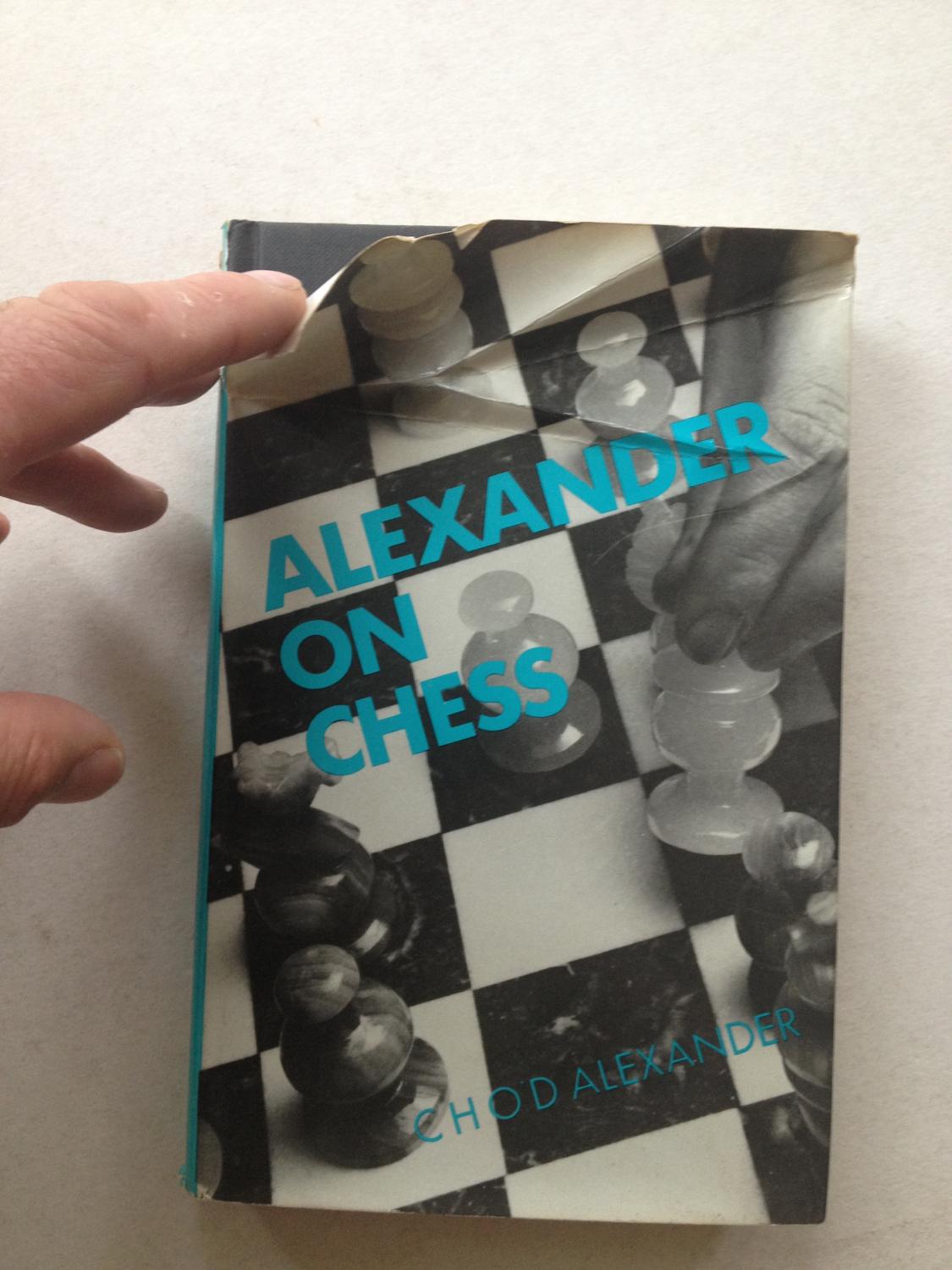

Golombek and Hartston, The Best Games of C.H.O’D. Alexander (1976).
Happy Birthday WIM Cathy Warwick (06-ii-1968)
Birthday of WIM Cathy Warwick (06-ii-1968)
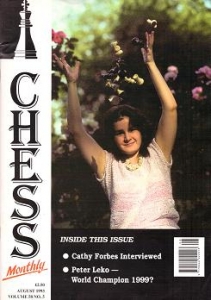
Here is her Wikipedia entry
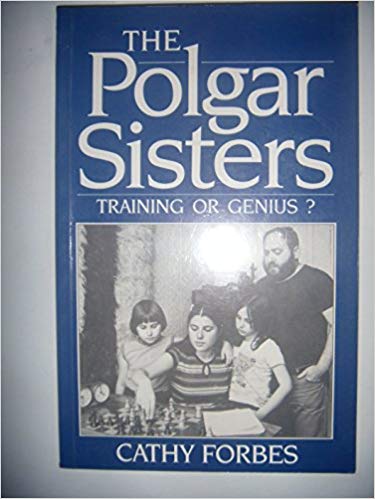
Bobby Fischer, the Holy Grail – A Balkan Odyssey
